

photo© www.svdelos.com
Let us help you go solar aboard, start enjoying c lean, quiet & renewable po wer.
At Sun Powered Yachts we hope to inspire and inform yacht owners on the benefits of going solar with SunPower & Maxeon. We're here to answer any questions you may have.
With a background in sailing & solar, and also from living off-grid for 11 years in Hawaii, we have the knowledge to help you with your solar install. Find out more about us
In 2021-2022 we spent 15 months as a family living aboard our sailboat, a Dufour 382 sailing from Corsica to Cancun and more recently to Florida & Bahamas. An intrepid adventure of over 7,000NM visiting 12 countries along the way. We're available for solar consultations with SunPower & Maxeon panels in stock in the USA ready to fulfill orders.
Aloha, Katie & Lyall
+1 808 825 2670
info@sunpower edyachts.com

Join over 5,700 people receiving our quarterly email updates
Thanks! You will receive our next email update . Follow us on Facebook & Instagram for latest news

SunPower ® 100 Watt
Maxeon ® a ir 3 30 watt.

SunPower ® 50 Watt

Maxeon ® 415 Watt -R (all black)

Maxeon ® 475 Watt

Maxeon ® 470 Watt
Choose your maxeon ® solar panel bundle, fixed frame panel bundles.

1x 415 Watt bundle

1x 470 Watt bundle

1x 475 Watt bundle

2x 415 Watt bundle

2x 470 Watt bundle

2x 475 Watt bundle
Visit our shop for flexible & fixed frame bundles*, *at sun powered yachts we only sell premium cosmetic quality sunpower® e-flex panels. our inventory is warehoused in arizona, please visit our shipping policy for full details , 1% for the ocean, we are committed that 1% of your order with us goes directly to support the papahānaumokuākea marine debris proj ect ( pmdp ) in hawaii. the 2024 clean up season began in april with a 19-day mission to midway atoll removin g an incredible 70,080 lbs of marin e debris .

Federal Tax Credits

Have you heard about the Federal Tax Credits that you could take advantage of for going solar on your boat? Yes, your boat!
Do you have a head, galley & bunk aboard? Then you may qualify and t he Federal Tax Credit has now gone back up to 30% of the total cost to put your solar system in place.
This can include solar panels, controllers, wiring, labor etc. and can now more easily include batteries - maybe time for that lithium upgrade to Battle Born
SunPower Advantage s

Silent power
Solar panel systems burn zero fuel and have no moving parts. They are clean and silent, producing no atmospheric emissions or greenhouse gases that are harmful to the earth. Enjoy those quiet anchorages with no more noisy engine/generator running just to charge your batteries.

Easy install
The simple and easy installation of SunPower® E-Flex panels on your bimini, dodger, or deck, will reduce costs of adding an expensive davit or custom racking and mounting solution for traditional large & heavy fixed frame solar panels.

Highest quality
Incredibly reliable and easy to maintain. With no moving parts, visual checks and servicing easily keep systems operating. Solar panels are robust & durable with a junction box designed with a high level of protection from dust & water ingress.
SunPower Solar Panel Installs

Follow us on Instagram @sunpoweredyachts
News & reviews.

Maxeon to open new factory in USA
Great news! Maxeon recently announced (Aug 10th) that they will be opening a 3 Gigawatt factory in New Mexico. Construction will begin Spring 2024 and so by 2025 that's high efficiency Maxeon solar panels being made right here in the USA!
Read our news post for full details.

For sale - 'Blake' our Dufour 382
Are you looking for a boat already set up to go cruising? We have our 2016 Dufour 382 GL 'Blake' listed for sale on Yacht World . She is the adventure version with taller mast/deeper keel, 950W of SunPower flexible solar panels, a DC watermaker, new dinghy and plenty of safety gear. Currently in Freeport, Bahamas. For more details contact us directly
T: 808 825 2670

Check out our Install List
We have added an Install List page to our website which currently has over 130 installs from our customers. Get inspired by what other boat owners have added for SunPower & Maxeon solar panels.
Maybe you own a Lagoon 400 or a Morgan 41 and wonder what panels might fit aboard, check out the list to see how other owners have gone solar aboard.

Calico Skies 3x 410W
Bill & Grace sail Calico Skies , a Sabre 36, and whilst in Mexico they installed 3x410W SunPower fixed frame solar panels as part of a major upgrade to their arch/davit system.
Check out their YouTube episodes including #177 to see how they get on adding 1,230W (or 1.23kW) of SunPower solar panels.
Calico skies install details
"We made 7.2kWh yesterday out of our panels, what an upgrade!"
Bill & Grace

SV Delos 3x 410W + flex
Brian & Karin of SV Delos installed 3x410W SunPower fixed frame panels when on the hard in Mexico ( YouTube Ep.407 )
Combined with their SunPower E-flex panels, which have been aboard for ~3 years ( YouTube Ep.262 ) they now have just under 2,00W of solar keeping them powered up in the Pacific - awesome!
SV Delos install details
"Love our new 410W panels and they're the same size as the old 300W ones - woohoo!"
Brian & Karin

Sailing La Vagabonde 2x 470W + flex
Riley & Elayna of Sailing La Vagabonde have been working on their new Rapido 60' trimaran and added 2x470W Maxeon fixed frame panels.
They also have 6x170W SunPower flex panels they can deploy when needed. With a 48V battery bank these panels are wired in series YouTube episode
SLV install details
"Thank you, the solar panels have been absolutely incredible."
Riley & Elayna
Testimonials

"So now I generally
Don't bother hooking, up to shore power".
Thanks for all the help in planning my solar project for my boat. The two 170W flexible panels fit well on my Bimini and now I generally don't bother hooking up to shore power. Although I haven’t had any long trips since my installation I have done a few day trips. And even with fridge, radio, plotters, autopilot and occasional radar it seems that these panels are keeping up with my usage. The advice and service has been great. Thanks again.
Jeanneau Sun Odyssey 469

"It is by far the best decision I made "
I bought a solar system from Sun Powered Yachts in 2020. It is by far the best decision I have made for the electrical system on my boat. I would (and do) recommend Sun Powered Yachts to anyone looking to add solar to their boat.
Endeavour 33

"Terrific customer service, always responsive"
The process of researching a solar solution for my Beneteau 41 was simplified & clearly understood once I discovered Sun Powered Yachts. Terrific customer service, patient, always responsive with guidance and products that just work. Being a novice at setting up a solar system, I had many questions along the way, and the team at Sun Powered Yachts were always there to answers my questions and provide support.
Beneteau 41
Become a more sustainable sailor with SunPower® & Maxeon® solar panels
Sunpower® solar videos, jodi endicott environmental art june 2024.

Our Beautiful Boat Home (FULL BOAT TOUR)

Mastering OFF-GRID Living: 4 Key Things Every Sailor Should Know ⛵️ Sailing Vessel Delos Ep. 441

New Feature: Prioritising solar or wind when on shore power Victron Energy
GOING SOLAR - Video by Profiles in Dust (2023)

Custom Double Flexible Solar Panel Mounting System (No Drilling, Welding, or Permanent Adhesive)

Silent Yachts
Creators of the world’s first series produced, solar-powered electric yachts.
Unlimited Range
Noiseless cruising, zero emission, minimal maintenance, pioneering solar powered yachting since 2009.
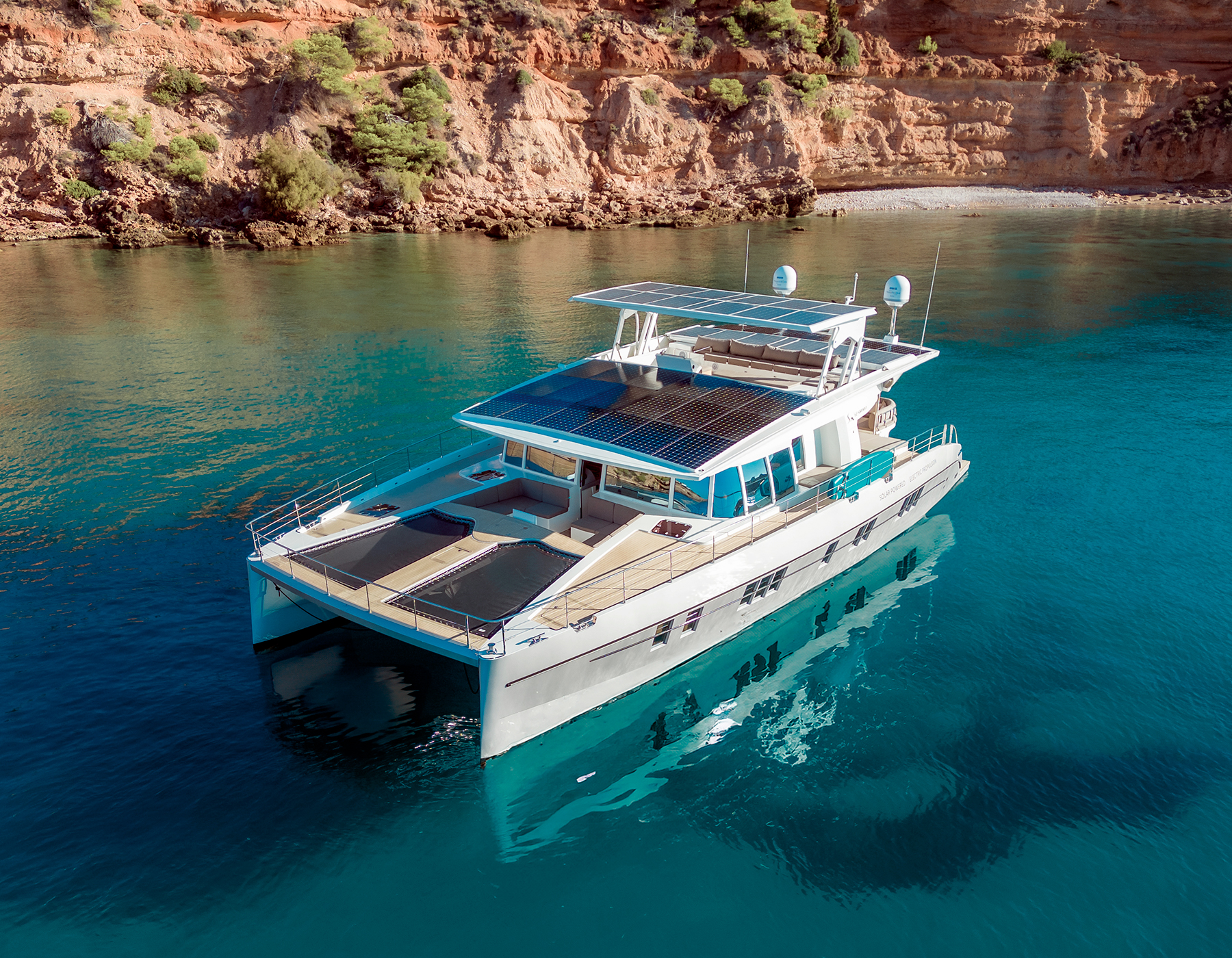
The Original Solar Yacht
As the original inventors of series produced solar-electric yachts, we pioneered this innovative approach. Our first model, the Silent 64, was launched to the market in 2016, several years before any other shipyard considered the possibility of going electric.
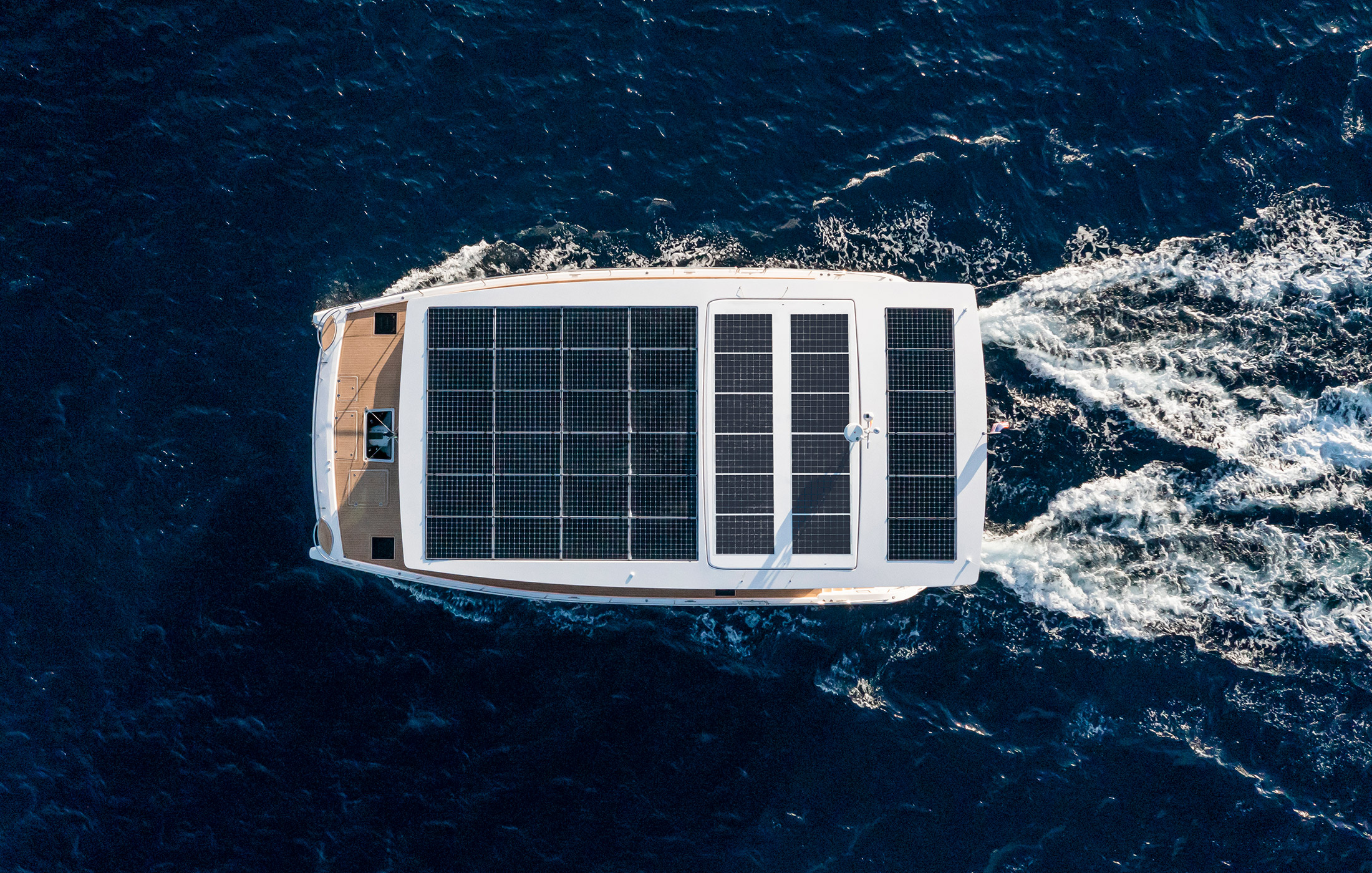
Leading Technology
Our founders began to research alternative energy sources to power yachts during the mid 1990s. Today, the technology of our in-house developed solar-electric drivetrain has been perfected and is multiple generations ahead in terms of reliability, performance and efficiency.
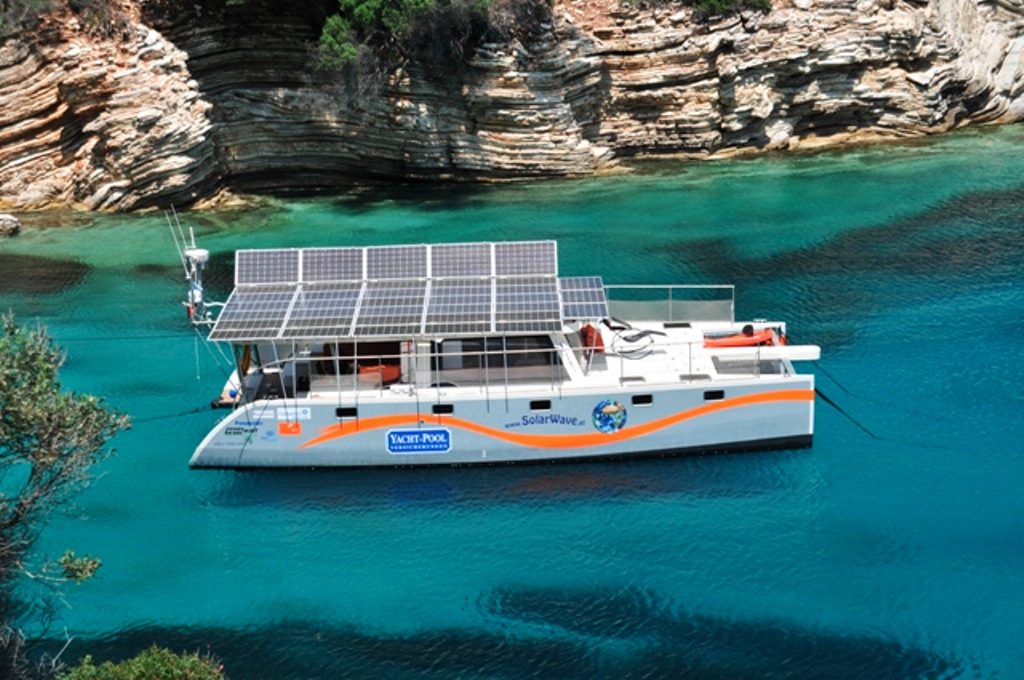
Historical Track-Record
In 2009, the Solarwave 46 was launched as our first prototype of a fully solar-electric, self-sufficient ocean-going catamaran. Since then, our electric yachts have cruised many 10.000s of nautical miles, performing flawlessly during a variety of weather conditions.
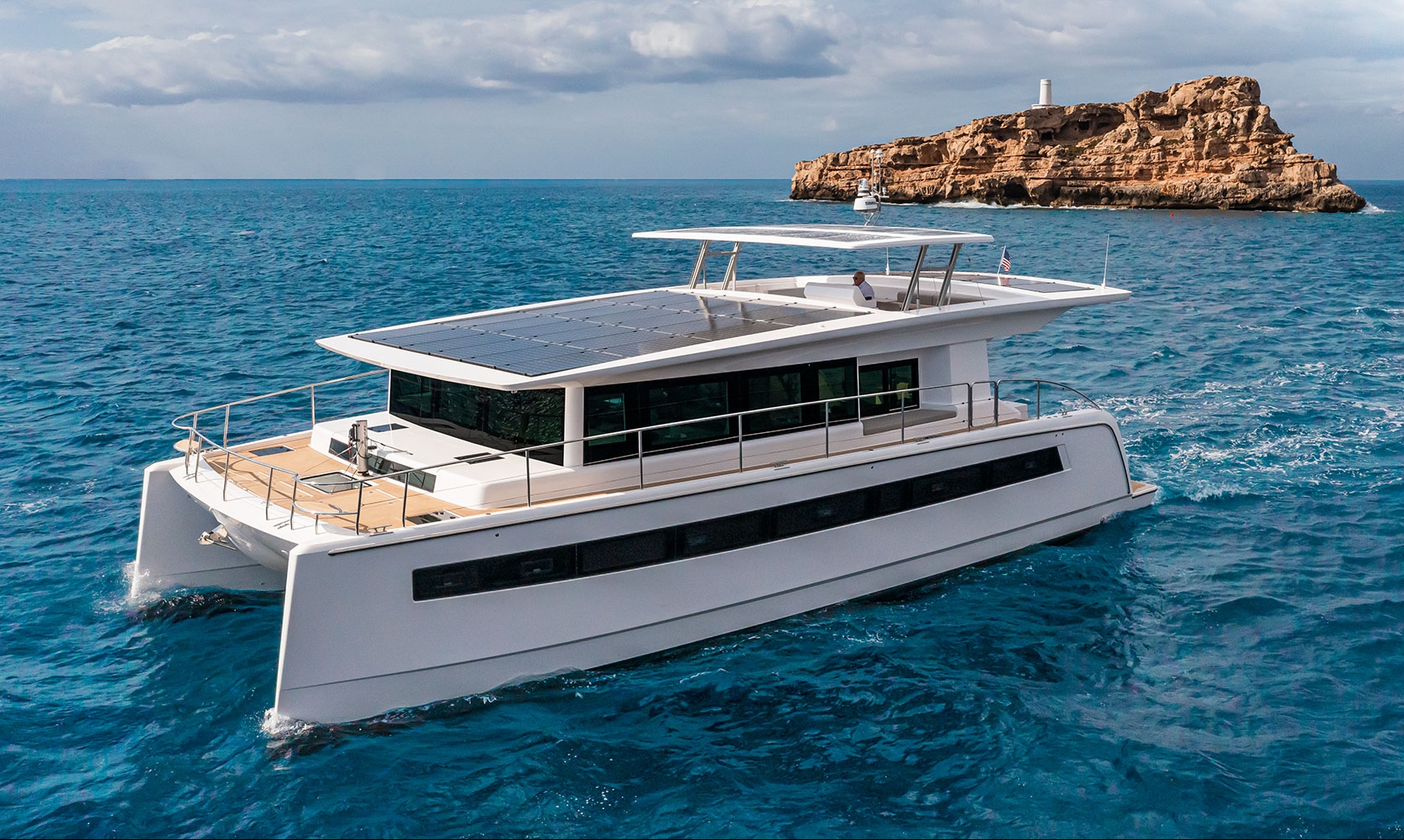
Enabling Self-Sufficiency
What differentiates a Silent is the unprecedented level of autonomy provided by our yachts. Being able to produce your own energy enables a fully self-sufficient lifestyle on board. Travel the oceans sustainably while making them your infinite playground.
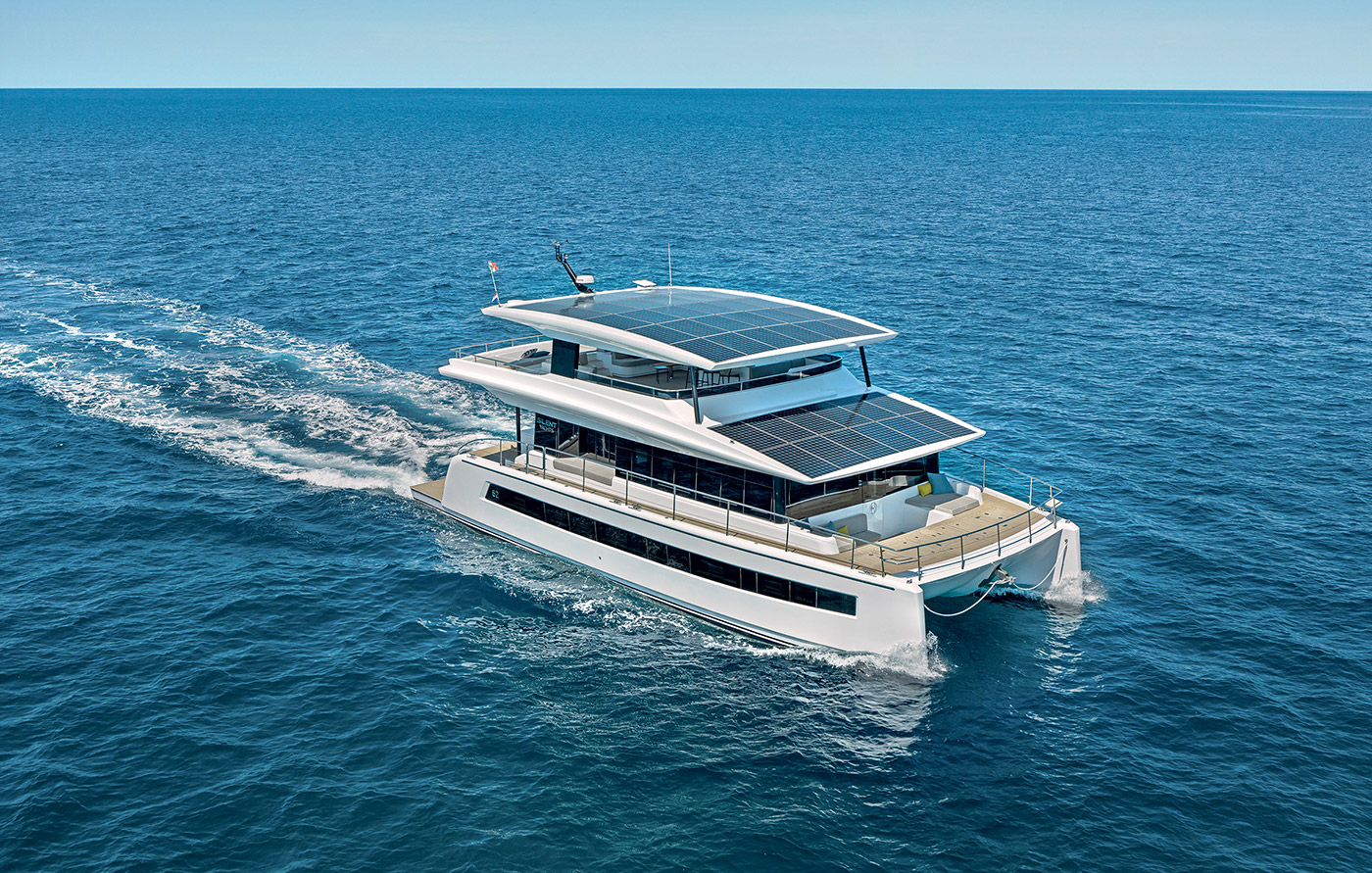
The award-winning entry to solar-electric yachts.
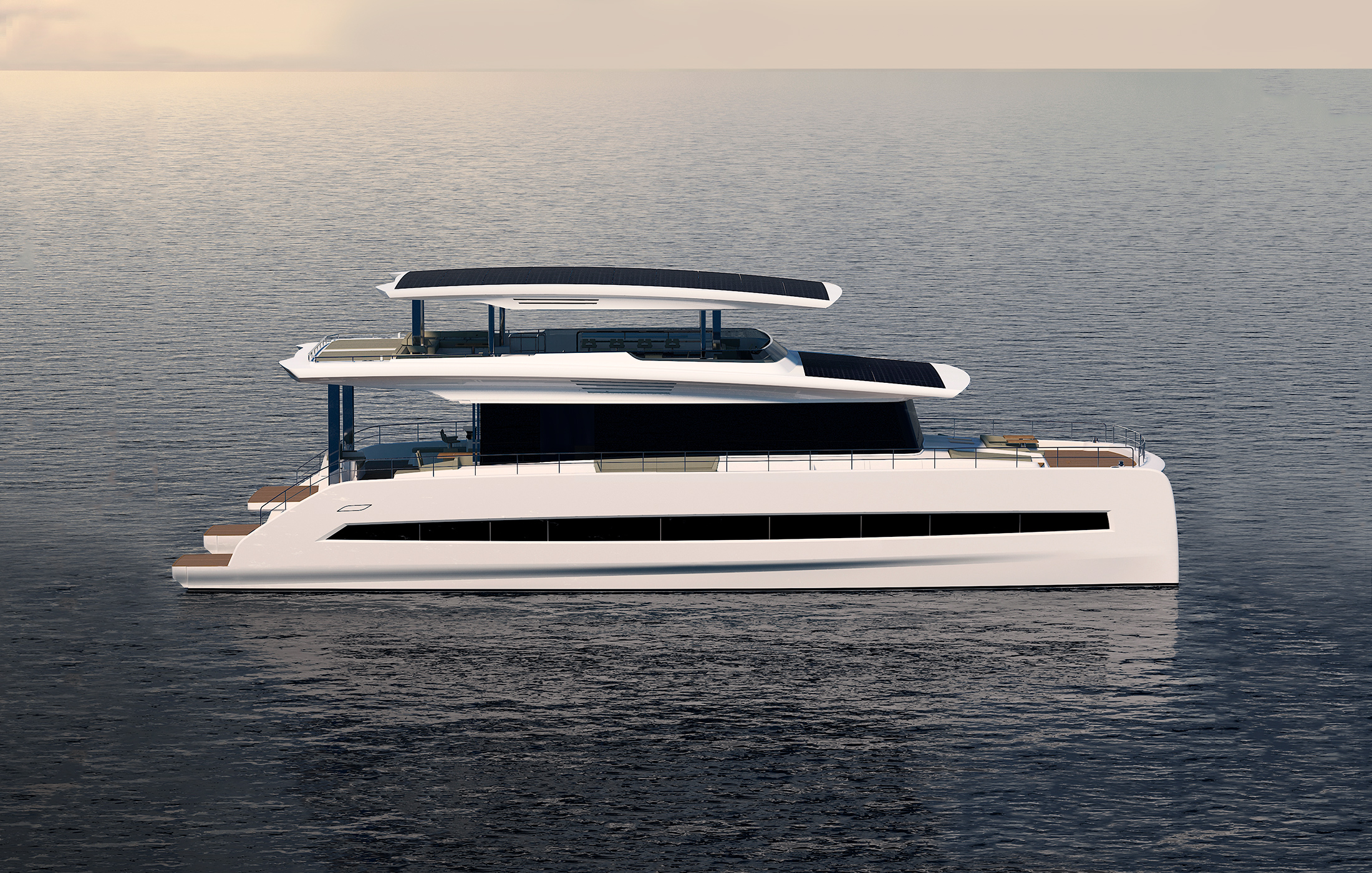
Timeless design meets state-of-the-art technology.
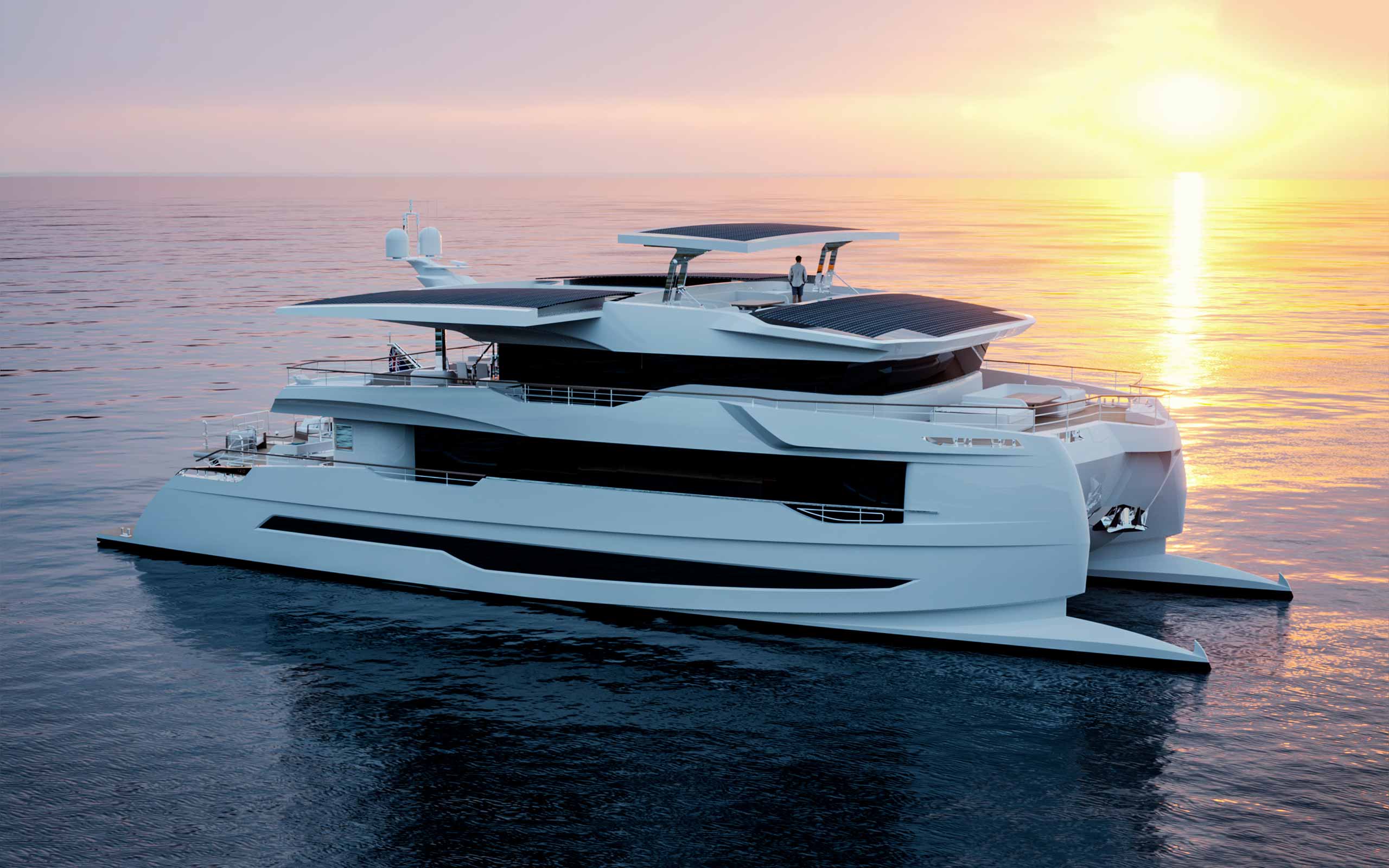
120 Explorer
The boldest expression of solar powered yachting yet.
What Makes Us Unique
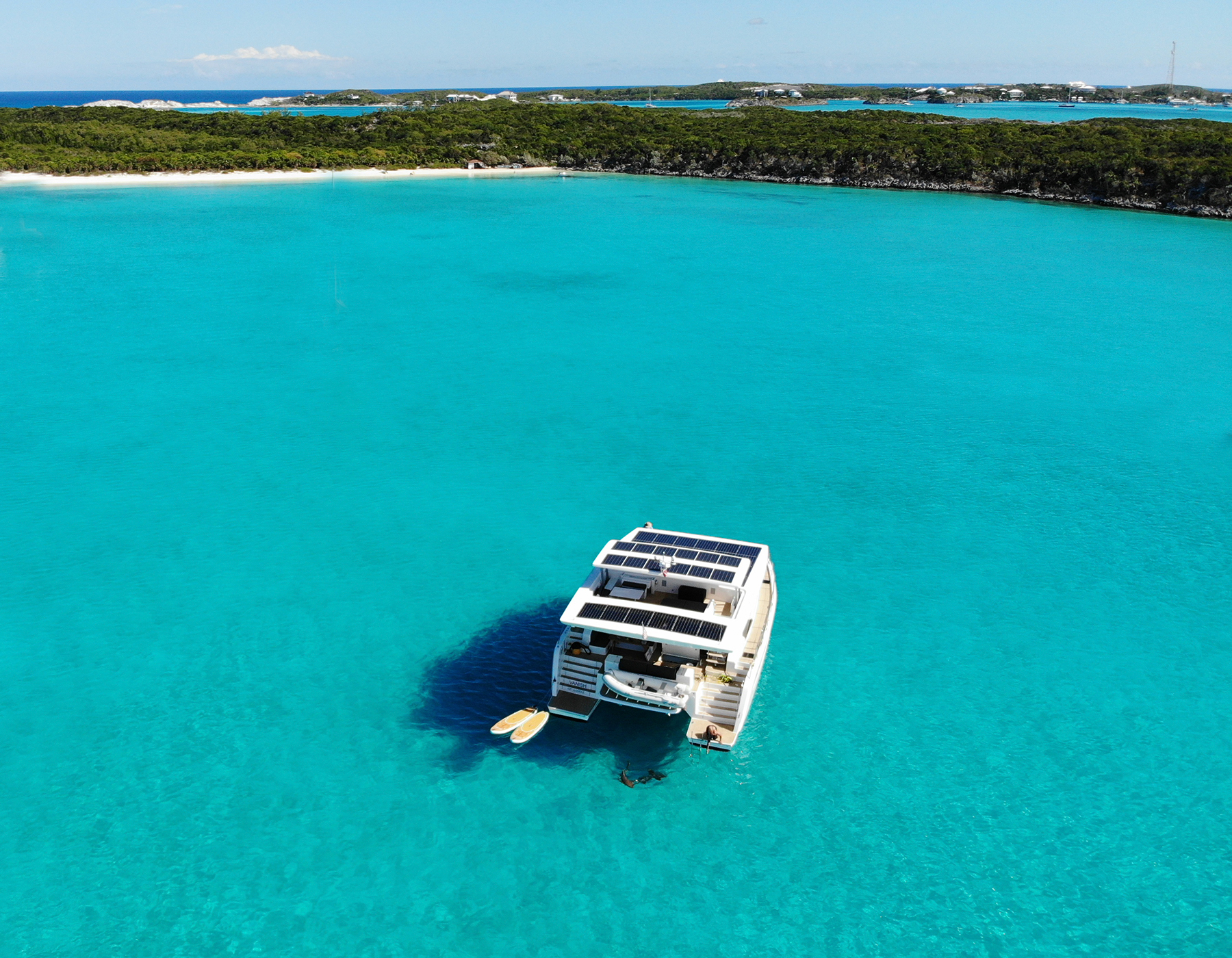
The tranquility on board of our yachts is unique. A lack of noise, fumes and vibrations create a deep connection with the sea. Luxury and sustainability finally merged into a holistic experience, working hand in hand with nature by minimizing the impact on the marine environment without compromising comfort.
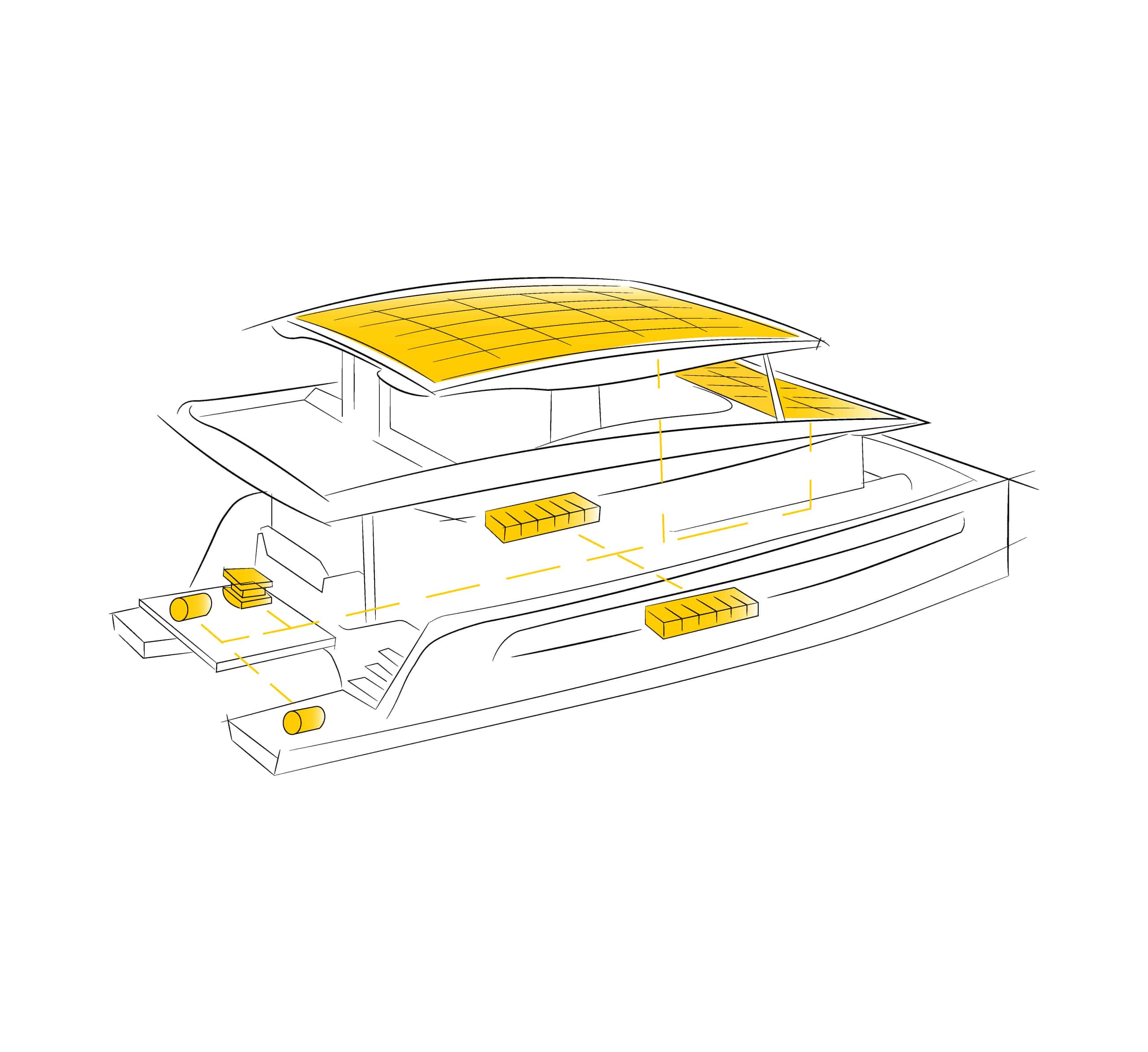
For optimal performance and efficiency, our solar-electric drivetrain integrates seamlessly with all onboard systems. Compared to fossil fuelled powertrains of motoryachts, electric powertrains have very few moving parts, resulting in minimal maintenance, maximum reliability and significantly lower running costs.
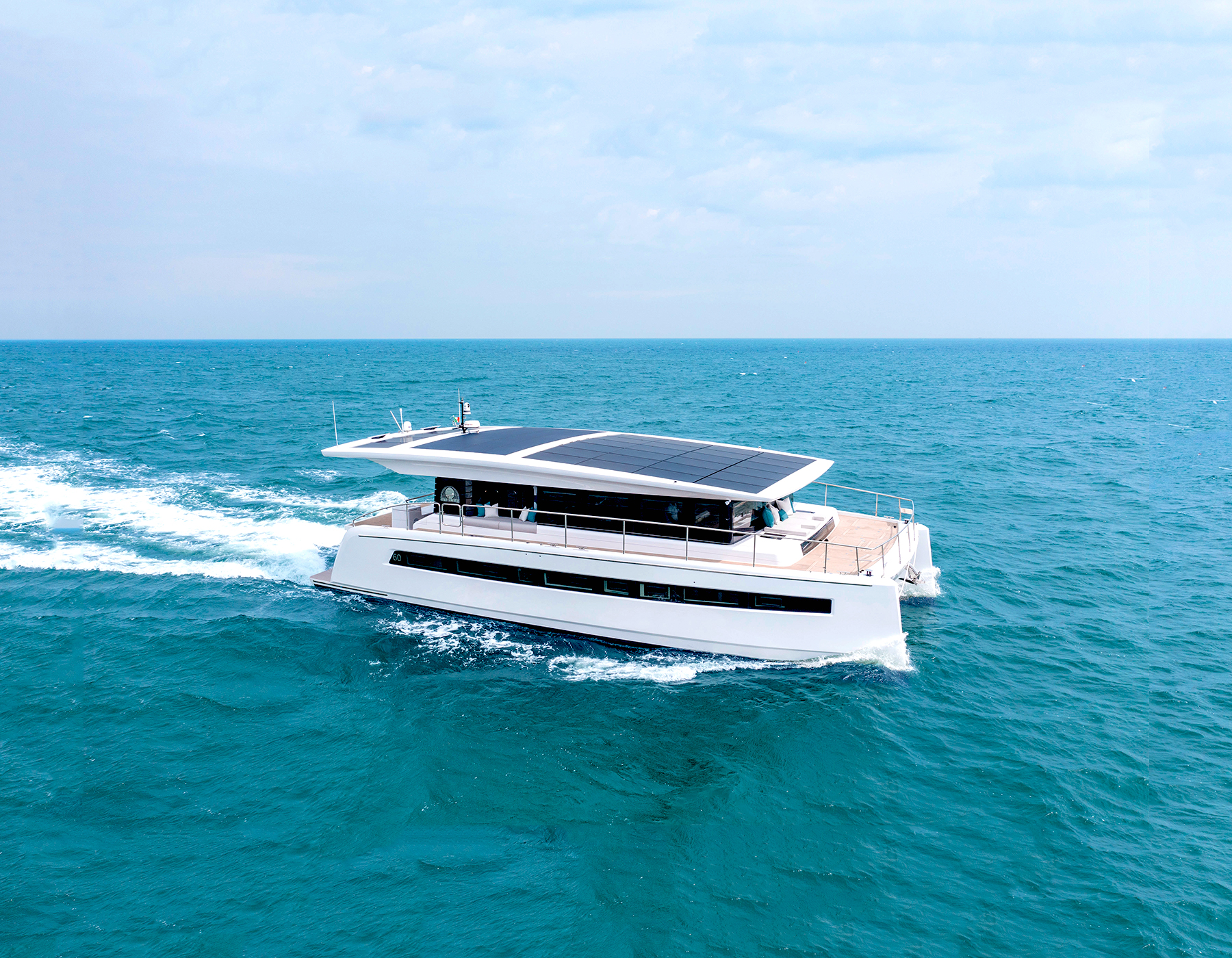
The ability to recharge your own batteries with the sun marks a new era of freedom. Depending on cruising speeds and weather conditions, a Silent has virtually unlimited range, enabling you to live a fully self-sufficient lifestyle on board. Unbound by the limitations of fossil fuels, you are free to explore the horizons.
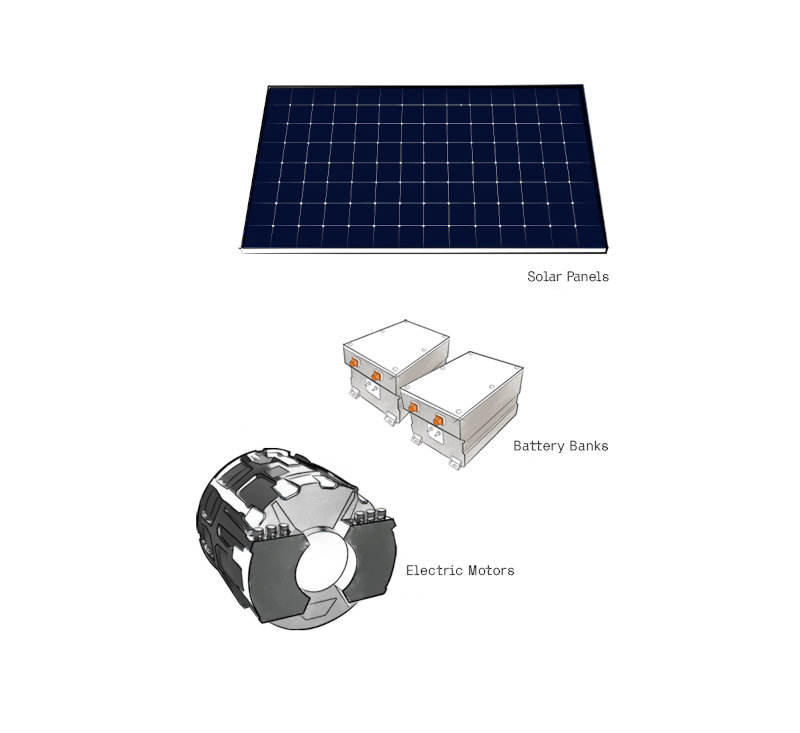
The technology powering our yachts today has been pioneered by our founders almost three decades ago. Continuous upgrading and steady optimization of the entire system are some of the key reasons our in-house developed solar-electric drivetrain offers a comprehensive portfolio of assurances and warranties.
Why Silent Yachts
A sensible approach to yachting which works in self-sufficient harmony with nature and creates a completely new experience on board.
Tech Corner
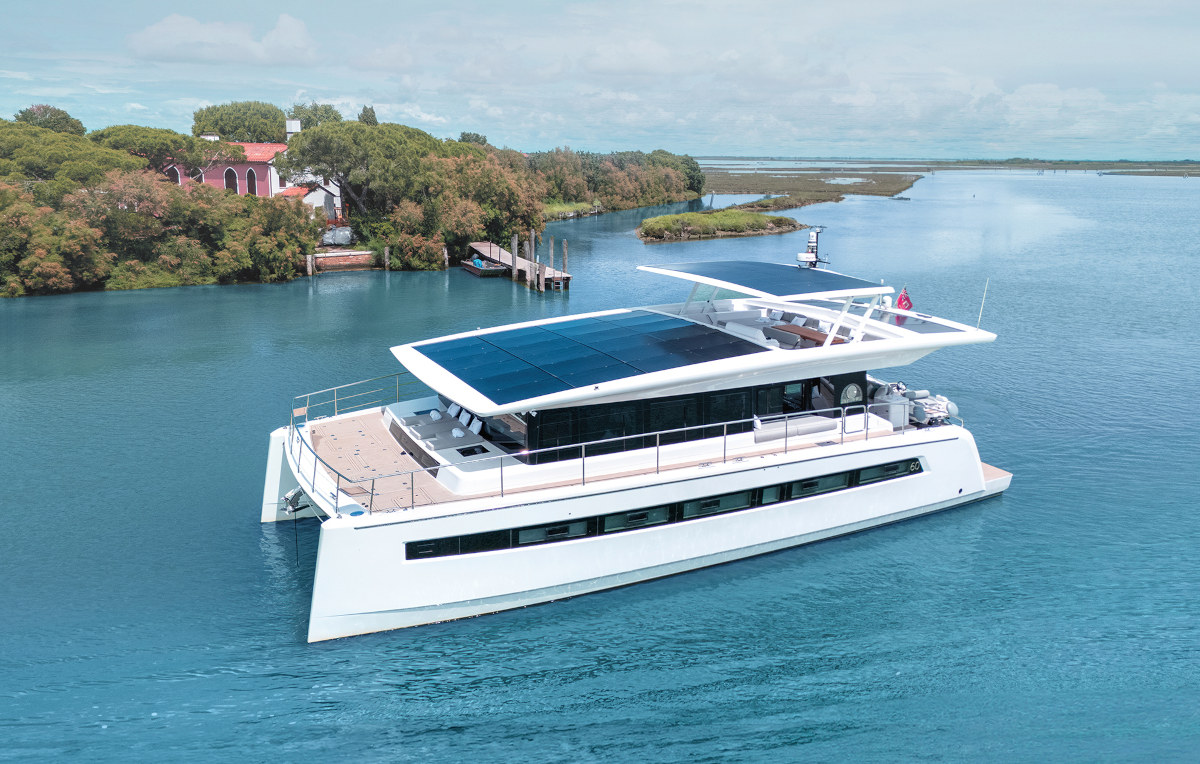
Why a Solar Powered Yacht?
Let’s break down the advantages of harnessing the sun’s energy for yacht propulsion: solar power offers remarkable efficiency, significant environmental benefits, and an unmatched synergy with the yachting experience. Join us as we dive into the future of sustainable yachting and discover how solar-powered yachts are revolutionizing the seas.
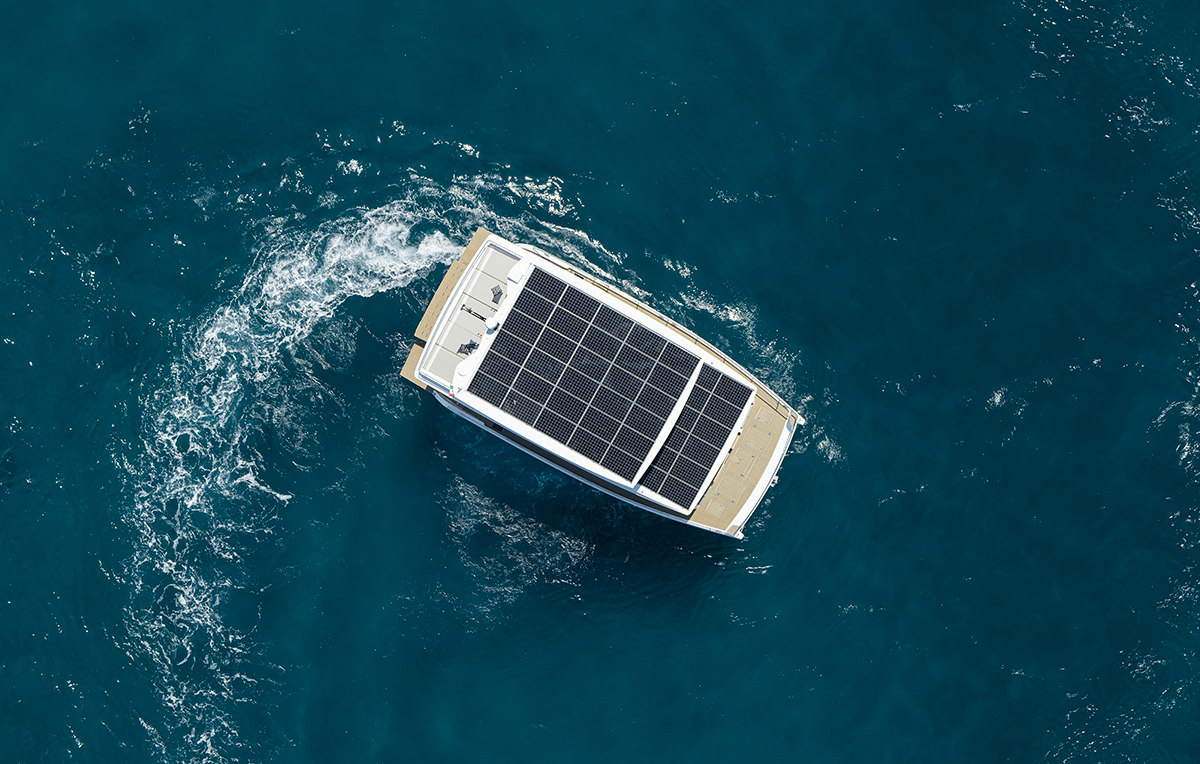
Living on a Silent 62 Solar Electric yacht
Silent Yachts’ range is designed to harness the power of the sun, providing green energy and silent cruising. But what can owners truly expect? How much power does the Silent 62 use while cruising? In this article, we evaluate a typical day onboard the Silent 62, based on actual data from our yachts.
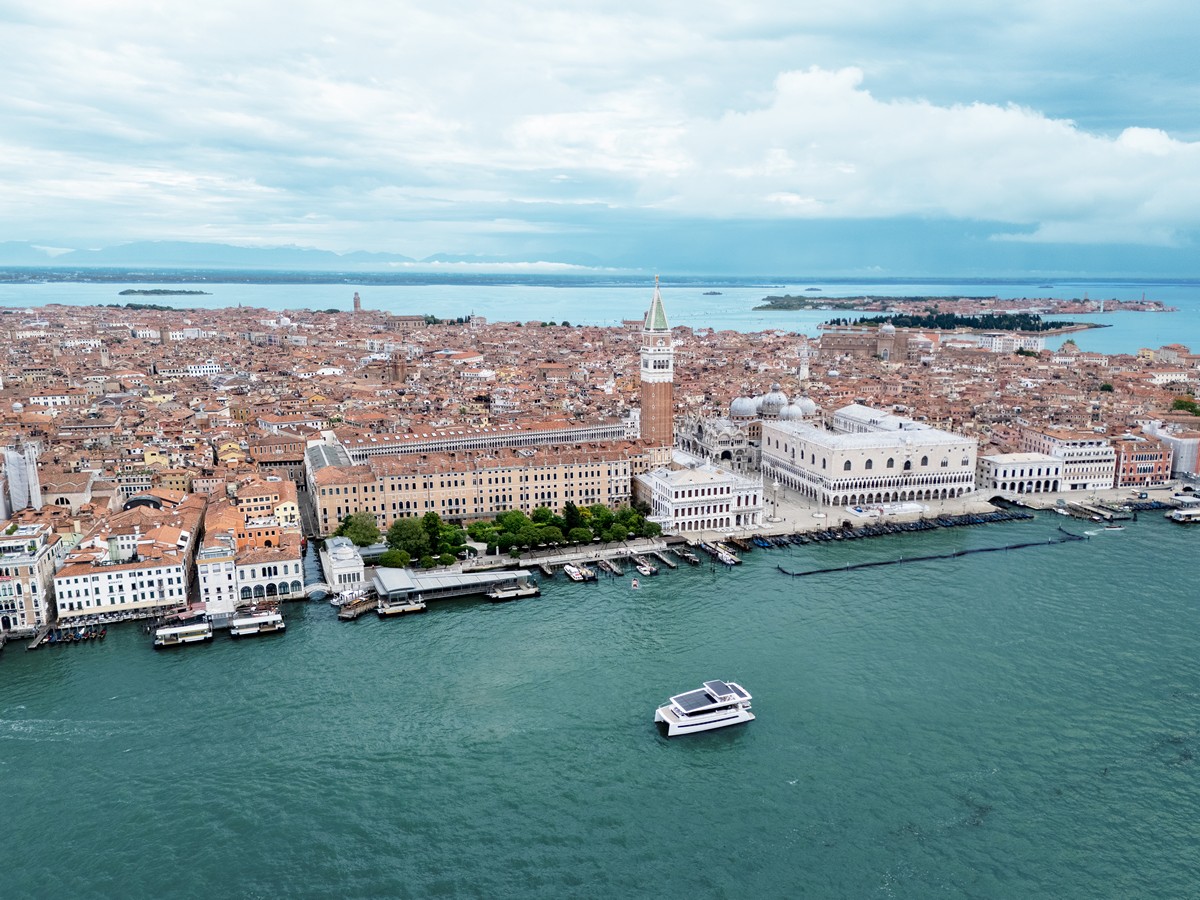
Silent Yachts’ shining debut at the Venice Boat Show 2024
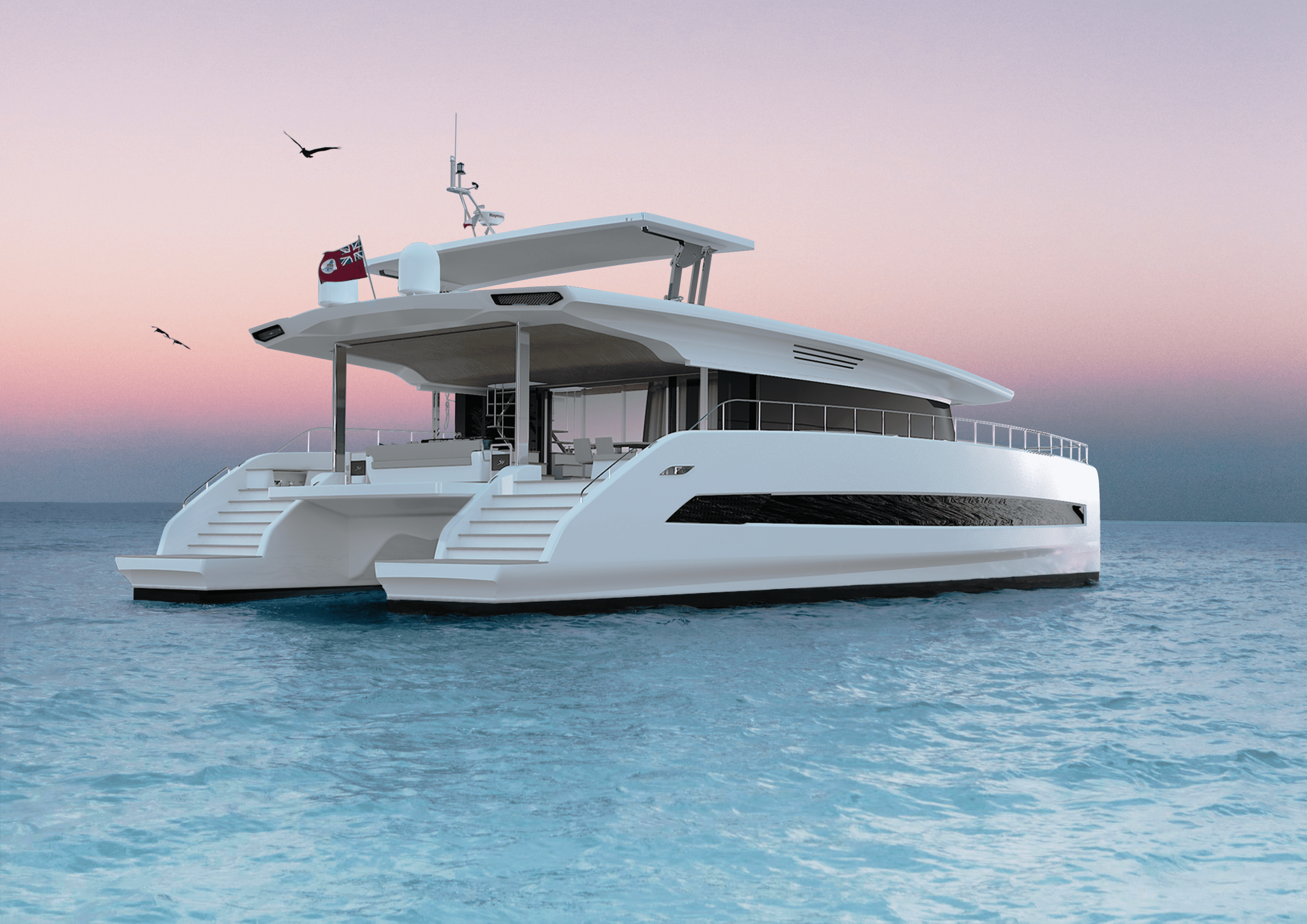
Silent-Yachts emerges stronger under new ownership
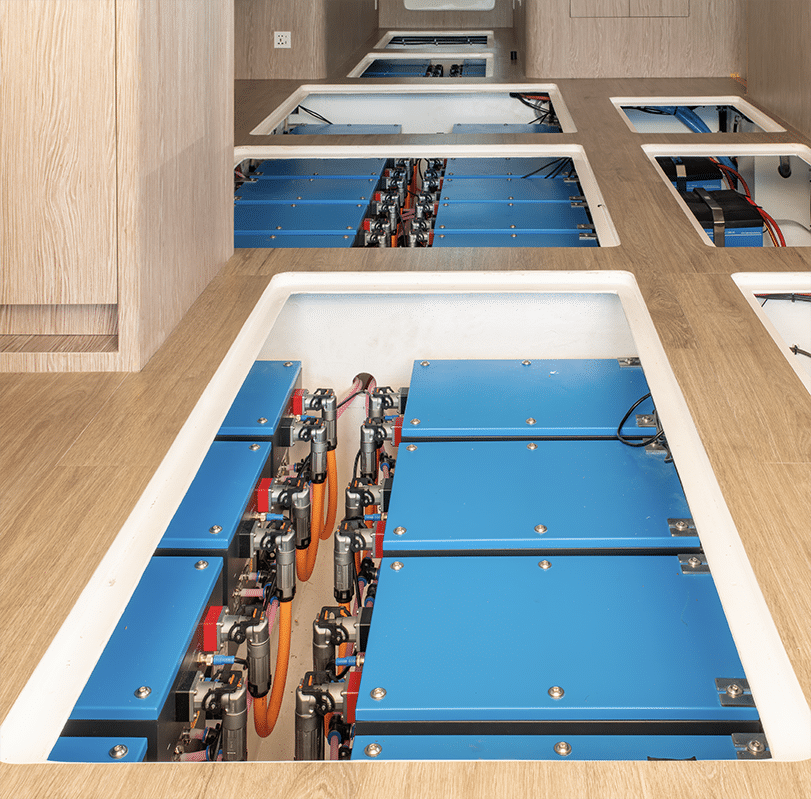
New Silent Drivetrain
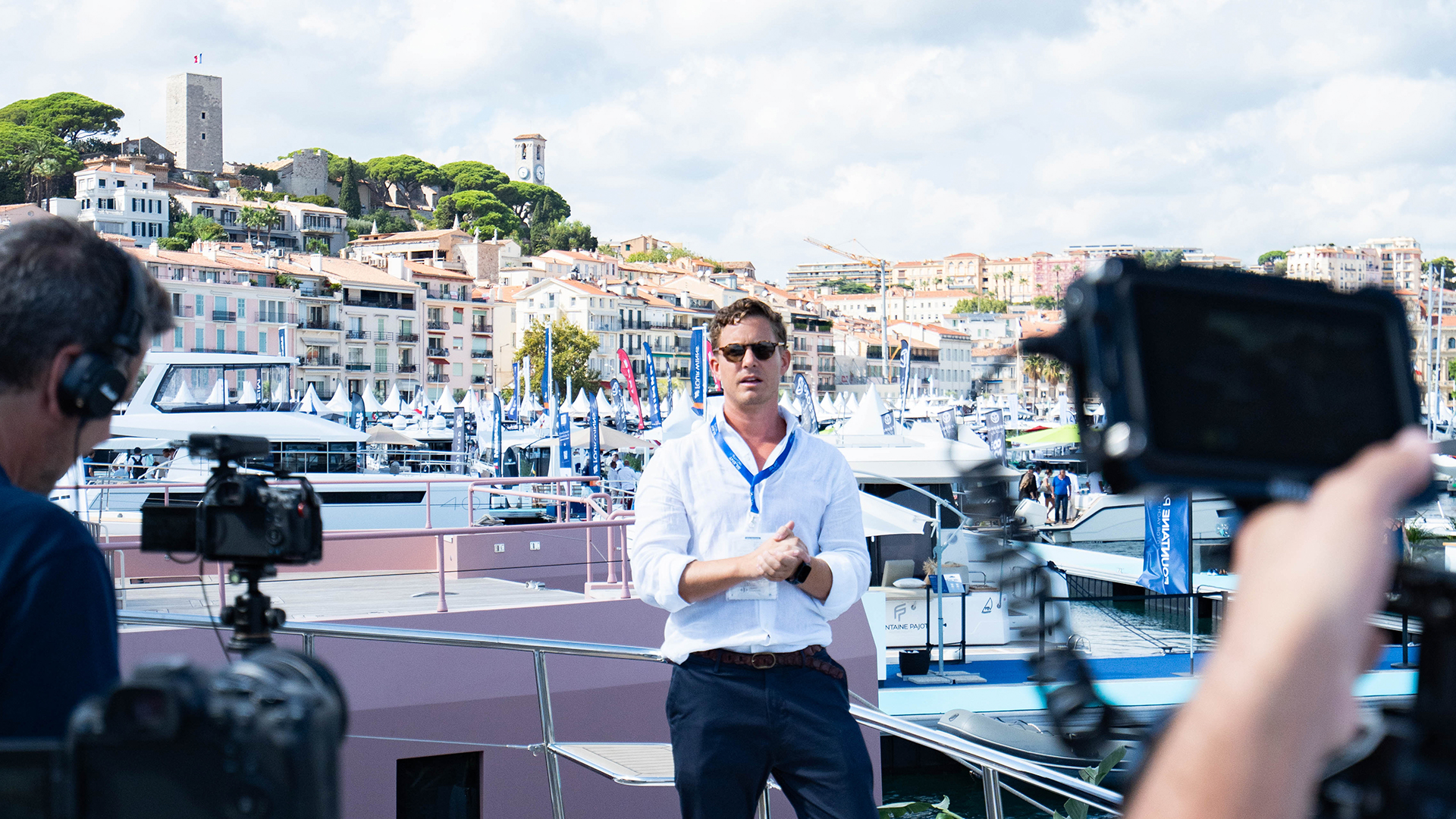
Tech shorts 2023
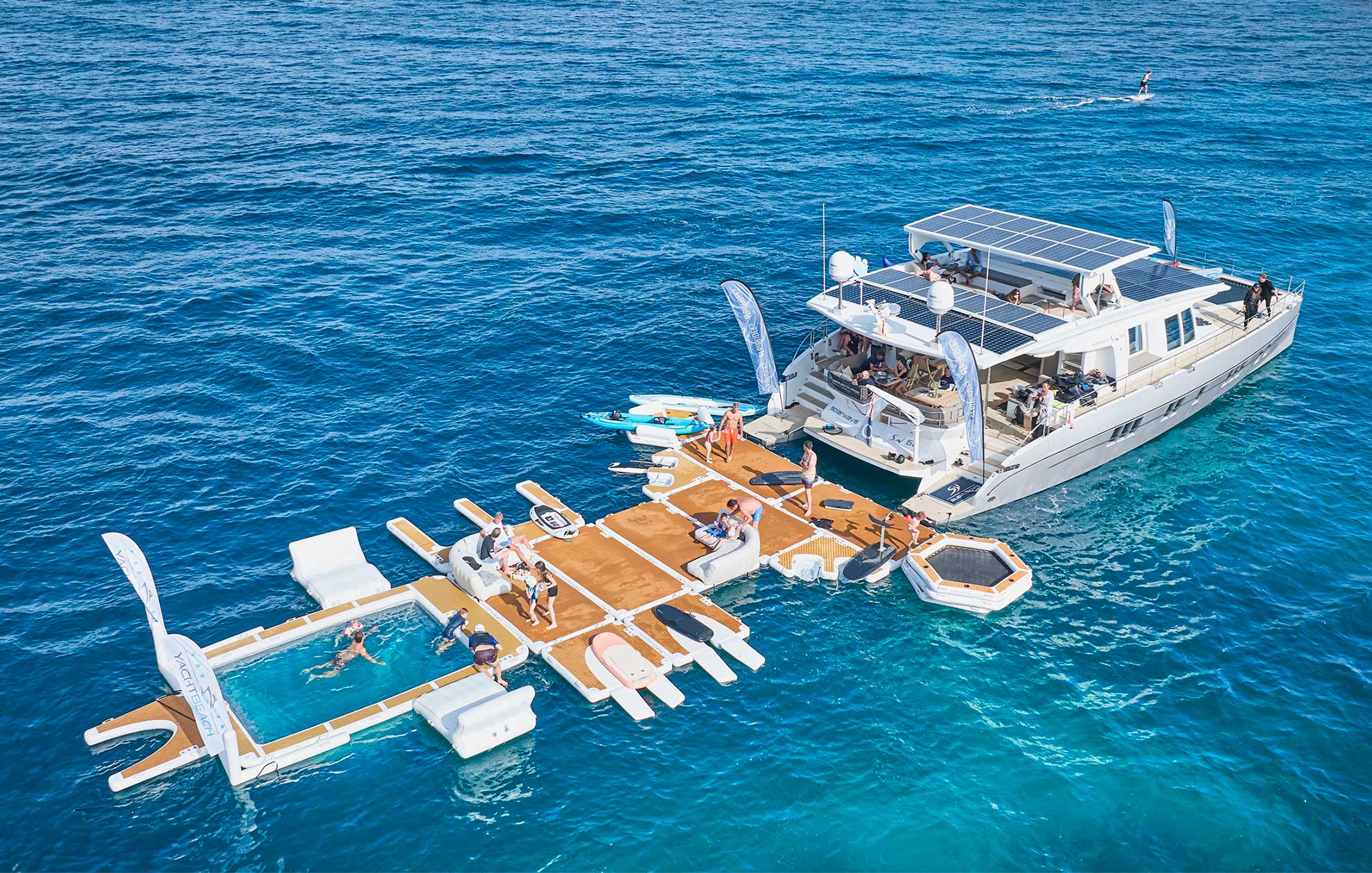
Electric power event on the water
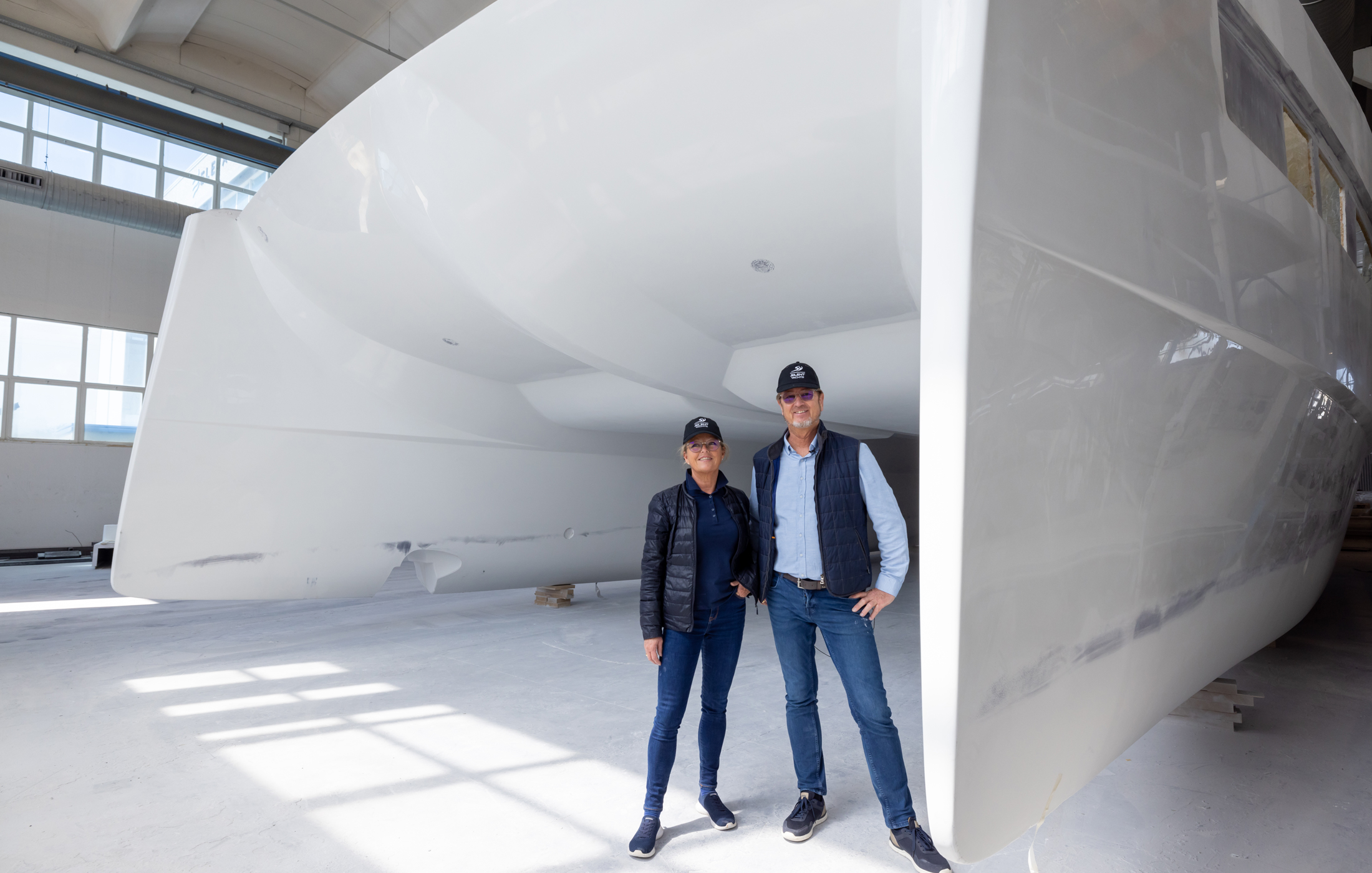
Shipyard tour Italy by Michael & Heike
“The Tesla of the seas! An amazing founding couple, a highly innovative product as well as a really cool story behind it. Furthermore, a lot of love and attention has been invested into every single detail – truly impressive!” Frank Thelen / TV Personality, Founder, Angel Investor & Disruption Expert
While the present has brought us the dawn of smart cars, I strongly believe the future will bring us solar powered smart boats – and I definitely want to be at the frontline of that journey. Michael Jost / Former Head of Group Strategy of Volkswagen Group
The idea of sailing while charging your own battery is super powerful to me – solar powered sailing is the perfect love story! Jochen Rudat / Former Tesla Central Europa Director, Advisory Board Silent Group
Elon Musk single handedly forced an entire industry to go electric, as a matter of fact if they don’t all go electric now they will soon die. I would like to see the same thing happening for boating. You are not just selling boats – you are the actual leading edge of a crucial and much overdue revolution to sustainable transport!” Klaus Obermeyer / Emmy Award Winner
I am completely excited about solar catamarans. I knew before they are great but now I truly believe this is the future. After so many boats I’ve seen in over 18 years with Boote Exclusiv, this yacht truly blew my mind. Such a silent and peaceful cruising experience – just the way it should be. Martin Hager / Editor in Chief for Boote Exclusiv - Yachts

ACTIVE STORM TRACKER Hurricane and Tropical Storm Information Learn more

Service Locator
- Angler Endorsement
- Boat Towing Coverage
- Mechanical Breakdown
- Insurance Requirements in Mexico
- Agreed Hull Value
- Actual Cash Value
- Liability Only
- Insurance Payment Options
- Claims Information
- Towing Service Agreement
- Membership Plans
- Boat Show Tickets
- BoatUS Boats For Sale
- Membership Payment Options
- Consumer Affairs
- Boat Documentation Requirements
- Installation Instructions
- Shipping & Handling Information
- Contact Boat Lettering
- End User Agreement
- Frequently Asked Questions
- Vessel Documentation
- BoatUS Foundation
- Government Affairs
- Powercruisers
- Buying & Selling Advice
- Maintenance
- Tow Vehicles
- Make & Create
- Makeovers & Refitting
- Accessories
- Electronics
- Skills, Tips, Tools
- Spring Preparation
- Winterization
- Boaters’ Rights
- Environment & Clean Water
- Boat Safety
- Navigational Hazards
- Personal Safety
- Batteries & Onboard Power
- Motors, Engines, Propulsion
- Books & Movies
- Cockpit Confessions
- Communication & Etiquette
- Contests & Sweepstakes
- Colleges & Tech Schools
- Food, Drink, Entertainment
- New To Boating
- Travel & Destinations
- Watersports
- Anchors & Anchoring
- Boat Handling
- ← Technology
What You Need To Know About Boat Solar Panels
Advertisement
Sunshine and boats are a natural together, so why not use all that free energy? Here’s the lowdown on solar panel selection and installation
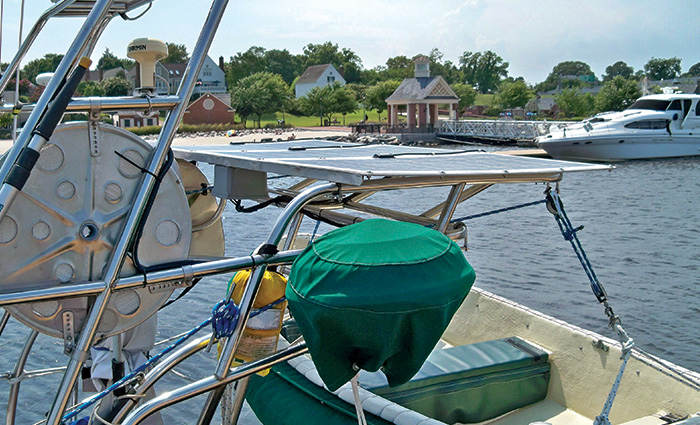
I first embraced the idea of solar power while up a pole (literally) in the Atlantic Intracoastal Waterway replacing dead batteries. It was the early 1980s, and I was maintaining buoys, beacons, and other such Aids To Navigation (ATON) for the U.S. Coast Guard, replacing massive, nonrechargeable batteries with rechargeable solar-powered ones. The higher-ups said the solar rechargeables would last six years – twice as long as the one-shot batteries. As the deck-ape in charge of lugging all those batteries up and down the ladders, my back and I immediately appreciated the whole “free power from the sun” thing, a concept I continue to embrace.
The strategy behind s olar energy onboard is simple: A solar panel converts sunlight into electricity, after which wiring conducts it to your batteries for storage until needed. Solar panels are used to keep batteries or banks charged rather than to power equipment directly. This arrangement allows the panels to store generated power whenever produced, while providing a steady source of power to a piece of equipment even when the panel is producing no power.
While they do require an initial outlay, solar panels can easily pay for themselves in money saved and independence gained over their service life. They’re noiseless, have no moving parts, and they provide free electricity for years with minimal maintenance. Solar panels also have the benefit of being modular, letting you start small and add more as your power requirements increase.
The benefits of solar
Almost any boat can benefit from solar power. Whether at a slip, mooring, or on a trailer, boats can keep their batteries topped off without the need for external power. You can also use solar power to supplement or even replace other onboard charging sources, reducing or eliminating the need to run engines or generators to keep batteries topped off (a wasteful practice that burns fuel while wearing down the costliest pieces of equipment onboard).
While underway, it’s a plus to be able to recharge a dead battery in an emergency – say, to operate a VHF radio or navigation gear. While dockside, solar panels keep batteries charged and vital systems (such as bilge pumps) up and running without the need for shore power.
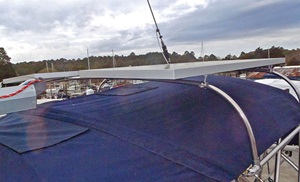
Just about any boat can benefit from solar power, whether it’s to keep batteries topped off or supplement other onboard charging sources.
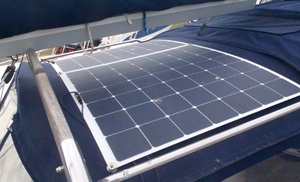
Mount solar panels where they are exposed to maximum sunlight but do not interfere with operation of the vessel.
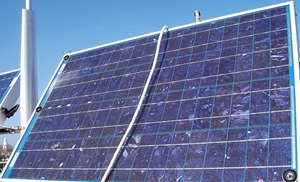
Bottom: Something as simple as the shadow of a line or shroud can reduce or halt output.
Types of panels
Solar panels contain photovoltaic cells – small silicon semiconductor devices that convert sunlight into electricity. Each cell generates between 0.45 and 0.5 volts, depending on exposure to direct sunlight. Cell size determines amperage, with a 3-inch cell producing roughly 2 amps, a 4-inch cell a little over 3 amps, and a 5-inch cell around 5 amps.
Construction-wise, the three main types of solar panels are monocrystalline, polycrystalline, and amorphous (or thin-film) technology.
Monocrystalline panels have been around the longest and remain the most popular. The panels are constructed of thin slices of crystal silicon (each cell is cut from a single crystal) housed in a rigid, aluminum frame and covered with tempered shatterproof glass. The panels have a uniform black, blue, or gray appearance and are generally quite rugged, although they can be cracked or broken if subjected to extreme abuse.
Monocrystalline panels have the longest service life of the three types. With a conversion efficiency of around 17%, they’re also the most efficient and have the highest electrical output per area, but they are also the most expensive.
Polycrystalline cells are sliced from a cast silicon block and have a shattered glass appearance. Built in much the same way as monocrystalline panels, they’re rectangular, giving the panel itself a tiled look. Their life span is similar to monocrystalline panels, and while their conversion efficiency is lower (by 14%), they’re also a bit less expensive.
Amorphous panels are made by placing a thin film of active silicon on a solid or flexible backing (such as stainless or aluminum sheeting) depending on whether the panel is to be rigid-framed and glass-fronted or flexible. Flexible amorphous panels, in which cells are sandwiched between rubber and polymer covers, are light and tough enough that you can walk on them and, in some cases, even roll them up for storage.
This type of solar panel is also better if shade is an issue. With crystalline panels, even the thin shadow of a rope or shroud across one cell can reduce or halt output of an entire module. Amorphous panels have “bypass” diodes that essentially turn off shaded cells and provide a current path around them. Some monocrystalline panels also have bypass diodes, but this feature comes at an increase in cost.
Amorphous panels are the least expensive of the three types, but their efficiency is also lower – around 8%, or roughly half that of a monocrystalline type. This lower output is somewhat mitigated in newer panels, however, which use three-layer construction. Each layer absorbs different colors of the solar spectrum, so the panel will deliver more power longer each day and during lower light conditions than the other two types.
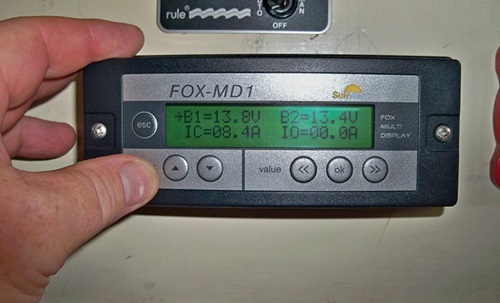
The charge controller should be mounted below decks and as close to the battery as possible.
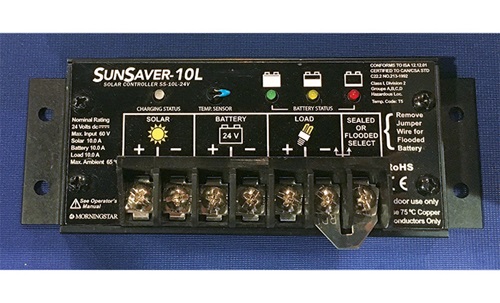
Follow manufacturer instructions for wire connections.
Planning the system
While factors such as cost, mounting options, and output are important, a successful installation depends on knowing what you want the system to accomplish. Is the goal to float-charge a single battery or supplement an overall vessel energy plan? Answering these questions up front will help determine the type, size, and number of panels required.
To understand the process better, let’s walk through the basic steps to determine power requirements and installation considerations for a single solar panel installation. While the example itself is simple, the steps are the same used to plan more complicated installations.
For our example, the goal is to install a solar panel to provide charging for a single 12-volt, 100-amp-hour wet-cell battery used to power an automatic anchor light on a moored vessel.
The first step is compiling a daily power consumption estimate to determine how much solar power is needed.
The daily self-discharge rate for a wet-cell battery is roughly 1%, meaning our 100-amp-hour battery requires one amp every 24 hours just to maintain the status quo. The anchor light draws 50 milliamps per hour of operation, and we’ll assume it operates 10 hours each night. Multiplying current draw (50 milliamps) by hours of daily operation (10) generates a daily energy expense of 500 milliamps or .5 amps.
This means our solar panel must meet a minimum daily energy tab of 1.5 amps – one amp of battery self-discharge rate plus .5 amps of power draw for the anchor light.
Next up is figuring out panel size and the best mounting location. For our example, let’s assume the panel will be a horizontal, fixed-mount installation. A 10-watt horizontally mounted panel should generate between 3- and 5-amp hours per day.
We’ll need at least 13 volts to fully charge our 12-volt battery. As most solar cells generate at least 0.45 volts, you’ll want a panel with a minimum of 33 cells, which should provide around 14.85 volts.
Keep in mind that’s the minimum needed, which may not be enough once you factor in a few cloudy days. Most panels are designed to generate between 15 and 20 volts to overcome problems like cloudy days or inherent electrical resistance within the panel or installation components. While this higher voltage lets you make up for less electrically productive days, it also means you’ll want to install a solar charge controller (voltage regulator) to avoid battery damage due to overcharging.
Attempts to plan a system that tries to use the output of the panel and capacity of the battery to prevent overcharging (and avoid the installation of a charge controller) is false economy and should not be done. The system will never meet its full output potential and, worst case, can damage the battery due to overcharging.
A word on ‘charge controller confliction’
If your vessel has multiple charging sources, such as solar panels and a wind turbine, a crucial but often overlooked consideration is “charge controller confliction.” In short, this is an issue where the charge controller for your solar panel and the charge controller for your wind turbine are internally adjusted to the same maximum charge voltage set point. This means they are constantly fighting each other to be the dominant power source, which results in diminished overall charging output and performance. An in-depth article on this issue can be found at missioncriticalenergy.com (in the website footer, click “Superwind Turbine Manuals & Technical Bulletins.” Under the header “Charge Controllers,” select the document “Resolving Charge Controller Confliction”).
While this article addresses charge controller confliction at remote, off-grid sites, the information provided is also applicable to vessel installations. — F.L.
Location and mounting
Solar panels should be mounted in a location where they are exposed to the maximum amount of sunlight but do not interfere with operation of the vessel or the movement of passengers and crew. Solar panels will typically be either fixed or mounted on some type of movable bracket that allows you to actively point the panel toward the sun for maximum output. Both methods have their pros and cons. Fixed panels (which are normally mounted horizontally) don’t produce as much power as a panel that can be adjusted to face the sun. The downside is that adjustable panels must be aimed throughout the day to maximize their output.
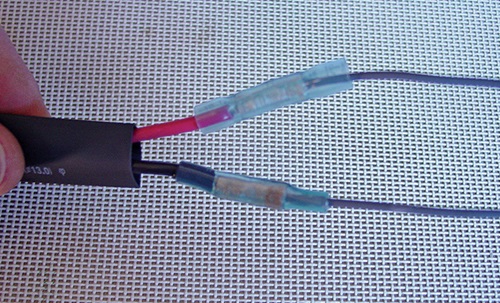
Use good quality, marine-grade heat shrink connectors (top) and liquid electrical tape (right) to create airtight, waterproof seals and reduce corrosion.
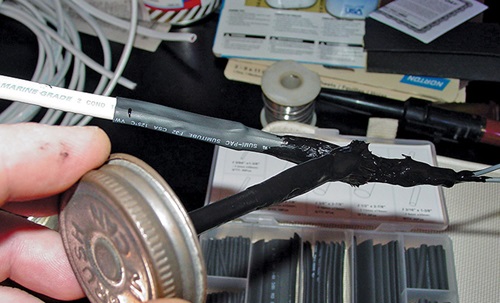
Installation
After choosing and mounting your panel, it’s time to connect it. The first thing you need to determine is the size (gauge) of the wiring to be used. Multiply your panel’s rated amp output by 1.25 (which adds a 25% safety factor). Then measure the length of the entire wiring run, panel to battery, and multiply by 2. Once you have these two numbers, refer to the American Boat and Yacht Council’s (ABYC) 3% voltage-drop table for wire size. Ancor Products offers a handy wire calculator on its website ( ancorproducts.com/resources ).
Always use good quality marine grade connectors and tinned, multi-stranded copper wire with vinyl sheathing. The wire will run from the solar panel to the charge controller first, then to the battery. Try to keep the wire run as short as possible, and if it transits an external deck or cabin house (it likely will), be sure to use an appropriate weatherproof deck fitting.
The charge controller should be mounted below decks and as close to the battery as possible. You’ll always want to follow the manufacturer’s instructions for connections, but in a typical installation you’ll connect the solar panel’s positive (red wire) lead to the charge controller’s positive input wire or terminal and the negative (black wire) lead to the charge controller’s negative input wire or terminal.
Next, connect the charge controller’s negative output to the battery negative terminal and the controller’s positive output to the battery’s positive terminal via an appropriately sized in-line fuse (or circuit breaker). ABYC recommends these be installed within 7 inches of connection to the battery or other point in the DC system. To reiterate, the installation of the charge controller can vary among models, so follow the manufacturer’s installation instructions.
Finally, ensure all connections are waterproof and secure any loose wire runs with wire ties and cable clamps for a neat installation. Then get ready to lean back and soak up some free sun.
Related Articles
The truth about ceramic coatings for boats.
Our editor investigates the marketing claims of consumer-grade ceramic coatings.
Fine-Tune Your Side Scan Fishfinder
Take your side-scanning fishfinder off auto mode, and you’ll be spotting your prey from afar in no time
DIY Boat Foam Decking
Closed-cell foam flooring helps make boating more comfortable. Here’s how to install it on your vessel
Click to explore related articles
Frank Lanier
Contributing Editor, BoatUS Magazine
Capt. Frank Lanier is a SAMS-accredited marine surveyor with over 40 years of experience in the marine and diving industries. He’s an author, public speaker, and multiple award-winning journalist whose articles on boat maintenance, repair, and seamanship appear regularly in numerous marine publications worldwide. Contact him via his YouTube channel “Everything Boats with Capt. Frank Lanier” or at captfklanier.com.
BoatUS Magazine Is A Benefit Of BoatUS Membership
Membership Benefits Include:
Subscription to the print version of BoatUS Magazine
4% back on purchases from West Marine stores or online at WestMarine.com
Discounts on fuel, transient slips, repairs and more at over 1,200 businesses
Deals on cruises, charters, car rentals, hotel stays and more…
All for only $25/year!
We use cookies to enhance your visit to our website and to improve your experience. By continuing to use our website, you’re agreeing to our cookie policy.

- Multihull Sailor
- Real Estate
- Maintenance & Hardware
- Water Sports
The Best Solar Panels for Boats for Eco-Friendly Energy
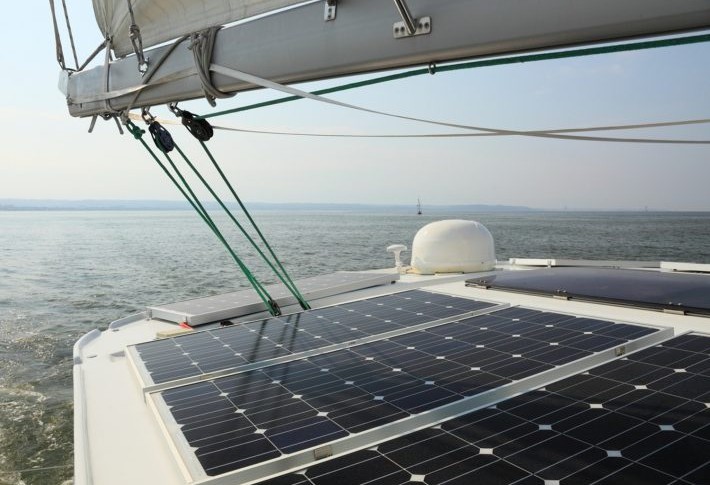
Solar energy is the most abundant renewable energy source. Harnessing the sun's power is a reliable and eco-friendly way to power your boat and get where you want to go. It’s also a great backup energy source during an emergency. You can save money and reduce pollution—it's a win-win!
Solar panels are a great way to give your boat energy and power. The Renogy Solar Panels for Boats (our favorite) has panels that are compact, reliable, and built to last with corrosion-resistant aluminum frames and low-iron-tempered glass. Keep reading and learn which solar panel is right for your boat!
Our Top Picks For Solar Panels for Boats
- Best Overall: Renogy Solar Panels for Boats Shop Now ➔
- Largest Panels: Rophie Solar Panels for Boats Shop Now ➔
- Most Durable: TopSolar Solar Panels for Boats Shop Now ➔
- Most Lightweight: ECO-WORTHY Solar Panels for Boats Shop Now ➔
- Easiest Installation: Sunway Solar Panels for Boats Shop Now ➔
- Most Surface Area: EF ECOFLOW Solar Panels for Boats Shop Now ➔
- 1 What to Consider When Buying Solar Panels?
- 4 Accessories
- 5 How Do Solar Panels for Boats Work?
- 6 Installation
- 7 What Are Care Requirements to Enhance the Life of Solar Panels for Boats?
- 9 Cleaning
- 10 What Are the Properties of Charge Controllers for Solar Panels for Boats?
- 11 Basic charge controllers
- 12 Mid-range charge controllers
- 13 Max power charge controllers
- 14 Conclusion
Can solar panels for boats run a trolling boat motor?
How long does it take for a solar panel to charge your boat’s battery, why do people consider installing solar panels for boats, related articles, the best solar panels for boats, best overall.

Renogy Solar Panels for Boats
The Renogy are 100W monocrystalline solar panels providing an average of 400-500Wh or 33-41Ah of electricity per day, so you have reliable performance. It has bypass diodes that protect the solar cells from overheating, so you don’t have to worry about maintenance. In addition, it features a corrosion-resistant aluminum train providing extended outdoor use without any extra damage.
These solar panels come with pre-drilled holes on the back so that you can install and mount them without spending money on professional help. They measure 42.2 x 19.6 x 1.38 inches and weigh 14.3 pounds, making them lightweight and convenient. Moreover, you can install them on boats, rooftops, cabins, and more for multifunctional use. Because of their efficiency and reliability, these solar panels stand at the top of our list.
- They are weather-resistant
- These solar panels maintain cell temperature
- Provide reliable performance
- Only compatible with Renogy ground mounts and brackets
Largest Panels
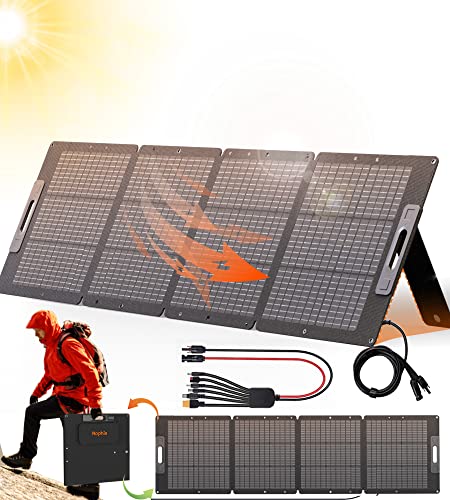
Rophie Solar Panels for Boats
The Rophie Solar Panels easily stands out on this list. Designed with impeccable efficiency, they accelerate solar charging to the next level, making it ideal for outdoor enthusiasts and off-grid boat owners. These solar panels convert sunlight into power rapidly, while their ultra-light, foldable design ensures convenience during transport and installation. Don’t let their light weight fool you, though, as they pack an impressive 200 watts, delivering unmatched power performance for your boat or outdoor camping.
These panels don’t just excel in efficiency and power; they’re also built to endure. Their IP67 waterproof grading ensures that they remain operational even under challenging weather conditions. Their high-quality MC-4 connectors further optimize power transfer while ensuring safe and secure connections. Plus, their compact design won’t take up much space, proving to be the optimal choice for boat owners who value both power and convenience.
- Lightweight and easily transportable
- Durable and water-resistant
- High-performance with 200W
- Can be a little pricey
Most Durable

TopSolar Solar Panels for Boats
The TopSolar Solar Panels are available in a kit containing 20W solar panels, a solar charger regulator of 12V/24V, two 6.5-foot cables with alligator clips, and an O-ring terminal to have a complete experience while on the go. They are perfect for off-grid 12-volt battery charging systems providing you with various DC applications like cabins, boats, battery-operated gates, and more. They come with a 10A solar charger controller preventing the battery from overcharging, discharging, and risk of short circuit for a safe experience.
These solar panels have aluminum and tempered glass frames, ensuring a durable and weather-resistant use. Weighing 2.75 pounds and measuring 2.32 x 13.86 x 17.13 inches, they are compact and portable.
- Easy to store and carry
- They come in a complete kit
- Provide excellent weather resistance
- Not suitable for large areas and machinery
Most Lightweight

ECO-WORTHY Solar Panels for Boats
The Eco-Worthy Solar Panels are 10W 12V solar car battery chargers that can be used to recharge boats, motorcycles, boats, snowmobiles, and tractors. They feature a cigarette plug option supplying you with constant power when needed. This kit includes a cigarette lighter adapter, one pair of battery clips, and four-piece PVC suckers ensuring maximum results in no time.
They also have energy-saving, built-in blocking diodes that prevent reverse discharge from maintaining and extending battery life for maximum durability. It measures 1.4 x 9.6 x 15.3 inches and weighs only 1.5 pounds, so you have a compact product at hand
- They are available in a complete kit
- These panels are lightweight and compact
- They can recharge different types of vehicles
- Longer charging times
Easiest Installation

Sunway Solar Panels for Boats
The Sunway Solar Panels are battery charger panel mounts that require a simple installation on any windshield or dash, giving you a quick and convenient experience. They come with 12-volt batteries and a maintainer that protect your panels from overheating and discharging, ensuring safe and convenient use. In addition, these panels are equipped with ultra-clear PC glass, so you have a strong and durable product.
They contain built-in blocking diodes that prevent reverse charging allowing your battery to maintain its useful life. Moreover, they also come with a blinking LED charge indicator that lets you know when the job is done.
- Comes with a battery maintainer
- Do not require professional installation
- Comes with charging indicators
- Suitable to recharge small batteries only
Most Surface Area

EF ECOFLOW Solar Panels for Boats
The EF Ecoflow provides 160W foldable solar panels are designed to produce maximum power at any time of the day when paired with an EcoFlow power station, so you never run out of electricity. Moreover, they have a seamless one-piece waterproof design, so you can use them during outdoor activities like camping and hiking.
These solar panels are also equipped with protection during transportation, enabling you to carry them without any concerns. Each pack comes with an Ecoflow 160W solar panel, kickstand case, user manual, and warranty card, so you don’t have to make any additional purchases.
- They can be folded for easy storage
- Comes in a complete kit
- Suitable for different outdoor activities
- Can only be paired with an Ecoflow power station
The Best Solar Panels for Boats Buying Guide
What to consider when buying solar panels .
Since solar panels are an expensive addition to your asset list, here are a couple of essentials to remember when purchasing.
The size of panels is directly related to the size of your boat. You must get something to match the energy requirements of your boat or greater. A solar panel too small might not power it and leave you frustrated. Other than this, smaller products have less battery time which means they will turn off much quicker than something explicitly designed for the size of your boat.
From PVC to glass covering and fully flexible panels, the type you choose determines their cost. This helps you establish your budget according to your needs. A glass-fronted solar panel is among the most budget-friendly options, but they are not as weather resistant. Besides this, a polycarbonate version is more expensive, but they are incredibly weather resistant and have a longer life.
Accessories
A charge controller or maintainer is an essential component available for your boat’s solar panels. This product protects your panels from battery damage. They prevent any risk of overheating, battery discharge, or sudden drops. A charge controller is essential if you want to elongate the battery’s life. Most brands also offer mount brackets, so you don’t have to purchase them separately.
How Do Solar Panels for Boats Work?
Solar panels for boats work just like any other portable energy provider. To install it successfully, you must have four components: the solar panel itself, charge controller, inverter, and battery. When solar panels in the boat hit sunlight, they convert it into the electrical current, supplying your boat with the required energy.
Boat solar panels can work without a charger maintainer (controller), but there is a risk of overcharging your device. Therefore, you must keep it in place to avoid any risk of battery damage.
The need for an inverter depends on the number of appliances that need a charge. For instance, if you wish to charge multiple devices other than the boat, consider buying a large-capacity product.
You can opt for professional installation if offered by the brand or any other reputed company. But individuals who have the basics can do it all by themselves. However, you must make sure that all the relevant accessories are available at your convenience.
Installation
The installation method is divided into three main stages. The first stage is to conduct an energy assessment. In this, you will determine the level of energy that your boat needs to function. Buy a panel that has a higher voltage than your requirements. This gives more room and flexibility to charge other devices.
Check whether the solar panel can produce that level of energy. Once the capacity is determined, you can decide the exterior of your panels. In most cases, you choose between glass-fronted, polycarbonate, and fully flexible panels.
What Are Care Requirements to Enhance the Life of Solar Panels for Boats?
Caring for solar panels is essential as they are a long-term investment and should last accordingly.
Most solar panels are designed to last two to three decades. Caring for them is fairly simple but requires regular attention. All you have to do is keep them clean from dirt, leaves, and other obstructions. Solar panels from reputable brands always come with a warranty for a couple of years.
Always get a professional repair from the brand in case of any damage. Even if your warranty has expired, we recommend taking your boat’s solar panels to a professional. They might cost a bit more than a local mechanic, but your panels get the treatment they require.
Another factor to consider here is the useful life of your solar panel. This indicates that they will not be as effective as they age. The depreciation in their quality is slow and gradual.
If your product has met the end of its useful life, it won’t stop working but will get more prone to damage. So instead of getting frustrated with why your solar panel for boats isn’t working properly, consider getting a replacement from the same brand or changing your product.
To clean a solar panel, use lukewarm water with a mild, non-acidic detergent and apply water pressure to remove any visible dirt and debris. Panels for boats are relatively smaller, so you won’t need a lot of supply. Clean any unwanted spots with a damp cloth and leave it to dry. Avoid applying water pressure on smaller models as they might not sustain the burden.
What Are the Properties of Charge Controllers for Solar Panels for Boats?
Charge controllers are an essential component. They help protect your panels’ battery from damage. There are three main types of charge controllers available.
Basic charge controllers
They use pulse width modulation to encode transmission information allowing control of the power supplied to boats or other devices. These are simple chargers that come in at an affordable price range. A primary charge controller is designed to control batteries of smaller solar panels. They might not deliver desirable results if connected with a high-capacity panel.
Mid-range charge controllers
These controllers also use pulse width modulation but feature an LCD display to indicate current charging levels. This helps the user keep track of the system and unplug the device when it’s ready to use.
Max power charge controllers
Designed for high-end and powerful solar panels, they are one of the most expensive charge controllers. You should only attach them to devices recommended by the brand itself. They also maximize the performance of panels.
Conclusion
Solar panels are a great way to maximize energy efficiency in your boat and create a durable backup. They are available in different sizes and capacities, so you can find a suitable fit for your boat. This article carefully reviewed the most in-demand solar panels for boats in 2024 that can make a difference in your overall experience. Besides the panel, you should also grab a top-notch charge controller that protects the device from damage and enhances its life.
People Also Asked
Yes, you can run a trolling motor with solar panels, but it is essential to opt for a device that has suitable capacity.
If the panel is according to the desired capacity of the boat, it might take 4 to 6 hours for a full charge.
Solar panels reduce carbon emissions and save money by reducing fuel costs. They also reduce the noise levels caused by a fuel-ignited engine.
Article Contributors
Sail magazine review team.
SAIL Magazine Review Team reports on best-selling products in sailing and boating. SAIL Magazine is reader-supported: When you buy through links on our site, we may earn an affiliate commission. Artificial Intelligence (large language models) may have been used in the research and creation of the content.
To ensure questions about product testing or a specific article are addressed, please contact [email protected]
Yachting Monthly
- Digital edition

Sailing with solar power: A practical guide
- Duncan Kent
- November 13, 2020
The latest solar technology makes self-sufficient cruising much more achievable. Duncan Kent gives the lowdown on everything you need to get your boat sorted

SOLAR POWER ON BOARD
Solar power is fast becoming the most popular and economic method of keeping the batteries charged on a boat.
Particularly now that the efficiency of photovoltaic (PV) panels, charge controllers and batteries is improving every day.
Furthermore, the latest technology in regulators and charge controllers has brought about a noticeable increase in useable power output, so the problems of shading and non-alignment can be compensated for more easily.
Not only has PV equipment become more efficient and cost-effective, but many of the modern devices we want to use on a boat have become less power hungry.
This means it is now far easier to provide your entire yacht’s electrical needs, both 220Vac and 12/24Vdc, from natural energy resources – particularly solar power, even if you are planning on a fully electric boat .

Thinking carefully about how much power you need and how much your boat can accommodate is key to planning a solar array. Credit: Graham Snook
WHAT DO YOU NEED?
For instance, a boat with two new, good quality, deep-cycle house batteries of 100Ah each would supply 100Ah of energy to consume between charges, if you only use the recommended 50% of available charge between each charge cycle to protect the batteries.
From this you could run:
- a modern 12Vdc fridge (approx. 1.5Ah, or 36Ah over 24hrs),
- all LED lighting (say 20Ah per day),
- various small device chargers (20Ah)
- and a number of other items such as water pumps, TVs and stereos (25Ah/day)
- Totalling around 100Ah.
- For this you’d need 400W of solar capacity.
Of course, if you like to run a lot of AC devices off-grid such as hair dryers, microwaves, toasters and the like, then you’re going to need a DC/ AC inverter, which will take you to another level in power consumption terms.
But even then, with careful planning, solar could provide a large portion of the power you need before resorting to engine charging or a generator.
THE AVAILABLE SPACE
In practical terms, a modern 40ft monohull would have the space for around 1,200W of PV panels (cockpit arch, sprayhood top, deck), maybe 1,500W with the addition of a few portable panels for use at anchor.
The 1,200W of fixed position solar array could produce around 360Ah on a sunny summer’s day (zero shading) or more likely 250Ah on the average UK summer’s day.
So that’s enough for your 100Ah general DC consumption plus another 150Ah of AC consumption via the inverter.
Of course, to do this you’ll most likely need to increase your battery capacity to around 400-500Ah for maximum flexibility (you’ll need to store as much as possible during daylight hours), a typical figure for a 40-50ft offshore cruising yacht these days.

Get your solar charging right and you may never need to hook up to shore power
Typical daily inverter loads for a cruising yacht off grid might be:
- induction cooking plate (20min) 60Ah
- microwave (15min) 30Ah
- coffee maker (20mins) 25Ah
- hair dryer (5min) 15Ah
- laptop charger (2h) 10Ah
- or around 140Ah in total.
The trick is to monitor the batteries’ state of charge (SOC) at all times and vary your use of the inverter to suit.
For example, you might want to cook supper mid-afternoon, when solar is in abundance, and then reheat it in the evening when you want to eat it.
In some cases, when you’re cruising in warm climates such as the Med, you might end up with excess charge from your solar panels .
In this situation, many long-term cruisers devise a method of ‘dumping’ the extra energy by heating water for showers.
Do bear in mind if you’re planning to live aboard full time , then it’ll be a whole different story on cloudy days and during the winter, when inverter use might need to be knocked on the head entirely.
Continues below…

Eco friendly sailing: Best practice for green yachting
How easy is it to go eco friendly sailing? We look at the steps cruisers can take to minimise their…

How and where to go wild cruising in the UK
Planning to spend the night away from crowded waters can be truly rewarding but preparation is essential before you go…

Solar-powered boat crosses Atlantic
Then heads to UN climate conference
POWER DISCREPANCIES
There’s often confusion as to how much power you can harvest from a solar installation.
A PV panel is nearly always advertised stating its theoretical peak output power (Pw).
But in reality, on a yacht where there are limited areas in which to mount them, they will more likely produce a maximum of 60% of their peak output if mounted horizontally, increasing to 80% if tilted towards the sun and regularly adjusted.
The latter is rarely achievable on a boat, however, as even at anchor it can swing through an arc of 180° in wind or tidal shifts .

Flexible panels can be mounted on sprayhoods or awnings to add power when it’s needed at anchor or in harbour
INSTALLATION
Having trawled through hundreds of ‘deals’ to get the best price on the most efficient panels you can afford you now need to know how to install them to best fulfill your energy generation needs.
The output, even from the highest quality photo-voltaic array, will only be as good as the installation itself.
So following our guidelines should ensure you extract every last drop of energy from your investment.
PANEL MOUNTING
Sailing boats are not the ideal structure on which to mount wide, flat PV panels.
So before you go ahead and purchase what looks like the biggest and best, take a few minutes to decide on exactly where you can mount them, as this will affect what size and type of panels you should buy.
In many cases the first choice would be on an arch, davits or gantry aft, especially if you already have, or plan to fit one.

Dinghy davits, particularly on multihulls, can support a huge solar capacity
These allow a solid metal framework to be constructed that will be strong enough to take the heavier, more productive rigid PV panels.
You can also build in some form of adjuster to the framework that will allow the panels to be orientated towards the sun for the best performance.
With luck (or careful planning) a gantry will also keep them aft of the boom, thereby eliminating loss of output caused by boom shading.
The next most popular position for mounting the panels is on a cockpit sprayhood or bimini, although this will often mean using the flexible or semi-flexible panels, which are generally less efficient than the rigid ones for the same area.
ELEVATED MOUNTING
Alternatively, there are kits available for mounting panels onto lifelines, which can allow their elevation to be manually adjusted to a certain degree.

Pole-mounted panels can be used for maximum adjustability
Finally, panels can be fitted directly onto the deck by either gluing them down using mastic or attaching them onto a rigid support frame.
Once again you will probably need to use semi-flexible panels – especially if the deck surface is curved.
Rigid, glass-coated panels will obviously not be suitable for deck mounting in an area that is frequently walked over.
Don’t be tempted to drill through the panels, even along the edges, as this will invalidate the warranty and possibly damage the panel.

With solid panels, the ability to adjust the angle can add significantly to output
It might seem obvious, but the key to an efficient system is to avoid shading wherever possible.
It’s no good fitting expensive, high-efficiency PVs right under the boom as they’ll perform little better than the cheaper types.
Saying that, in good quality panels each cell will be isolated from the next by a series of diodes (one-way electrical valves), so that if one cell is shaded at least it won’t drag down the other cells within the same panel.
Older panels often didn’t have these, so the slightest partial shading caused the output of the entire panel to cease.
OVERHEATING
Another important factor that is often ignored when installing the panels is that of overheating.
If a PV panel gets too hot, which is quite likely if mounted directly onto a flat surface without an air gap behind, its output will drop quite noticeably.
To allow for some air circulation behind the panels it’s best to apply mastic adhesive in numerous large dabs.
This is best achieved by placing wooden spacer strips between the dabs until the mastic has completely cured, after which the spacers can be removed.
You might need some form of trim around one or more of the outside edges, though, if they are positioned where sheets and other lines might get caught under them.
Raising the panels up will also help water to drain off and thereby helping to avoid possible delamination from sitting in water for too long.
CHARGE CONTROL
A PV module cannot supply an electrical device directly due to the changeability of the sunlight, which in turns varies the current it can produce.
Therefore, it has to be connected to a battery, which stores and smooths its output.
Whatever the size of your solar array you will need to fit a regulator, or charge controller as they are now more commonly known, to the system in order to control the output and to help extract as much power from the panels as possible.
There are two types of PV charge controller.
The older designs, called Pulse Width Modulation (PWM) types, were fairly basic voltage regulators and simply output volts at just above battery level.
The latest controllers use Multi Power Point Tracking (MPPT) technology and can accept much higher input voltages (up to 240Vdc).
MPPT controllers can be up to 30% more efficient as they use the peak output of the panels to charge the batteries, even compensating for partial shading.
BEWARE FAKE GEAR
If you buy online do be careful to ensure you’re getting what you pay for.
There are a huge number of fake MPPTs out there, which are simply the much cheaper PWM dressed up with fake labels.
It’s hard to tell which is which, but the old adage of ‘if it looks too good to be true, it usually is’ makes good sense.
MPPT controllers are usually bigger and heavier than PWMs, but if in doubt call or email the supplier to discuss the pros and cons of their kit before buying.
If they’re not happy to chat and advise you then I would steer clear of their gear.
Some good MPPTs are made in China, but unless they have a UK supplier, I wouldn’t bother with them as you’ll have no follow-up advice.
To calculate what size controller you need simply divide the panel’s peak power in Watts (Wp) by the battery voltage, which will give you the maximum current (Amps) they could theoretically supply.
For example 240W/12V = 20A. Although it’s unlikely you’ll ever get near the peak output from any PV panel, it’s best to go for the maximum possible.

Induction cooking is now a reality on board, even without shore power
PV panels come with a short length of cable, usually around 1m long.
Some are supplied with MC4 connectors already attached but most only provide bare wires.
The latter can be easily extended using proper waterproof connections but thought must be given as to the current rating and voltage drop (usually max 3%) for the size of cable you intend to use.
If in doubt, bigger is better!
Panels can sometimes be ordered with the wiring on the back so that the cable can go straight below deck through a hole under the panel.

You may need to fit extra battery capacity if you want to run an inverter from solar charging
SERIES OR PARALLEL?
A commonly asked question is ‘should I wire my PV panels in series or in parallel?’
The simple answer is, if there’s any danger of frequent shading to one or more of the panels then install them in parallel.
If wired in series the shading of a single panel will drag down the output from all of the others in the same series.
PARALLEL IS PREFERRED
Most commonly, multiple panels are wired together in parallel to a single charge controller, with diodes protecting each panel from discharging the others should one become partially shaded.
With the advent of MPPT controllers, however, there can sometimes be a benefit to wiring two or more identical panels into a series bank, thereby presenting a higher voltage to the controller.
It’s worth noting that, like batteries, wiring PV panels in series increases the voltage only – the current capacity of the array remains the same as for a single panel.
‘Where’s the benefit of wiring them in series then?’ you might ask.
Well, the higher the voltage fed into the MPPT, the more consistent it will be with its output, which could, in some cases, prove more efficient than a parallel installation with PWM controllers.
It’s also likely to be necessary if you have a 24V domestic system.
SERIES WIRING
Series wiring is usually only done when the cable runs are long, as it helps negate the voltage drop caused by the resistance of the cable.
While a decent controller will have no problem handling the output from four or even five panels wired in series, it is often inappropriate for sailing yachts as shading just one of the panels will reduce the output of the entire series array.
If you need to do so in order to reduce cable runs then it’s best to split the panels between each side of the boat – a series bank on each side.
If you do this, then you would ideally fit a separate controller to each series PV bank and then connect their outputs together in parallel to the battery bank.
Note, however, that panels wired in series must all be the same types with an equal number of cells per panel.
Furthermore, the charge controller needs to be sized for the total of all panel voltages added together and the current rating of one individual panel.
Differently rated panels can be connected together in parallel but only if each panel has its own controller.
The outputs of the individual controllers can then be joined together to go to the battery bank.
BATTERY BANK QUESTION
Another frequently asked question is ‘Can I connect another charging source to the battery bank while the solar array is charging?’
The answer is yes.
Any decent PV controller will be protected against feedback from other charging sources.

Think carefully about where shade from mast, boom and rigging will fall. Credit: Graham Snook Photography
CABLE SIZE AND CONNECTORS
A frequent cause of reduced output from PV arrays is wiring that is too small.
The resistance of a wire conductor increases in direct proportion to its cross-sectional area, so go as big as is practicable for the least cable loss.
Each panel should be supplied with the correctly sized cables for its own maximum output.
But if you’re combining panels, either in parallel or in series, you will clearly need to rate the single feed cable to suit the maximum current available at theoretical peak solar output and to minimise voltage drop.
Likewise, the cable from the controller to the batteries should be sized to suit the controller’s maximum output current and protected with a fuse.
For outside it’s important to use exterior grade cable, which is double- insulated and UV-proof.
WEATHERPROOF CONNECTORS
And wherever possible use compatible weatherproof connectors (usually MC4) to those found on the panels rather than cutting off the plugs and hard-wiring them.
Field- assembly MC4 plugs are available, so you don’t have to drill large holes in the decks or bulkheads when feeding the cables through.
When joining more than one panel together try to use the approved multiway connectors; not only do they keep the wiring neat and tidy, but they also offer a greater contact area than budget terminal blocks.
If you have to use screw-type connectors make sure to fit proper ferrules to the wire first to avoid any stray wires in the multistrand shorting across the terminals.
When feeding a cable from above to below deck, try to go through an upright bulkhead where possible to minimise ‘pooling’ of water around the access hole.
Also, use a proper watertight deck seal that matches the cable you’re using.
If drilling through a cored deck you need to drill a larger hole first, fill it with epoxy resin and then drill the required size hole through the epoxy to ensure no water gets into the deck core.
Ideally, the charge controller should be mounted no further than 2m from the battery bank.
If you need to go further, you’ll require larger cabling to reduce the voltage drop.

A generous solar array will keep you self- sufficient indefinitely. Credit: Graham Snook Photography
CONTROLLER LOAD TERMINALS
There is often confusion over the ‘load’ output of a charge controller (often depicted by a light bulb) and what can safely be connected to these terminals.
Rarely explained in the manual, the load terminals should be pretty much ignored in a marine installation as the output on these terminals is usually very limited (10A max).
Some attach an LED light to them to indicate the controller is operating, but all your usual electrical loads should remain connected to the batteries with the battery terminals on the controller connected directly to that battery bank via a fuse.
It is possible, though, to control a high-current switching relay in certain conditions.

Parallel installation is more resilient to shading, but a series installation will increase peak charging outputs. A combination of the two offers some of the benefit of both
CIRCUIT MONITORING
Unlike most cheap PWMs, the majority of good quality MPPT charge controllers come with an alphanumeric LCD screen to let you know what is going on.
This can either be a remote display or simply one on the front of the box.
It’s obviously a lot better to have a proper numerical display than to rely on a few flashing LEDs to tell you when something’s not right.
So if your chosen controller doesn’t have one be sure to fit a battery monitor (the shunt type) into your solar circuit between the controller and the batteries.
It doesn’t have to be a very ‘smart’ monitor, just one that can display the voltage and current being supplied by the panels.
For smartphone addicts there are several wifi apps that will do the job remotely on your phone or tablet.
DEVICE PROTECTION
All good quality PV panels feature built-in diode protection between each cell to prevent a shaded cell from dragging down the productive ones.
In addition, there will be internal blocking diodes on the final output to protect the panel from polarity reversal and to ensure that the batteries can’t discharge back into the panel during the night.
The latter can be added externally, the former can’t, so check before you buy.
A fuse, rated just above the maximum current available, should be fitted between each panel and the charge controller.
Another fuse should then be installed between the charge controller’s output and the batteries.
In the case of multiple arrays, this second fuse will be rated higher than the individual panel fuses and should match the maximum current rating of the cable.
With this protection installed other charging devices can be connected in parallel at the battery, meaning the solar can be left connected even when you are hooked up to shore power and the battery charger is operating.
In some circumstances, however, this arrangement can affect the sensing of the battery by the charger, causing it to fall back into float mode.
If this becomes apparent it can be overcome by installing a manual/auto switch to disconnect the solar array when on shore power.

Check the flex of the solar panel is sufficient for your deck
EXCESS POWER DUMPING
A solar charge controller works by disconnecting the supply from the PV panels when the batteries are fully charged.
But for some full-time liveaboards in sunny climates that can be considered a waste, when the excess power could be put to good use – heating water, say.
This is commonly done using an inverter to supply AC power to the heating element.
Alternatively, you can now buy a 12Vdc element for your calorifier (hot water tank) and supply this directly from your battery bank.
Both of these methods would require a voltage sensitive relay (VSR) to disconnect the element should the battery voltage drop below a pre-set level.
Don’t expect boiling hot water, as there will probably only be enough spare power to take the chill off it before your battery bank reaches its lower threshold voltage.
A 600W/12V element will draw some 50A, from the batteries, whereas a 1kW AC element run through an inverter will need close to 100A.

A small, semi-flexible panel will be sufficient for keeping batteries trickle charged, but not for heavy use
RIGID, FLEXIBLE, OR SEMI FLEXIBLE?
Despite massive recent improvements in semi-flexible panels in recent years, the solid glass panels still offer a higher power density.
That said, they are heavier, more awkward to mount and can’t be walked on, so unless you have a dedicated gantry aft, you’re better off choosing the more rugged semi-flexibles.
Modules incorporating monocrystalline cells also have a better output than those with polycrystalline cells (that’s cells made from a single slice of silicon as opposed to layers of smaller pieces).
Output voltage also depends on the number of cells on the panel.
In the past this has commonly been 32, but now some 36 and even 40 cell panels are available.
That said, they’re larger, of course, so an array of interconnected smaller panels might be a better solution.
Module efficiency is now more often around the 20% mark, as opposed to 12-15% for older models and semi- flexible (up to 20° bend) are usually better than flexible (up to 180° bend).

A rigid panel is more efficient, but less robust
There are a huge number of panels on the market, but many use the same cells.
Sunpower Maxeon cells are exceptionally good, as are the Panasonic HIT range and LG, but they are pricey.
If the maker is offering a 25-year guarantee instead of a 3-5 year one, you can be pretty confident they’re good.
When it comes to charge controllers it’s definitely worth paying a little more for a decent MPPT.
A cheap PWM might be okay just to keep a small starter battery charged with a 30W panel, but the MPPT will give you much more when it comes to heavy service.
Victron are probably top of the range, while cheaper brands like MakeSkyBlue and EPever are also good value – but treat imports of unclear origin with care.
ABOUT THE AUTHOR

Duncan Kent has been evaluating and reviewing yachts and marine equipment for the past 30 years
Enjoyed reading this?
A subscription to Yachting Monthly magazine costs around 40% less than the cover price .
Print and digital editions are available through Magazines Direct – where you can also find the latest deals .
YM is packed with information to help you get the most from your time on the water.
- Take your seamanship to the next level with tips, advice and skills from our experts
- Impartial in-depth reviews of the latest yachts and equipment
- Cruising guides to help you reach those dream destinations
Follow us on Facebook , Twitter and Instagram.

Coppercoat: The environmentally sensitive antifoul choice *sponsored post*

Yachting Monthly sponsors the Chichester Marina Boat Show and Watersports Festival

Round the Island Race 2019: Entries open

Düsseldorf Boat Show 2019: Fairline announces yacht line-up

Düsseldorf Boat Show 2019: Bavaria to showcase its complete range of motoryachts
- Subscribe Now
- Digital Editions
Best boat solar panels: 6 options for boosting your yacht’s power
- Phil Sampson
We take a look at 6 of the best solar panels for boats, from folding units to cutting-edge flexible panels

Free power forever? If only it was that simple! Photo: Graham Snook
For many in the boating community, boat solar panels represent something of a holy grail. They are, after all, the gift that keeps on giving, aren’t they? Free power forever, (or many years anyway), coupled with zero running costs – what could possibly be better than that?
All you have to do to make this dream come true is banish the memory of the purchase price from your mind – something boaters are notoriously adept at doing – and wait for the sun to shine. If only it were that simple…
The fact of the matter is that there are costs associated with boat solar panels beyond the price of the panels themselves. While some types of panels can be simply laid on the deck, in many cases some form of mount will be required.
Then there’s the wiring to hook them up to your battery, plus any fitment and/or cosmetic work needed to hide the cabling from view. If your panels are to be left connected permanently, you’ll require a regulator too.
This will prevent both overcharging and a reverse flow of power out of the battery after dark. If you do not fit a regulator, a blocking diode can be used to halt the reverse flow instead.
But once all of the above have been overcome – and providing you’ve done your homework to ensure your panels will generate sufficient power to cover your needs – then, yes, it’s a power free for all!
There are many other benefits to boat solar panels too: First and foremost, they work all on their own – solar panels are automatic, so you can just let them get on with the job.
Apart from the occasional wipe over and a wiring check, they’re largely maintenance-free too. Unlike wind generators, (especially like the one with wonky bearings on that boat moored next to you), they don’t make any noise.
And finally, your battery will be pleased, because keeping it from going flat can extend its life.
Here’s our choice of the best boat solar panels.
6 of the best boat solar panels available right now

Giosolar 1,000W flexible solar panel
Best flexible boat solar panel
Delivering a mighty kilowatt of power, (not far off the amount used by a one bedroom house), this Giostar package comprises ten separate 100W panels, each of which is 1,050 x 540 x 2.5mm in size.
Capable of charging either 12 or 24V batteries, a kit of this magnitude is one for the most serious of solar enthusiasts – Eco Experts reckons 660-990W is sufficient for a liveaboard.
Giostar panels are abrasion resistant, anti-rust and dust proof and their junction boxes are sealed and waterproof. The panels are also light, thin and flexible, and can withstand being bent up to 30 degrees.
Price: £1,464.45
Buy it now on Amazon (UK)
Note: We may earn a commission when you buy through links on our site, at no extra cost to you. This doesn’t affect our editorial independence.

Mobisolar 100W foldable solar panel
Best foldable boat solar panel
Mobisolar’s foldable panels are light (4.5kg) and measure 121 x 56.5 x 3 cm when unfolded, with the longest dimension reducing to 60 cm when folded, making them easy to transport.
The panels use advanced technology to provide superior performance, with each panel subjected to a thorough testing routine before and after assembly.
So confident is Mobisolar in its products that the company stands behind its panels with a two-year defect warranty and a five years’ electrical performance warranty.
For maximum flexibility in operation, three USB power outputs are fitted per panel, one delivering 100W, the second 60W and the third 10W.
Price: £145.00
Buy it now on eBay

Eco-worthy 100W solar panel kit
With 100W panels being ideal for keeping batteries topped up, our second offering in this power class is from Eco-worthy, a major player in the solar panel field.
Competitively priced, our link below is for a kit which includes an LCD control unit and four ‘Z’ brackets in addition to the panel itself.
The Eco-worthy 100W panel is of the monocrystalline type, which means their cells are made from an ingot grown from a single silicon crystal of high purity. It’s also a rigid panel, so this particular product would need to be mounted on a frame or flat surface.
Price: £113.99

PV Logic 20W Flexi solar panel
Offered by Force 4 Chandlery, this lightweight semi-flexible solar panel comes complete with a dual battery solar charge controller.
The panel is completely waterproof thanks to its six-layer, heavy-duty laminate finish, and should a wayward crew member plod over it in their size 9s the panel’s dimpled top surface is ‘self healing’.
The controller can handle both 12 and 24V systems and the panel’s PWM (Pulse Width Modulation) charging system is efficient and battery-lifetime friendly.
Supplied with LED battery-status indicators and 4 metres of cable, PV Logic Flexi panels can be bonded to flat or curved surfaces.
Price: £149.95
Buy it now on Force 4 Chandlery

Powoxi 10W solar panel
At the budget end of the market comes this Powoxi 10W solar panel charger kit. While you won’t go far on just 10W of power, this kit claims to be capable of charging and maintaining various 12V batteries.
The kit features a fully automatic charging and maintenance controller, which provides intelligent three-level charging and protection against short- and open-circuits, under voltage and overloading.
A reverse flow system is included and the interface is described as ‘plug and play’. While the panel is rainproof, it will not withstand immersion in water, so this is a product to perhaps leave behind on the dock when you take to the water.
Price: £27.59

Eco-worthy 10W/5W solar panel
The least pricey option we could find anywhere, this baby 5W solar panel is simply a trickle charger. But if that’s all you need then look no further, for this is another Eco-worthy product.
The technology in the panel is polycrystalline, so it’s not the most efficient on the market, but for this power that’s hardly a great concern.
The panel is supplied with two charging options; a pair of crocodile clips which attach directly to the battery, and a cigarette lighter plug.
According to the product’s eBay listing, this seller alone has sold approaching 3,000 of these units – and at this price, we can understand why!
Price: £9.99
Practical Boat Owner
- Digital edition

Boat solar panels: Everything you need to know to get started
- David Berry
- October 13, 2021
Want to add some boat solar panels, or wonder how to make the most of those you already have? David Berry has some advice...

While it seems like a good idea to mount a panel on the coachroof the chances of it becoming shaded are increased. Here the mast or rigging can easily throw a shadow over at least part of the panel, seriously reducing its output. Photo: Catchlight Visual Services/Alamy
Keeping batteries topped up without resorting to running the engine is an ongoing problem for yachtsmen. Boat solar panels are an obvious option, not just in the Med but also around the coasts of the UK as the price of panels has fallen over the years.
But choosing them can seem a bit of a black art: after all, how can you possibly predict how much sun you’re going to get during the season, or how much power your panel will produce if it’s not exactly aligned with the sun? But provided you accept a statistical approach using established databases, then prediction is easier than you think.
Ultimately the only thing we need to know is the conversion efficiency, or, how much sun turns into electrical power. NASA do a trick: they use multi-layer panels where each layer responds to a different wavelength so the usual 20% or so is doubled.
Article continues below…

Battery maintenance for boat owners: How to look after your boat batteries
For all but the smallest and simplest of craft a reliable supply of battery power is essential to keep both…

What is insolation? How much power is reaching my boat’s solar panels?
The sun is 93 million miles away, give or take. Packets of energy called photons leave it and travel at…
And there is a new material called Perovskite which is also used to provide an overlay on the standard silicone panel and the tandem panel is claimed to convert up to 28% of the sun’s energy into electricity.
Don’t rush though, when I looked on Amazon for one I discovered even the books describing it cost around £100! The panels themselves seem to be still in development.
How much energy does my boat need?
The first step is to work out your boat’s energy requirements. All you have to do is add up all the energy in watt-hours used by each device on your boat, such as the fridge, lights, computers and so on.
Energy is power accrued over time, so if power is measured in watts, energy is watt-hours. This can be tricky, for example how long is your fridge running for? And how about overnight? How much energy do the instruments take? Or your computer?
You can measure the power by measuring the Amps and Volts and multiplying them together to get Watts, but somehow you need to come up with a table similar to the one below. Once you have your energy requirements worked out, I suggest you add a goodly margin for expansion and errors – at least 10%.
| Device | Current | Duty | Wh/day |
|---|---|---|---|
| Fridge | 4 | 0.5 | 576 |
| Computer | 3 | 0.1 | 86.4 |
| Lights | 2 | 0.1 | 57.6 |
| Fan | 0.5 | 0.5 | 72 |
| Losses | 0.1 | 0.1 | 2.88 |
Energy requirement for Aderyn Glas over the course of a day. ‘Current’ is Amps. ‘Duty’ is the portion of the day the (12V) appliance is powered up. eg Fridge 4A x 12V x 12hr = 576Wh
Next, you need to decide how much of this requirement should be met by the boat solar panels. We sail our Moody 33 Aderyn Glas throughout the summer season from our base in Preveza, Greece, so our requirements are essentially those of liveaboard sailors.
We want the panels to be able to supply most of our power needs and allow us not to have to ruin the peace of a quiet anchorage by running the engine simply for charging.
Weekend sailors might be content with a small panel to recharge – over the course of a week – the energy used during a weekend’s sailing. Getting the balance right is important, especially if you want to install enough boat solar panels to more or less cover your power requirements.

David Berry’s Moody Eclipse Aderyn Glas has boat solar panels mounted on a stern gantry where shadows are greatly reduced
But will you get the quoted wattage from your panel? If the panel is a 100W panel, will you get 100W? Panels are rated as the electrical power produced under certain strict test conditions, and these are solar irradiation (called insolation) of 1,000W/m2 at 25°C and an atmosphere of a particular clarity. Do we ever get these conditions in practice? Well, yes, we do, but life is never that simple – in this article I explain about how to assess the real insolation over the course of a day in your chosen location.
Types of boat solar panel
Leaving aside the exotic new Perovskite panels, there are three types that you might consider – a choice that hasn’t changed in years.
There are amorphous panels (good in shady conditions but large for any given wattage), printed panels (manufactured with an inkjet printer but really low conversion efficiency) and crystalline panels either poly- or mono-crystalline.

The smaller amorphous panel is 15W and the larger crystalline panel is 100W. So the larger panel is approximately twice the area, but seven times the power
What type of boat solar panels should I fit?
This question is a bit of a red herring – in reality, the question should be ‘How much space do I have?’
The academic drive is to make panels that are more environmentally friendly, both to make and dispose of, and to reduce the cost per watt.
But ironically this has resulted in a much poorer conversion efficiency generation by generation, which is not helpful to sailors with a small area available to mount the panels.

These panels are printed on a continuous inkjet printer with the idea that they can effectively be an endless strip. The problem with that, though, is the current can build up and eventually burn out the connecting cables. Furthermore, they are no good for yachts because the conversion efficiency is so low so you’d need a battleship in order to have enough space!
So, back to the first generation: crystalline panels come in mono- or polycrystalline species, but they only differ slightly in cost per watt and efficiency.
Added to the mix is the flexibility aspect: flexible panels require a bit of clever manufacture, and this is passed on in higher prices.
Many sailors think flexible panels are a solution because they can be mounted on the deck or coachroof or even the bimini but I’ve not considered them because all those places seem to suffer from shading, more of which later.

A hypothetical energy balance. The red line is the clear-sky power that the panel could provide during daylight. The blue line is the power your boat requires. Light blue is surplus energy, where the panel is outputting more than the load, and dark blue is where the load is greater than the panel can deliver. When night falls, the boat’s energy needs have to be met by the battery. In daylight, the battery becomes a load for the panels as it is charged. The green line is a notional illustration of the state of the battery; it winds downwards when there’s a shortfall and upwards when there’s a surplus available for charging. In winter, the load profile will be different and the captured power will be lower.
So does this mean the default starting point for any installation is a rigid, crystalline panel? In short: yes!
Where should I install my boat solar panels?
If you’re just fitting a small panel to top-up batteries on a mooring, buy a cheap rigid panel and find places on your boat where you can tilt it to catch the sun’s rays for the majority of the day.
We do this during the winter in Greece, where we strap on 20W or so of car battery top-up panels, and it works well for us. Choose a spot that isn’t shaded for the majority of the day and this technique should serve you well.
Do the sums. I have heard of people whose batteries have been damaged by a constant high power being applied to an already charged battery, even through a regulator. My rule of thumb for trickle-charging is a panel wattage about 10% of the battery’s stated amp-hours, but that’s a guess.

Aderyn Glas is fitted with two monocrystalline panels which are rated at 100W apiece – they take the same space previously occupied by amorphous panels which could only muster 75W between them
If you spend more time on board and need to get the best from your panels, mono- or polycrystalline panels will give more power from the same space. We replaced our 75W bank of amorphous panels with 200W of monocrystalline panels in the same area.
But with the higher efficiency comes higher sensitivity to poor mounting conditions, so if you want the best from your panels you need to do your utmost to ensure they’re not shaded, and also that they are tilted as close to a right-angle to the sun as possible. This is why liveaboards often mount theirs on adjustable gantries at the stern or on the pushpit.
Intrinsic losses
Let me just revisit this: the relationship between the nominal power of a boat solar panel and what you really get. When the manufacturer quotes, for example, 100W for a panel, that is the expected output under test conditions.

Choose your site carefully – this coachroof panel will be shaded by the boom, reducing its output by a considerable margin
The test conditions are an insolation of 1,000W/m2 at 25°C. So a typical panel of half a square metre will receive 500W of insolation, then we multiply by the efficiency of 22% or 0.22 and you get roughly 100W. So if you get a sunny day that insolates your 100W panel at 1kW/m2 then you have the potential to get 100W output for a short time around solar noon.
But the energy over 24 hours will be below this owing to the declination of the sun over the course of the day. This can be partly remedied with a tracking panel, but as the sun declines the light has to pass at a more oblique angle through the atmosphere, hence losing power.
The insolation will also be affected by your latitude, and by any form of shading or scattering from atmospheric dust, haze or cloud. Another important intrinsic loss is that heat reduces a panel’s output by about 5% for every 10°C rise in temperature greater than 25°C. For this reason, it’s quite possible to get a higher output from a boat solar panel in cooler northern latitudes than on the Equator!

This is the comparison between an MPPT controller and a PWM type over a 30 minute periodSo you see what I mean when I say the question is all about how much space you have: the default option should be a crystalline panel because it has the best watt per unit area coupled with price per watt, and we only need to deviate from this simple first-generation solution if other factors are important.
Cost and efficiency
Since we’re only talking about crystalline panels the efficiency is always going to be around 20% and the cost less than £1/Watt.
There are a large number of suppliers out there now but I should stick to the well known names such as Kodak, Polaroid, LG, Panasonic and Victron.
For suppliers I would look at Amazon (of course) or, in the UK, Midsummer Energy which stocks not just panels but all the cables and bits you will need to fit them.

Victron MPPT controller
Other boat solar panel system losses
Losses in cables are proportional to the square of the current. The equation is P=(i x 2) x R where ‘i’ is the current in amps, R is the resistance in ohms and P is the power lost in watts. The voltage gradient from the high voltage at the panels to the lower one at the regulator is fixed by the cable resistance and current (Ohm’s law), which is in turn set by how sunny it is and the power required.
But the resistance is a matter of design. To minimise cable losses and prevent potential cable overheating, large-core cables are needed. Resistance is also proportional to the length of the cable, so long cables need to be even fatter than short ones. I tend to use car speaker cable which is fat and can insulate the 12V we need.
Of all the possible ways to lose power from a panel, this is the most significant. On a crystalline panel, even the stripe of a rope’s shadow can wipe out a huge amount of the potential output power. Why is this? The individual cells in a crystalline panel are wired in such a way that a cell which is in shadow and not producing will act as a sink for the power produced by the other cells it’s wired to, with the result that virtually no power escapes from the panels as a whole.
You must have a regulator. The job of the regulator is to throw power away. It does this to ensure the power passing on to the batteries or services is not too great for them to handle. Normally it does this by controlling the amount of power passing through it and hold the output voltage at some predetermined value such as the float charge voltage of 13.4V.
The value of the power it passes depends on the current required by the load: the sum of batteries, lights, fridge and so on that are sucking the current from the panels. If the fridge is on, for example, more power will flow through the regulator and it will throw less power away as heat.
Most common, older regulators use a pulse width modulation (PWM) system which is more efficient than simply controlling the output voltage. Maximum power point tracking (MPPT) devices provide more usable power by seeking the panel’s optimum power voltage although they are expensive.
Chief among the suppliers is Victron (avoid the so-called MPPT types from ebay, they are almost certainly not MPPT controllers). And if you have the room it might be better to spend the money on a larger boat solar panel than on an MPPT controller. This is what we’ve done on our canal boat, settling for a PWM type.
To the boat solar panel, the regulator is part of the load – a consumer of power – which is why the entry to the regulator is an appropriate place to measure the voltage and current if you want to see exactly how much is being generated by the panels.
What power do I really get from boat solar panels?
If you do the sums, the unavoidable losses on a new panel operating at 65°C (measured in full summer sunlight in Greece) are going to be in excess of 20% from the temperature increase alone. Our example 100W panel is therefore only putting out 80W, and that’s only for a few hours.
If you really need every scrap of power then you need to find a way to keep the panel cool, and you need to invest in an MPPT regulator. As the panel gets older its performance will drop off even more. All a bit depressing, isn’t it?
I have to say, though, that in our particular installation on Aderyn Glas we regularly get more than 10A from our 200W panels, and our highest recorded value was 170W, which suggests that these loss figures are conservative.
In reality, with a well set-up installation you can expect to get a maximum of 75% of the power you would expect from a continuously insolated panel operating at its rated power.
Why not subscribe today?
This feature appeared in the May 2021 edition of Practical Boat Owner . For more articles like this, including DIY, money-saving advice, great boat projects, expert tips and ways to improve your boat’s performance, take out a magazine subscription to Britain’s best-selling boating magazine.
Subscribe, or make a gift for someone else, and you’ll always save at least 30% compared to newsstand prices.
See the latest PBO subscription deals on magazinesdirect.com
America's Most Trusted Solar Marketplace
Please enter a valid zip code.
- Why Solar.com?
- Solar Calculator
- How It Works
- Learn About Solar
- Installer Reviews
- No menu assigned!
Solar Learning Center
--> Solar Pros & Cons
- Lower Electric Bill
- Increase Your Home Property Value
- Gain Energy Independence
- How Solar Benefits the Environment
- Disadvantages of Solar Energy
- Solar Panel Scams
- Time-of-Use Rates (TOU)
--> Solar Panels for Home
- Best Solar Panels
- How Do Solar Panels Work?
- Solar Panel Efficiency
- Solar Inverters
Solar Providers Near Me
- Solar Panel Installation
- Charging an EV with Solar Panels

Community Solar
Solar for condo owners, key solar terms, --> solar panel cost.
- Solar Cost Calculator
- How Much Do Solar Panels Save?
- Solar Panel Installation Cost
- Solar Panel Costs by State
- Solar Cost Per Watt
- Solar Panel Maintenance Requirements
--> Solar Financing
- Buy Solar Panels
- Solar Loans
- Solar Lease
- Power Purchase Agreement
--> Solar Rebates & Incentives
- Federal Solar Tax Credit
- Solar Incentives by State
- What are Solar SRECs?
- Inflation Reduction Act of 2022
- ITC Step Down: Effects on Solar Installation
--> Solar Battery
- How Do Solar Batteries Work?
- Solar Battery Price
- Battery Backup vs Generator
- Enphase Battery
- FranklinWH Battery
- Tesla Powerwall
- LG Batteries
- Off Grid Solar System
--> Solar FAQs
- General Solar.com Questions
- Project Financing
- Creating a Solar.com Account
- Solar.com Bidding Process
- Solar.com Installers
See how much solar panels cost in your area
Zero upfront cost, best price guaranteed.
Solar Learning Center > Solar Panels for Home > Solar Panel Installation Process > Solar Panels For Boats and Yachts Solar Learning Center > Solar Panels for Home > Solar Panel Installation Process > Solar Panels For Boats and Yachts -->
Solar Panels For Boats and Yachts

By Michael Olenick | Jul 26, 2022
The purchase of a boat or a yacht is a coveted purchase for many people. While it certainly adds a new dynamic to one’s life, it’s not the most straightforward investment since maintenance is a huge component of owning a sea vessel. Other than the physical maintenance of your boat, fuel management and maintenance is often a logistical nightmare for many boat owners. Some of these problems include keeping batteries topped off; doing it quietly, as not to bother the surrounding communities; and refueling costs. An easy solution to these problems: solar panels.
Sizing a Solar System for Your Boat or Yacht

- Refrigerator(s)
- Radar & sonar units
When adding up your energy consumption, always round up and add about 10-15% extra Watt-hours to your total, as certain appliances tend to use up more energy during spring and summer months. Once you reach the conclusion that you are ready for a further discussion, you can always reach out to a solar panel expert to get solar quotes, help with your energy calculations, and aid in determining the right number of panels you would need to offset your yacht or boat’s energy usage. Obviously, the number of panels you would need depends on energy usage and vessel size, but solar is a much better option than common fossil fuels when powering your boat.
The Benefits of Adding Solar Panels To a Boat or Yacht
When it comes to adding solar panels to your boat, the benefits are endless. Here are just a few for you to consider:
- Silence: Noisy refueling at docks and extremely loud on-board generators are a thing of the past. Cruise the seas in with zero mechanical noises, and enjoy the natural ocean sounds.
- Minimal Maintenance: The only maintenance solar panels require is a simple rinse off every couple of months, as salt can build up when the seawater evaporates.

- Travel Lightly: With your new panels, you won’t have to lug heavy containers of fuel with you on your trips. More room for wine or martini mix.
- Unlimited Energy: Aside from the occasional cloud in the sky, you will have full access to the sun on the open seas.
Besides the affordability and convenience, solar panels could inevitably save your life. You will never have to worry about running out of fuel when you are out on the water. This will help you avoid any potential emergencies or disasters.
Solar Panel Placement
This is where most caution needs to be taken. When choosing where you are going to place your solar panels on your yacht or boat, you need to take two big things into consideration: shading and security.
When it comes to shading, you want to make sure you place your panels in an area that receives the most sunlight. Having your boom shade some of the panels, or any lines can reduce your energy production. The wiring of solar panels can also be delicate. That is why you need to place your solar system in the most secure spot possible – rough seas or choppy waters could lead to a wire shaking loose.
If you’re longing to make a maintenance upgrade to your nautical vessel, a solar system should be seriously considered. Not only will it reduce noise, weight, and fueling costs, but it will differentiate your boat from all the other vessels at your next port.
Whether you have questions about panel placement, efficiency, or just if your boat is right for solar, please click here to speak to an expert!
Solar Panel Installation Process
More related articles.

Solar Panels on a Flat Roof: 5 Things to Know
Can you install solar panels on a flat roof? Yes, you can successfully install solar panels on the flat roof of your home or business....

How Many Solar Panels Do I Need To Power a House?
One of the first questions homeowners ask when going solar is “How many solar panels do I need to power my home?” The goal for...

What Is the Best Roof Design for Solar Panels and What If...
If you’re looking to go solar at home, chances are you’re going to put those panels up on your roof. Ground-mounted solar is a great...

The Best Roof Materials for Solar Panels - 5 Common Materials
One of the first questions you’ll be asked in the process of going solar is, “What is your roof made of?” Solar can be installed...

How Long Do Solar Panels Last on a House?
Like buying a house, solar panels are a long-term investment. The longer you own them, the greater the return on investment. In fact, if you...

Meet the Energy Companies Topping the Inc. 5000
Last month, the annual Inc. 5000 list was published on Inc.com. The list ranks businesses based on their revenue growth from 2013 to 2016, and...

The Value of Custom Designed Solar Systems
When customers come to us from other installers, they are always hesitant and anxious. Why? Because when you go straight to the installer they give...

3 Questions To Ask Before You Go Solar
Most solar installation companies provide financial projections to homeowners estimating what their savings will be twenty or twenty-five years after the time of installation....

The Influence of Women in the Solar Industry
It’s International Women’s Day! Today we recognize and celebrate women all around the world. As a member of Solar.com’s female population, it’s necessary for me...

Who Are The Best Solar Panel Manufacturers?
You are a savvy consumer who wants to make sure you find the best solar panels for your home. In a lot of instances,...

2021's Top Solar Monitoring Systems
Household solar monitoring systems change the abstracts of power generation and consumption into graphics and numbers you can scroll through on an app. Hardware connected...

2021's Best Home Solar Mounting Systems
Solar panels and backup batteries get all the attention. But there’s another important piece of equipment to the home solar equation: mounting systems. These sturdy...
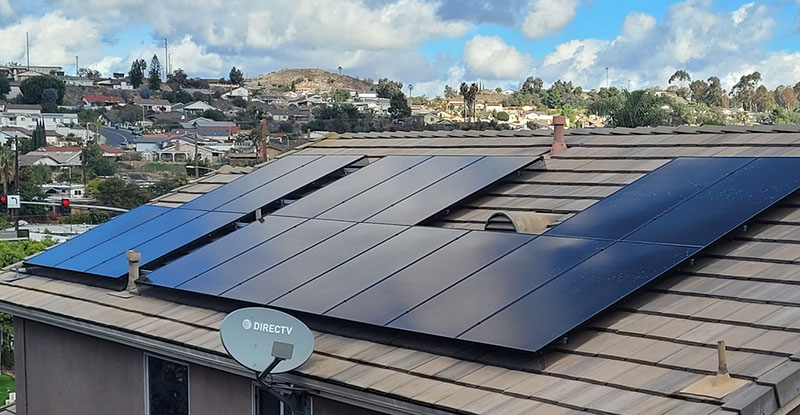
How To Choose The Best Solar Panels in 2023
Solar panels last a very long time and technology is always improving. How do you decide which panel is the right fit for you? Should...

Our Solar COVID-19 Guidelines
Solar.com is committed to providing our customers with the best customer service experience in the solar industry. In light of the ongoing developments around the...

U.S. Installed Solar Capacity: 2 Million Milestone
According to the most recent data released by Wood Mackenzie Power & Renewables and the Solar Energy Industries Association (SEIA), the residential solar market in...

Solar Subcontractors: Should I use one to go solar?
So, you’re interested in starting a solar project and now you’re wondering, “who should be doing the installation work?” Well, more and more companies...

5 Most Popular Solar Panels Chosen by Homeowners in 2018
Homeowners demand a lot from the solar panels they select for their rooftop system. These panels need to look good and perform well over multiple decades! Here...

Better Looking Solar Panels: System Aesthetics Comparison
As a homeowner, solar panel efficiency and cost may not be the only two factors you’re considering when deciding whether or not to go...

Brooklyn Solar Works Solar Canopy: The Comprehensive Review
As everyone knows, space is tough to come by in New York City. The same holds true when designing rooftop solar arrays. The city is...

8 Awesome New Technologies from Solar Power International 2018
Today, the Solar.com team took a break from our solar designs for a quick trip down to Anaheim for Solar Power International 2018. We...

The Essentials of Passive Solar Home Design
In the process of designing a home, there are a number of strategies that can be implemented to minimize the amount of energy required to...

South Korea's Q CELLS to Open Georgia Solar Factory
In the wake of US tariffs on non-domestic solar modules, Q CELLS is opening a solar module factory in Georgia. The South Korean company announced...

What Direction Should My Solar Panels Face?
When you make the decision to install a solar panel system at your home, there are going to be several questions on your mind. How...

India Gets Serious About Solar
According to Indian Prime Minister Narendra Modi, India is on track to install 200 gigawatts of renewable capacity by 2020. The country is fully embracing...

Can My Solar Panels Withstand a Hurricane?
If you live in an area that experiences extreme weather like hurricanes, hail, thunderstorms, blizzards, heavy winds and more, then you should take the...

Why Are Solar Panels Blue?
If you have ever driven through a residential neighborhood in states like California, Arizona, North Carolina, or any of the other top states for solar,...

What Solar Options Are There Besides Rooftop Solar?
When you think of solar, you probably imagine a solar panel-lined rooftop. For many homeowners, rooftop solar is usually the way to go. But it...

Brand Battle: Hyundai vs. Panasonic Solar Panels
Hyundai and Panasonic are trusted brands and they’ve both expanded into the solar panel industry. Offering quality products for two different price points, each brand...

Why New York Loves SunPower Solar Panels
New York loves its Yankees — and its Sunpower solar panels. A recent review of the Solar.com platform showed that homeowners in New York state...

Should I Get a Solar Thermal System Instead of a PV System?
When you hear about installing solar, you’re most likely hearing about PV (photovoltaic) solar cell panels. They’ve become standard in the industry. PV solar cell...

How to Conduct Due Diligence on Your Solar Project
Once you’ve decided to install a solar panel system at your home, the next thing to focus on is conducting the proper due diligence on...

How Utility API Works With Your Utility and Solar Company
Utility API provides software to accelerate the clean energy movement. They do this, in part, by offering secure data on a homeowner’s energy usage to...

What's the Size of a Solar Panel? Solar Panel Size and Weight...
If you are thinking about installing a solar panel system at your home, one of the first things you must consider is how much...

American Solar Panel Manufacturers - 2018 Complete List
There are many reasons why a consumer may want to purchase their solar panels from an American manufacturer or from American Solar brands. They want...

A Guide to Solar Panel Mounts
Solar panel mounts are a common component of almost every solar panel array. Although there are newer solar panel technologies coming out that do not...

Top 5 Solar Panels Selected Through Solar.com in 2017
Curious which solar panels are selected most on the Solar.com platform? As an online marketplace connecting quality solar companies to customers, we stay neutral...

SunPower Solar Panels vs. LG Solar Panels - 2018 Update
SunPower and LG are two of the top companies making solar panels. You’ve probably come across them in your research, and you’re wondering which will...

How Blockchain And Solar Can Work Together
Many would consider 2017 to be the year of cryptocurrency. Coins like Bitcoin, Litecoin, Ripple and dozens of others have shot up 1,000%+ and do...

The Craziest Solar Technologies Coming in 2018
Solar technology has been in existence since 1876 when William Grylls Adams and his student researcher discovered that you can produce electricity by exposing selenium to...

3 Solar Panel Innovations to Look for in 2018
Solar energy is taking shape across industries and geographies. Engineers at top solar panel companies are hard at work developing innovations making solar even more...

6 of the Most Common Solar FAQs
Solar is now more affordable and practical for the consumer than ever before, and because of this, it is starting to make sense to think...

An Overview of Panasonic's Solar Panel Offerings
With all of the advances in the solar industry, it is getting more practical and affordable to start using solar. In fact, the price of...

5 Reasons to Consider a Career in the Solar Industry
Solar energy, unfortunately, is still viewed as an alternate power source. However, in spite of this designation, it is quickly becoming the primary source of...

Installing Solar in Nepal
Working in the energy sector in America can be fast paced. It is primarily focused on reducing homeowners energy bills. Cost is king. My days...

How To Properly Evaluate Solar Panel Companies
There are so many details to take into account when choosing the right solar system for you. One of the most important factors is,...

Installing Solar On Spanish Tile Roofs
Spanish tile refers to the style of the tile, not the material. Spanish tile is usually made of either clay or concrete. Installing a solar...

Invisible Solar Cells - What Are They?
We have come a very long way from the first line of solar panels. Despite their sustainability, the first solar panels were not the most...
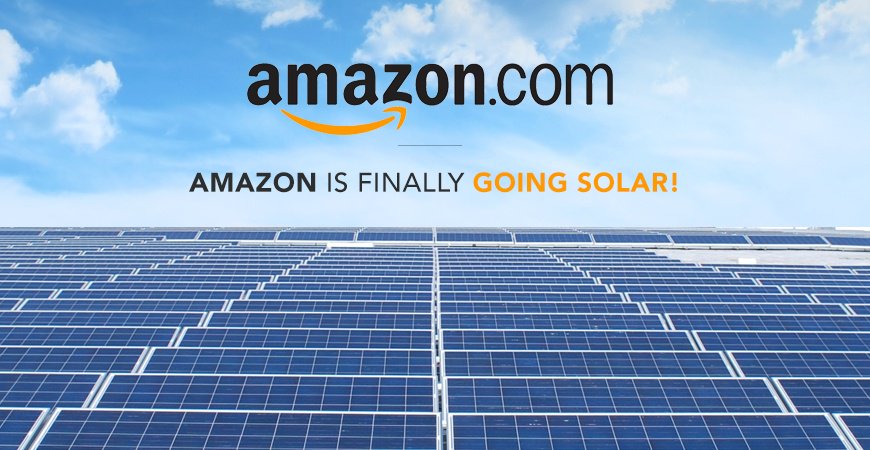
Amazon Has Finally Decided To Become A Leader in Renewable Energy
Back in 2015, Greenpeace did a sophisticated research project on the sustainability of the top tech giants in the United States. It covered many areas of sustainability,...

Solar Backup Power - Will My Solar Panels Work in a Grid...
Solar photovoltaic panels are created to absorb the sun’s energy and convert it to usable AC energy in your home. You may be wondering then,...

A Review of LG Solar Panels - When Brand Name Does Matter
LG is a brand you may already be familiar with. They are a South Korean multinational manufacturer that makes televisions, mobile devices, tablets, smartwatches and...

Will Tesla's Solar Panels Change The Industry?
On October 28, 2016, Elon Musk unveiled Tesla’s solar roof product – a line of roof tiles and shingles with embedded photovoltaic cells. To an...

Electrical Panel Upgrades for Solar: A Technical Case Study
John Smith is a homeowner in California looking to reduce his electric bill by going solar and he decided to call an installation company that...

SunPower Solar Panels vs. LG Solar Panels
If you are considering installing a solar system at your home or place of business, then you have many factors to consider. The paramount factor...
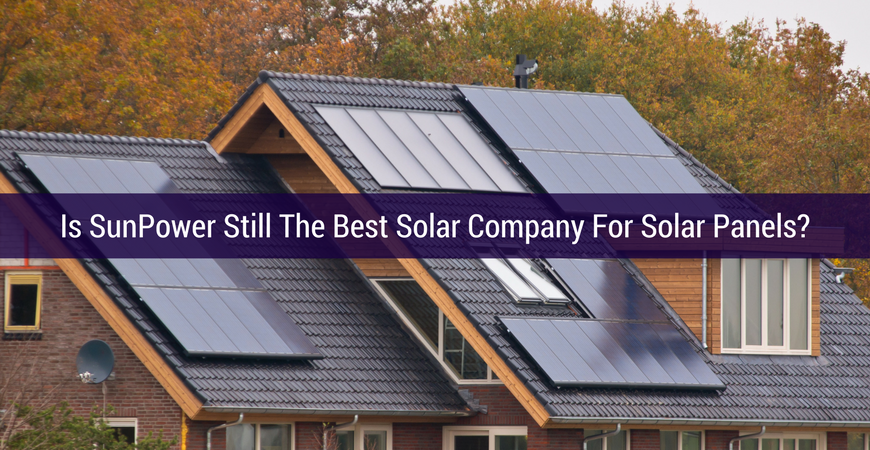
Is SunPower Still The Best Solar Company For Solar Panels?
You’ve heard of SunPower, LG, SolarWorld, Q CELLS, and maybe even Canadian Solar, but which one is the right fit for your home? To figure...

What Trump's Presidency Means for the Solar Industry
The election of Donald Trump to the office of President of the United States is expected to have a profound impact on the future of...

Importance of Power Tolerance in Solar Panels
This paper highlights the importance of power tolerance when choosing solar panels. Power tolerance is a measure of how much electrical power a solar panel...

Gauging the Bankability of Small to Mid-Sized Solar Installers
The entire world is going green and moving toward cleaner sources of energy. California hosts a flourishing solar industry with a burgeoning number of solar...

Ann Arbor Takes Steps to Promote Residential Solar
Home to Michigan’s largest solar panel array of 1.1 MW and one of the top green research universities in the country, Ann Arbor has a...

Measuring Home Energy Use
One of the most important steps before installing home solar is figuring out how much energy your home uses, and how big your solar energy...

Three Things to Avoid When Installing Your Solar Panel System
At Solar.com, we have a lot of experience in the solar panel industry. Every day we help people to install panels on their homes, and...

The Benefits of Floating Solar Panels
Floating solar panels utilize the same technology as the panels that you put on your roof. The main difference is that they’ve been adapted...

The Top Three Solar Manufacturers
At Solar.com, we believe in supplying quality equipment for our customers. In the last twenty years, solar technology has grown exponentially, costs have plummeted, and...

Elon Musk's Gigafactory Should Be Dictating Your Solar Equipment
All solar installations today should be thinking ahead to the not-so-distant future. The main question to be asking is whether your solar system will seamlessly...

The Solar “Tipping Point” is Looming
We all know why people go solar: investment purposes, immediate savings, environmental concerns, and grid independence. But who are these people? One of Malcom Gladwell’s...

4 Mistakes Homeowners Make When Going Solar
Buying a solar system for your home can be a confusing process. At Solar.com we’re committed to helping homeowners sort through it all and...

Solar Installation Horror Story
The following letter is from a very reputable company in Solar.com’s installer network to a homeowner who was unfortunately taken advantage of by an installer...

Bankability: What it Means and Why it is Important for Your Solar...
Homeowners who are considering solar typically overlook the manufacturer of their solar panels, despite this being one of the most important factors for the longevity...

How ‘Big Data’ Will Change The Solar Industry
The U.S. Department of Energy invests in new technology to revolutionize the landscape of solar data. Reliable solar grid data, the true performance of solar...

Los Angeles Solar Installation Permit Process About to Get Easier
Here at Solar.com, we want to see solar panels on every compatible rooftop in the U.S. And while our plans for expansion are ambitious,...
See how much solar panels cost in your area.
Zero Upfront Cost. Best Price Guaranteed.

How To Find the Best Solar Panels for Your Home in 2024
Trying to determine the best solar panels for your home is like trying to determine the best car – there’s no one correct answer. Everybody...

How Does Solar Power Work on a House? Your Questions Answered
How does solar power work? A simple explanation is that solar panels convert sunlight into electricity that can be used immediately or stored in batteries....
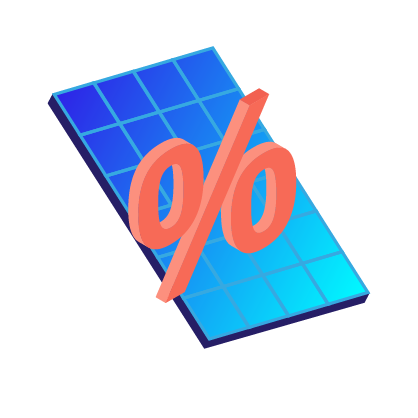
Solar Panel Efficiency - Pick the Most Efficient Solar Panels
You may hear the term “efficiency” thrown around a lot when reading up on solar panels. It sure sounds like a good thing, but what...

Solar Inverters: Types, Pros and Cons
What is a solar inverter? Solar energy doesn’t provide electricity in a format that your table lamp could be powered by. Inverters change the power...

When beginning your home solar project, you might start by searching “Solar Providers Near Me.” Then, you'll be presented with dozens of different solar companies...

Charging Your EV With Solar Panels and Using the EV Tax Credit To Lower the Cost
Ditching your gas-guzzler for an electric vehicle (EV) is a great way to lower the cost and emissions of getting from A to B. But...

It’s no secret that many of us spend a large portion of our income on energy and electricity bills. In fact, in 2012 we spent...

Solar for condominium unit owners is gaining steady popularity throughout the country, as more and more states are writing legislation to promote clean energy accessibility....

Going solar isn't something people do everyday and unless you have an electrical engineering degree, it's likely you'll bump into some new phrases and terms....
Join our free newsletter to learn more about going solar
Solar Panels for Boats
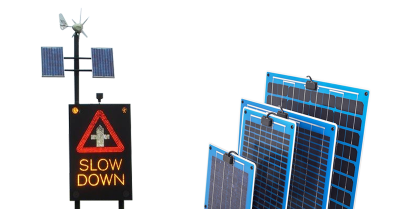
- 30 Years Experience
- Applications
- Types of Solar Panel for Boats
Surface Mounted Solar Panels
Gantry mounted solar panels, 30 years of experience.
As a distributor of marine solar panels Marlec has advised and supported the British Marine Federation for many years in matters of solar power for boats. In collaboration with the World Cruising Club our knowledge and understanding of ARC participant s needs are well understood. You can purchase marine solar panels directly from us and build up your own solar power system, or speak to our team of wind and solar experts about planning your energy needs for your trip to ensure your power system reliability. For over 30 years Marlec has been providing wind and solar power for boats putting us in a unique position to advise and supply you with a suitable solution.
View our Introduction to Solar & Wind Energy for your boat: https://youtu.be/IfWAiYWKU6k
View our Introduction to Solar Energy & Solar Panels for your boat: https://youtu.be/xcf8J4LM_rk
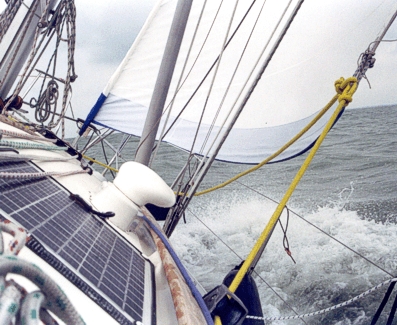
Types of Solar Power for Boats
It is important to use marine solar panels to ensure that you have a system designed to withstand the harsh conditions at sea. Flexible solar panels can be used to create a flush finish and can even be walked on, or solid framed glass panels can be used for a higher power density and for extra mounting options.
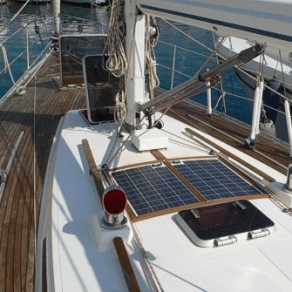
- 10W – 200W Power Rating
- Semi-Flexible
- Surface Mounting
- Standard and Pro Modes Available
- A Mono Crystalline Solar Cells (Standard)
- SunPower Cells (Pro Models)
- Ultra-Lightweight
- 3m Twin Core Cable Included
- Blocking diode included
Spectra PERC-S
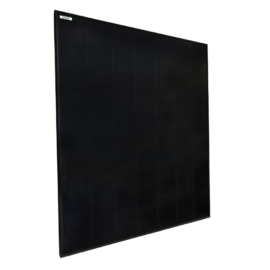
- 30W-400W Power Rating
- Glass Frames
- Identical Frame Lengths for Combing Different Ratings.
- Uses PERC Technology
- Shingled Cell Module Design
- By-pass Diode configuration to avoid ‘hot spots’.
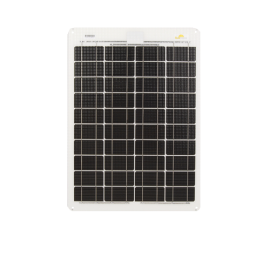
- 24-69W Power Rating
- Semi-Flexible
- Surface Mounting
- Marine Grade Stainless Steel
- EVA Surface
- Teflon Coated Surface
- 3m Seawater Sealed Cable Included
- Blocking diode Included
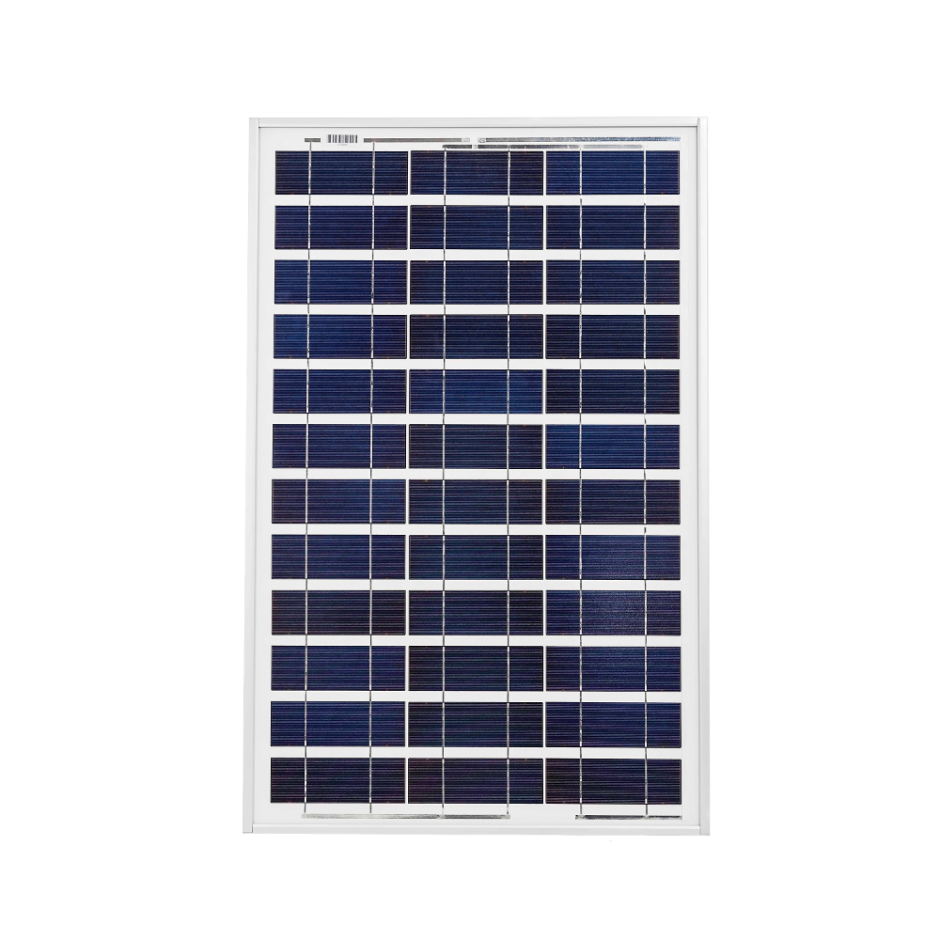
- 10-140W Power Rating
- Framed (Not Flexible)
- Gantry/Bracket for Mounting
- Silver Anodised Aluminium Frame
- Transmissive Toughened Glass
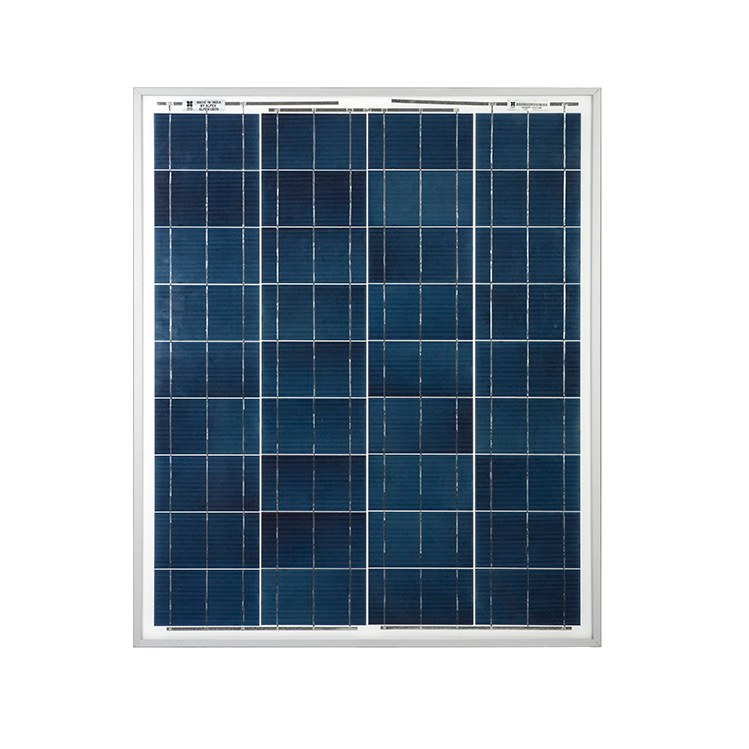
- 10-135W Power Rating
- Framed (Not Flexible)
To be laid or fixed to a surface/deck.
- Ideal for when deck space is at a premium
- When used on a temporary basis can be moved into the sun and away from shade
- Lightweight and flexible
- Can be walked on in boating shoes
- Simple to remove and store
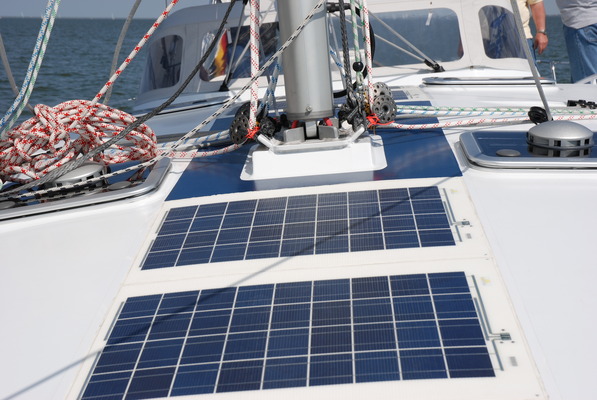
Solid framed modules to be mounted using mounting kits or by other means.
- Solid mount above deck reduces shading from overhead objects
- Allows for larger arrays and therefore greater power consumption
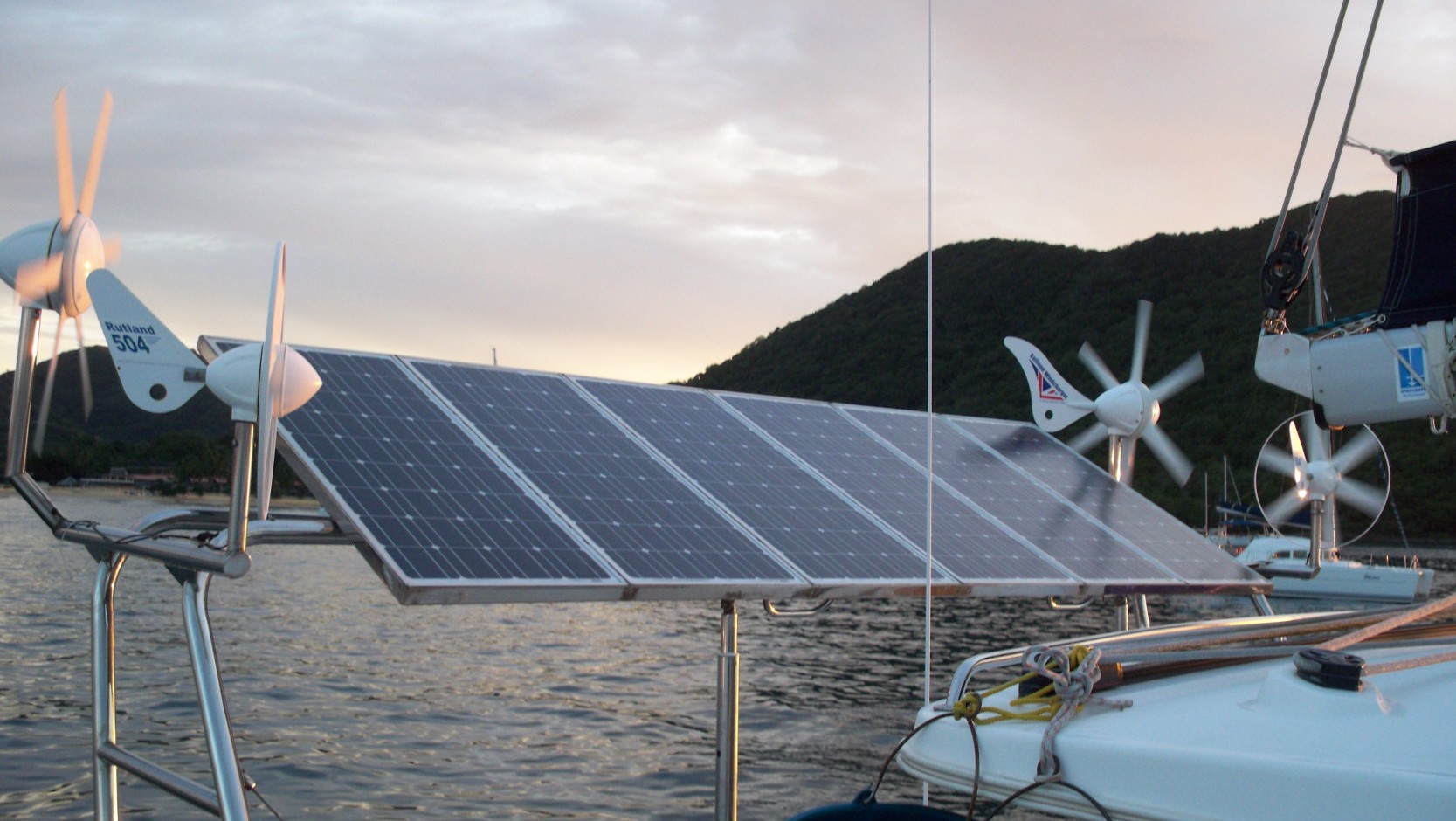

- Ultimate Drives
- Ultimate Gift Guide
- Editor's Picks
- Robb Recommends
- DESTINATIONS
- HOME DESIGN
- REAL ESTATE
This New Solar-Electric Catamaran Comes With A Massive, Fold-Down Beach Club
Rachel cormack.
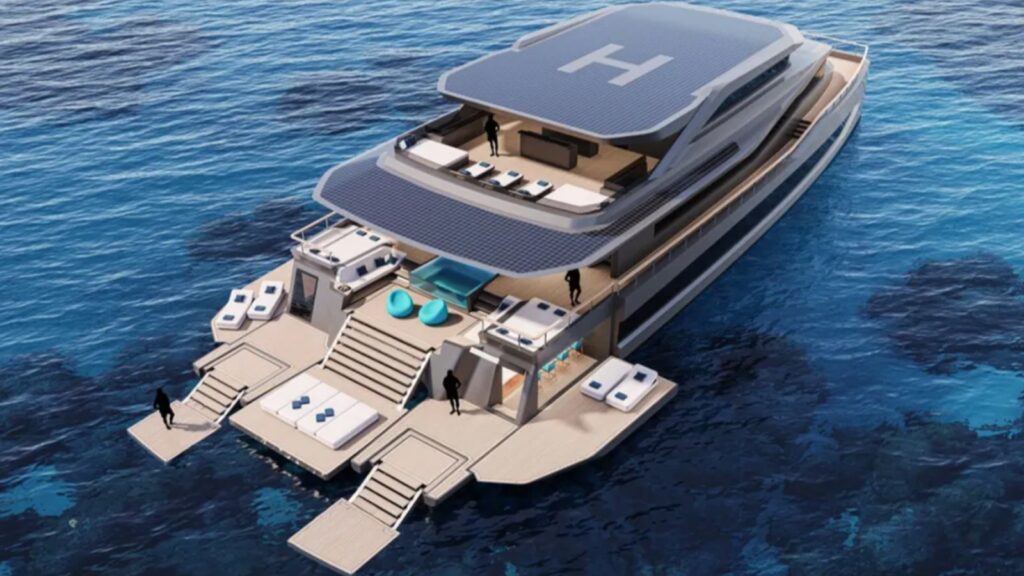
Cosmopolitan Yachts just unveiled an electrifying new catamaran.
The simply named Cosmopolitan 125 spans, you guessed it, 125 feet, making it the largest model in the burgeoning Spanish yard’s five-strong lineup. The zero-emission newcomer is also equipped with a hybrid solar-electric propulsion system that makes it cleaner and more efficient on the high seas than traditional diesel-powered yachts of a similar size.
The 125 features a lightweight aluminum exterior and sleek, modern lines. With a focus on sustainable luxury, the cat is replete with innovative, eco-friendly materials and the latest green technologies. Solar panels have been integrated into the rooftop, for instance. The yard didn’t share exact specs but says the yacht can traverse the seas sans emission at a cruising speed of 10 knots.
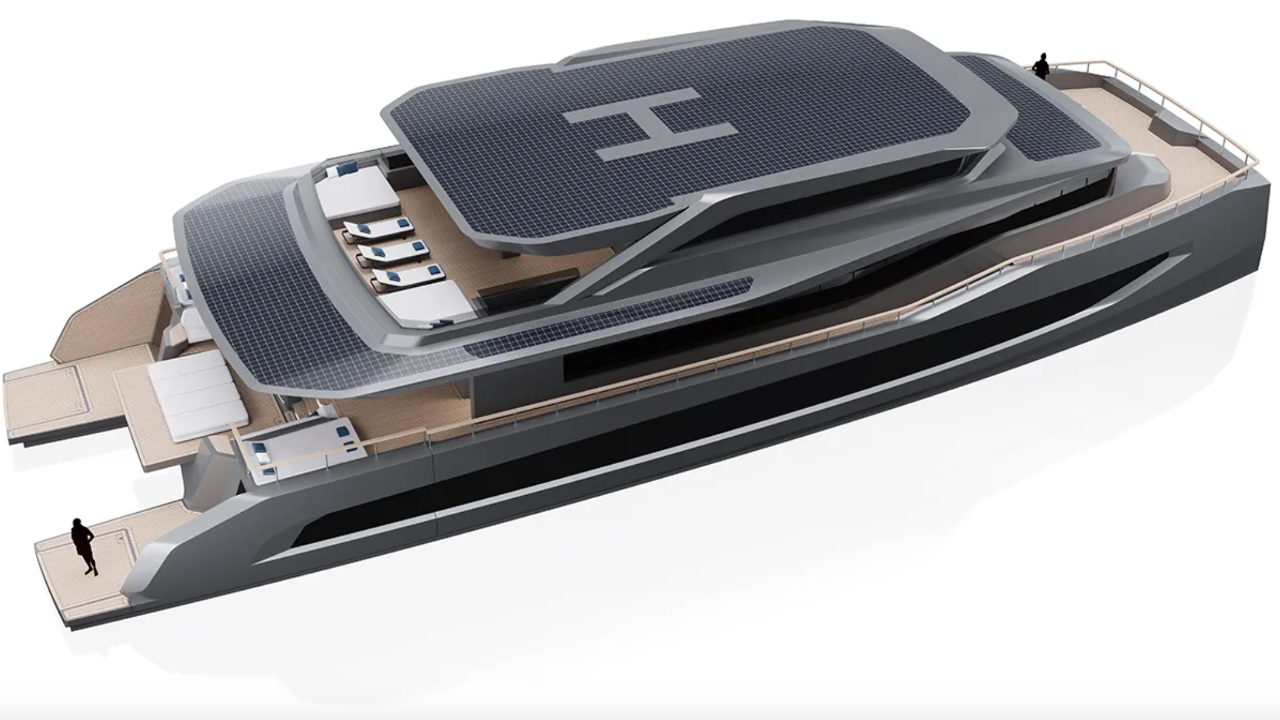
Described as a floating haven by Cosmopolitan, the multihull has an impressive interior volume of 500 GT and offers nearly 6,500 square feet of deck space. The living quarters are replete with “state-of-the-art amenities and luxurious finishes,” according to the yard.
The spacious layout includes four VIP guest cabins, one owner’s suite with a private terrace, three crew cabins, and a captain’s cabin. The guest accommodation is spread across the lower and main decks, while the owner’s cabin can be positioned on either the main deck or the bridge deck. The crew quarters are located on the lower deck, along with the crew mess, galley, and laundry.
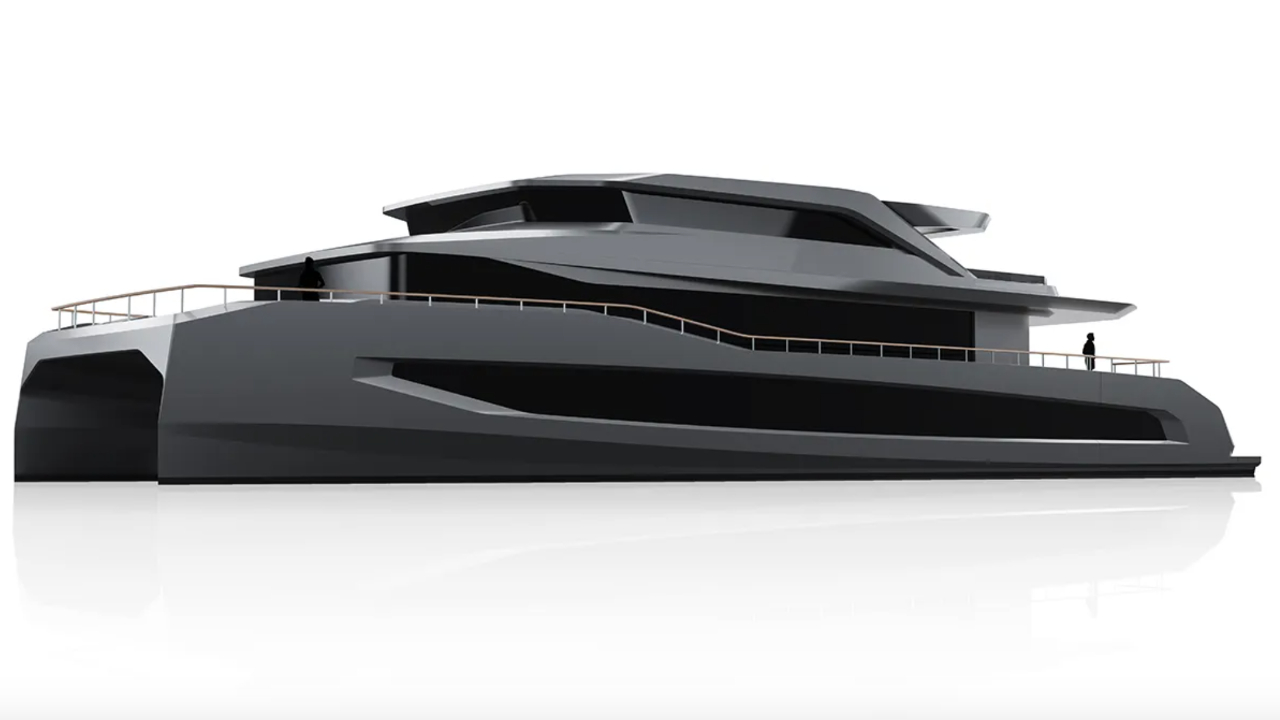
The 125 offers more than just a place to sleep, of course. The main deck is home to a large living room with a TV and game area, while the upper deck is outfitted with a giant dining area and bar. A second bar and a gym can be found on the lower deck. Alfresco lounges are positioned forward and aft, while a helipad sits on the uppermost deck.
One of the standout features of the 125 is the beach club. The innovative platform is fitted with expandable terraces that open directly over the water to transform the stern into what Cosmopolitan calls “a private waterfront resort.” The sprawling space, which affords guests direct and easy access to the sea, can be used for sunbathing, swimming, or sundowners.
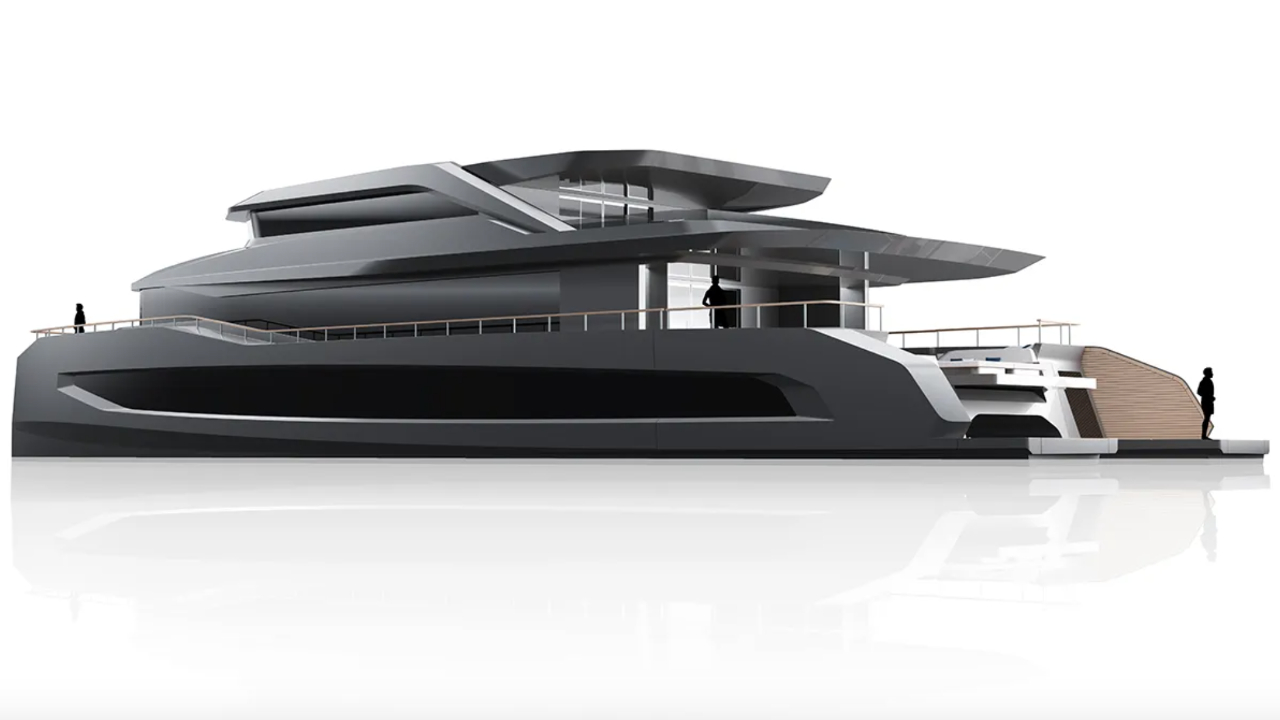
Cosmopolitan Yachts was founded by Christian Braun and Iván Salas Jefferson in 2021. Based in Barcelona, the yard specializes in custom aluminum catamarans with highly efficient electric propulsion systems. The range currently includes four models ranging from 70 to 111 feet and, of course, the electrifying new 125.
Cosmopolitan Yachts
Previously published on Robb Report USA
Most Popular

People | Wheels
Power Individuals: Anas Zawawi Khalid Of Rolls-Royce Motor Cars Kuala Lumpur

Tengku Amir Shah on the future of Ferrari in Malaysia

Fashion | Timepiece
Urwerk Has A Handsome Tribute To 'Star Trek' And Spock

From Diptyque To Tom Ford, You Should Own These 15 Freshest Summer Colognes For Men

12 Unique Mooncake Gift Boxes And Mid-Autumn Festival Experiences This 2024

Destinations | Properties
A Sneak Peek Of Marina Bay Sands’ Latest Offerings, Including Singapore Formula 1 Festivities, Exhibitions, And More
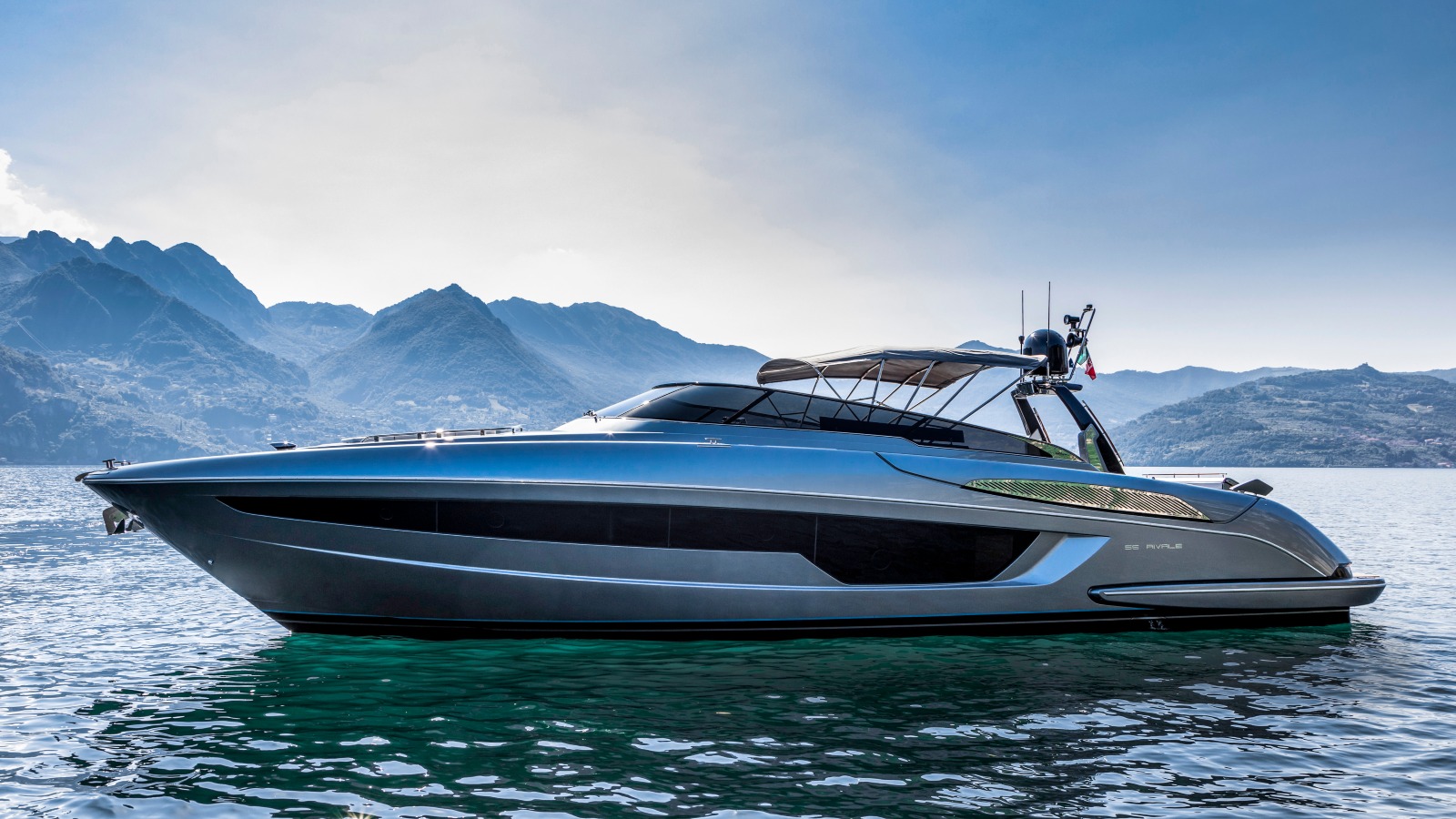
Sign up for our Newsletters
Stay up to date with our latest series

- Privacy Policy
- Terms & Conditions
- Distribution
Published by Robb Report Malaysia under license from Robb Report Media, LLC, a subsidiary of Penske Media Corporation.
- Destinations
- Home Design
- Real Estate
- Editor’s Picks
- France – IGY Sète Marina
- France – IGY Vieux-Port de Cannes
- Italy – Cala di Volpe Mooring Buoys
- Italy – IGY Portisco Marina
- Italy – Marina Di Porto Cervo
- Kingdom Of Saudi Arabia – Sindalah Marina
- LONDON – ST. KATHARINE DOCKS
- SAVANNAH, GA – IGY SAVANNAH HARBOR MARINA
- Spain – IGY Ibiza Marina
- Spain – IGY Málaga Marina
- St. Lucia – Rodney Bay Marina
- St. Maarten – Simpson Bay Marina
- St. Maarten – Yacht Club Isle De Sol
- St. Thomas, USVI – American Yacht Harbor
- St. Thomas, USVI – Yacht Haven Grande
- Turks & Caicos – Blue Haven Marina
- MANHATTAN, NY – NORTH COVE MARINA AT BROOKFIELD PLACE
- Miami, FL – Yacht Haven Grande at Island Gardens
- St. Petersburg, FL – Maximo Marina
- Colombia – Marina Santa Marta
- Costa Rica – Marina Bahia Golfito
- Mexico – Marina Cabo San Lucas
- Panama – Red Frog Beach Marina
YACHT MANAGEMENT
- France – IGY Vieux-Port de Cannes
- Italy - Cala di Volpe Mooring Buoys
- Italy – Marina Di Porto Cervo
- Kingdom Of Saudi Arabia - Sindalah Marina
- LONDON – ST. KATHARINE DOCKS
- Spain – IGY Ibiza Marina
- Turks & Caicos – Blue Haven Marina
- MANHATTAN, NY – NORTH COVE MARINA AT BROOKFIELD PLACE
- Portland, ME – Fore Points Marina
United States Caribbean Latin America Europe KINGDOM OF SAUDI ARABIA Destination Charter Itineraries
- United States American Yacht Harbor Maximo Marina Yacht Haven Grande Miami at Island Gardens North Cove Marina at Brookfield Place Yacht Haven Grande USVI IGY Savannah Harbor Marina VIEW ALL MARINAS
- Carribean American Yacht Harbor Blue Haven Marina Yacht Haven Grande USVI Rodney Bay Marina Yacht Club Isle De Sol Simpson Bay Marina Red Frog Beach Island Marina Marina Santa Marta VIEW ALL MARINAS
- Latin America Marina Bahia Golfito Marina Cabo San Lucas Red Frog Beach Island Marina Marina Santa Marta VIEW ALL MARINAS
- Europe IGY Vieux-Port de Cannes Cala di Volpe Mooring IGY Portisco Marina IGY Sete Marina Marina Di Porto Cervo IGY Malaga Marina St. Katharine Docks IGY Ibiza Marina VIEW ALL MARINAS
- KINGDOM OF SAUDI ARABIA SINDALAH MARINA VIEW ALL MARINAS

- Superyacht Miami Yacht Have Grande Miami Miami International Boat Show | Feb 15 – 19 VISIT EVENTS PAGE

- Safety & Security
- Crew Administration
- Financial Administration
- Technical Support
- Documentation
Island Global Yachting Announces Inauguration of Solar Power Project at IGY Yacht Haven Grande in St. Thomas, USVI
by Tammy | Sep 11, 2024
PRESS RELEASE
For immediate release:.

St. Thomas, USVI | September 12, 2024 – Island Global Yachting (IGY) LLC, the only global portfolio of premium yachting destinations, today announced the activation of a large-scale solar power generation project at Yacht Haven Grande in St. Thomas, U.S. Virgin Islands.
Clean, Renewable Energy
The project is a collaboration between IGY and Prosolar Caribbean, a leading solar energy provider in the region. IGY installed a rooftop photovoltaic generation array that generates clean, renewable energy for the mixed-use property. Power from panels will supply a meaningful share of Yacht Haven Grande’s energy needs, reduce the property’s reliance on fossil fuels and lower its carbon footprint. Additionally, the project will lessen demand on the local utility grid, freeing up power for use by the surrounding community.

“This solar project is a milestone for IGY’s renewable energy solutions and our ongoing commitment to sustainability initiatives across our global portfolio of industry-best marinas. We are committed to working with our partners to find innovative ways to reduce our environmental impact and create a more sustainable future for the marina industry.” said Steven English, IGY’s President.
Commitment to Sustainability
“We are thrilled to announce the completion of our first solar panel project at Yacht Haven Grande Marina,” said Eric Simonton, Executive Vice President of Real Estate at IGY. “This project is a significant step forward in our commitment to sustainability and environmental responsibility.”
About Yacht Haven Grande, St. Thomas, USVI

As a flagship marina of IGY’s global network, Yacht Haven Grande, St. Thomas continues to establish new standards within the global industry with this new solar power project. Notably, the 5 Gold Anchor Platinum Marina has won TYHA’s International Superyacht Marina of the year an unprecedented 4 times and is one of the busiest charter destinations in the Caribbean. The destination is a dedicated superyacht marina capable of berthing yachts over 656 ft. (200m). The Shops at Yacht Haven Grande are an integral part of the economy in USVI occupying 130,000 ft 2 which include 11 restaurants, duty-free shopping, charter companies, provisioning, and spectacular event space, including the iconic Harbor360 building. There is always something exciting happening at this IGY destination, making it a vibrant hub for dining, entertainment, and luxury services for locals and visitors alike.
### END ###
About IGY Marinas
IGY’s worldwide marina network sets luxury standards for service and quality in nautical tourism. IGY has the only global portfolio of premium yachting destinations, serving over 10,000 annual customers at 23 marinas across 13 countries.
IGY’s unprecedented collection of marinas spans the Americas, Europe, and Middle East serving a variety of vessel types, and is the home port for many of the world’s largest superyachts. As a proud subsidiary of MarineMax, a publicly listed company on the New York Stock Exchange (NYSE: HZO), IGY Marinas benefits from its affiliation with the world’s largest recreational boat retailer and other MarineMax companies including Fraser Yachts ( www.fraseryachts.com ) and Northrop & Johnson (www.northropandjohnson.com). MarineMax not only holds a dominant position in boat sales but also excels in yacht brokerage, charter services, and overall maritime support. Discover IGY Marinas’ network at www.igymarinas.com .
IGY Media Contact: +1-954-510-3309 / [email protected]
About Prosolar Caribbean
Prosolar Caribbean is a leading provider of solar energy solutions in the Caribbean. The company offers a wide range of solar energy products and services, including solar panel installation, battery storage, and financing. Prosolar Caribbean is committed to helping businesses and homeowners in the Caribbean reduce their reliance on fossil fuels and save money on their energy bills. For more information, visit https://prosolarcaribbean.com/ .

RESTAURANTS AND SHOPS
From breakfast at the quayside, all the way to dinner on a rooftop terrace, menus range from fresh fish or pizza to traditional Sardinian cuisine that are also available for takeout or delivery onboard. The supermarket, conveniently located on the dock, specialty shop and liquor store offer a wide selection that are available for delivery to your vessel.
BWA YACHTING
BWA Yachting is a worldwide yacht agency and yachting services provider formed to support captains, managers and crew, making their lives easier, assisting with the increasing demands of managing a modern superyacht. Our global office network stretches throughout the Mediterranean, Northern Europe, the Caribbean and the Americas, providing a unique and seamless experience, wherever our clients are cruising. The BWA Yachting service can be anything from planning a complete trip, saving you time and a lot of hassle, with just one point of reference to the handling of a single port call or last minute concierge request. That’s everything from clearance procedures to berthing reservations, bunkering, provisioning, fiscal advice, logistics, technical assistance, travel arrangements, and more.
www.bwayachting.com Tel.+377 93 500 277 [email protected]
BOOK A SERVICE
Host your event in harbor360, download brochure, contact us today, coming soon, this part of our website is still under maintenance and will be available soon , find cruise lines.
Norwegian Cruise Lines Cruises: Norwegian Cruise Line Cruise Deals | NCL Cruises
MSC MSC Cruises Official Global Website – Select your Country
Celebrity Cruises Cruises: Award-Winning Luxury Cruise Line | Celebrity Cruises
Virgin Voyages Caribbean & European Cruise Vacations | Virgin Voyages
TUI Marella Cruises | Cruise Holidays 2023 / 2024 | TUI.co.uk
RCCL Cruises – Amazing Cruises and Cruise Deals | Royal Caribbean Cruises
Star Clipper Star Clippers UK – Home
FIND FERRIES
TRANS COTE D’AZUR 04 92 98 71 30 https://www.trans-cote-azur.com/
RIVIERA LINES 04 92 98 71 31 https://www.riviera-lines.com/
HORIZON 04 92 98 71 36 https://www.horizon-lerins.com/
PLANARIA 04 92 98 71 38 https://www.city-life.fr/
More Information Coming Soon!
General inquiries, need assistance.
- October to April : Monday- Friday 8:00AM to 6:00PM Weekends & Bank Holidays: 8:30AM to 12:30PM and 1:30PM to 5:00PM May and September: 8:00AM to 7:00PM June to August: 8:00AM to 8:00PM

60 Sunreef Power Eco
Like all the other models in the range, the 60 Sunreef Power, which we got the chance to try out in 2021, is available in an Eco version, i.e. with electric motors and solar panels - including on the outer hull sides as an option. This forever green version was presented to the public for the first time at the Cannes Yachting Festival.
Create a notification for News from the builders
We will keep you posted on new articles on this subject.
Published 13/09/2024
By Norbert Conchin et Emmanuel van Deth
Published: sept. / oct. 2024

Choose the option that suits you best!
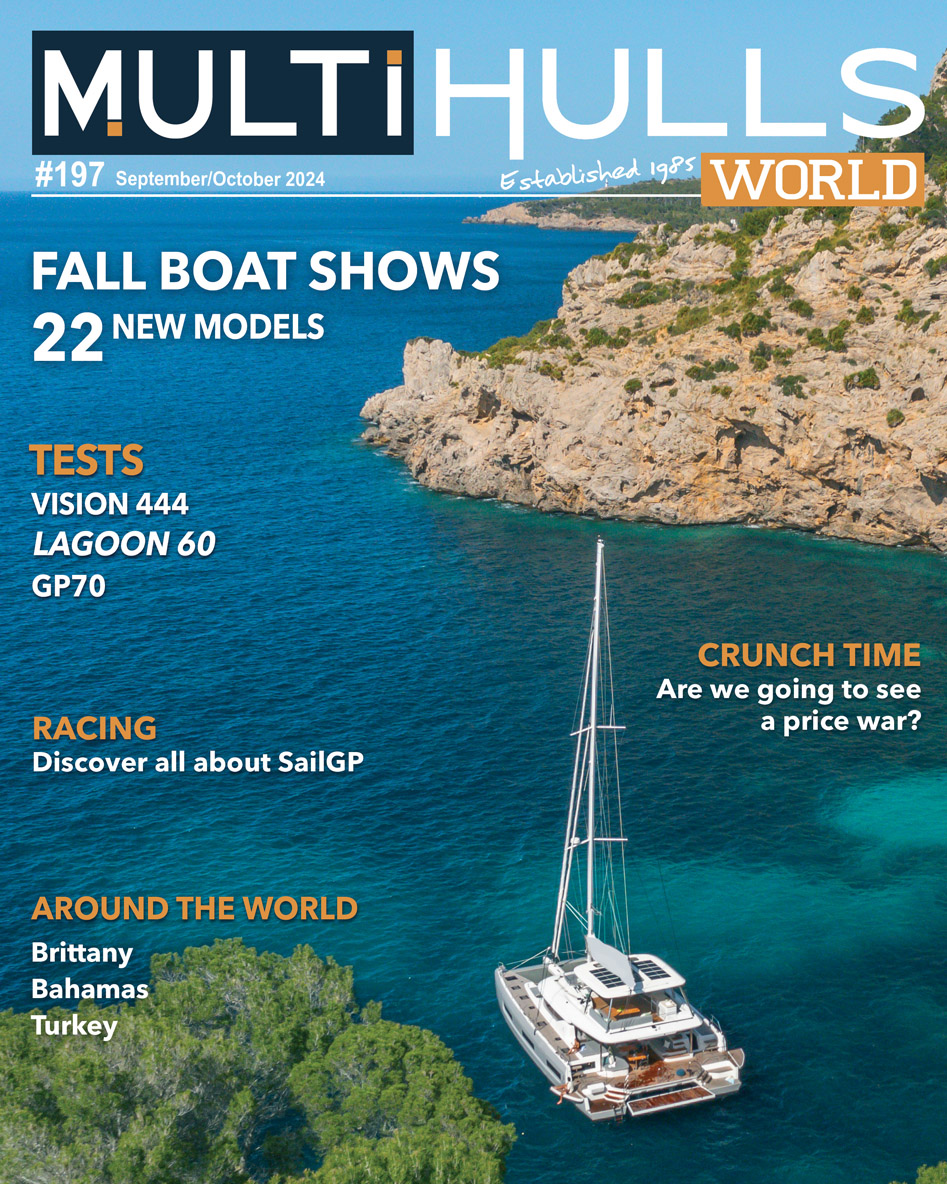
Issue #: 197
Published: September / October 2024
- Price per issue - digital : 6.50€ Digital magazine
- Price per issue - print : 9.50€ Print magazine
- Price with subscription : from 2.91€ Subscribe

Even though the 60 is the “smallest” powercat in the Polish shipyard's Power range, it already has all the attributes of an ultra-modern multiyacht. Thanks to its large beam, the 60 Sunreef Power offers an extremely spacious saloon. On the same level as the aft cockpit, this large semi-open space is fully customizable and bathed in sunlight thanks to a skylight and panoramic glazing. The large volumes of the lower deck can be customized to suit the sailing program and lifestyle of the individual owner. The hydraulic platform offers a relaxation area close to the water, perfect for watersports. As for the flybridge, it covers 345 sq ft (32 m²) and is equipped with a Jacuzzi… Builder: Sunreef Yachts Length: 60’ (18.3 m) Beam: 35’1” (10.7 m) Drivetrain: 2 x 120 kW Range: more than 3,000 nautical miles Price: on quotation
www.sunreef-yachts.com
Tags :
- 60 Sunreef Power ,
- 60 Sunreef Power Eco ,
- Sunreef ,
Most-read articles in the same category

Lagoon Neo program

Les Occasions du Multicoque et du Refit
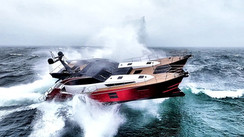
T-2000 Voyager

Dragonfly Days 2024

Bourgogne Catamaran

Rapido Trimarans
What readers think.
Post a comment
No comments to show.
Useful links
MW #197 - Oct / Nov 2024
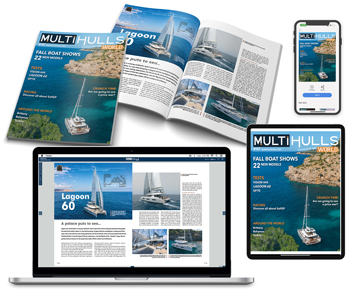
Subscribe now
The latest news from €3 / month
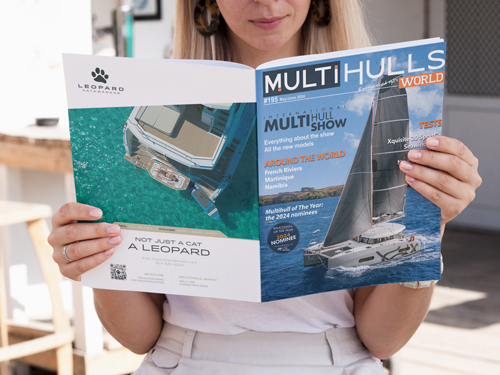
Video of the month
Our latest YouTube hit!

The Multihull of the Year
The 2024 results

Classified ads

Privilege 515 (2010 - refit 2021) v. 3 cabins

Power catamaran Fountaine Pajot Greenland 34 - fully self-sufficient

Vous avez ajouté " " à vos favoris.
Vous avez supprimé " " de vos favoris., in order to add this article to your favorites, please sign in..
Boats on solar panels were tested in Moscow
Language: Russian Duration: Short Country: Russia Filming location: Russia, Moscow All the rights belong to: TV BRICS Video resolution: 1080p
Related videos
- Yachting World
- Digital Edition

Starlink at sea: all change for cruisers
- May 13, 2023
Starlink has shaken up its offering for cruising sailors with a crack down on service term violations and new data plans

Starlink, Elon Musk’s low orbit satellite network which delivers low cost high speed internet via a portable dish, has shaken up its offering for cruising sailors and other broadband users at sea.
Starlink has been hailed as a game-changer by many adopters. Since its launch just two and a half years ago, its coverage has expanded rapidly and many cruisers crossing the Atlantic last season reported full service mid-ocean. Even cruisers in remote Pacific regions have been reporting excellent connectivity while at sea.
In March this year, four American sailors were rescued after their yacht Raindancer sank mid-Pacific in what may well be the first Starlink-enabled rescue. While the conventional rescue communication protocols worked effectively, their rescue was accelerated by the fact that several other yachts on the route were made aware of their plight from browsing Facebook while online, and a Whatsapp group was set up to help coordinate their rescue among boats with fast connectivity (see June issue of Yachting World for the full story).
However, most recreational sailors have been using Starlink Roam, previously known as Starlink RV (‘recreational vehicle’) – a plan designed for those in touring vehicles, off grid cabins etc, who needed connectivity whilst stationary – and, critically, on land. The original dedicated Maritime version was designed for commerical use, with subscription initially costing around £5,000 per month.

Starlink dish fitted to a bimini structure on a cruising yacht. Photo: Phil Johnson/SV Sonder
Numerous Facebook groups sprang up, populated with instructions on how to ‘hack’ the standard Starlink dish to improve its connectivity on a moving yacht, though Starlink contracts always made clear that using a modified stardard dish and Roam connection whilst sailing was in breach of its warranty and terms of service.
However, over the past couple of week cruisers have been receiving emails from Starlink notifying them that the company is cracking down on this usage:
“Your Starlink has been used in areas that violate the terms and conditions of your service plan: your plan does not include service on the ocean. Starting as early as May 9th, 2023 you will be unable to connect to the internet on the ocean except to access your Starlink account where you can make updates to your account.”
The message then went on to recommend users change their service plan to one of their new, more expensive, ‘Mobile Priority’ plans (though considerably less than the previous Maritime plan).
It’s important to note that this crack down is not a change to Starlink’s usage permissions, the company is only enforcing its existing terms and conditions.
The notifications prompted a flurry of discusssion on the many Starlink user groups, with some joking that it ‘felt like Y2K all over again’, and concerns that connectivity would be cut off instantly at 0000hrs on May 9 (that wasn’t the case, although some customers have received repeated emails and connectivity warnings).
Starlink at sea
Starlink maps service areas into 15 mile cells, shown on its service maps as blue and black hexagons, determining whether that area is ‘land’ or ‘ocean’, marked in ‘blue’ and ‘black’ respectively. If the satellite technology detects that the dish is being used in a black hexagon it will consider you to be on the ocean. There are, unsurprisingly, a few anomalies – islands and promontories etc which have not been recognised as land etc.

‘Land’ and ‘Ocean’ areas as shown around the Canary Islands on the Starlink map. Source: Starlink.com
Starlink advised Roam users instead move to one of their Mobile Priority plans. However, in a pattern that will be familiar to anyone who’s followed Musk’s rapid-fire changes at Twitter, those policy options went through a series of updates and different pricing plans over the past week.
One possible solution for cruising users may be to subscribe to a Priority data plan which can be ‘toggled’ on and off as they move between land and ocean areas – although some users report that even after toggling ‘off’ they were still using data from the more expensive Priority plan.
Whilst many RV/Roam users have successfully used Starlink’s standard dish whilst in motion, Starlink now offers a dedicated ‘in motion’ option using a higher performance dish. The website currently shows Starlink Martime and Starlink Mobility packages from £247 per month with a hardware cost of £2410, though there are some hefty discounts currently being promoted to existing standard dish owners on new hardware costs

Will a securely anchored yacht running Starlink be viewed as ‘in motion’? Photo: Phil Johnson/SV Sonder
What’s not yet clear is whether the geo-locating technology considers being on anchor or in a marina as stationary or in motion. One email shared on a user group, apparently from Starlink customer service, says:
“You do not need the high performance dish to use in-motion service. However, using the regular dish in-motion voids the warranty, as it wasn’t deigned or built for in motion use. In motion means moving…. A boat at anchor is considered in motion. The bobbing motion will trigger the motion sensors in the dish.
“The non high perforamnce antennas may be used in motion now, and in the forseeable future. We do not anticipate removing this capability. A reminder however that they weill be out of warranty if used in motion.”
However, confusing, Starlink’s own FAQ page , under “Can I use Starlink in motion?”, advises:
“Flat High Performance Starlink is only available to be purchased in certain regions. If your account country is outside these regions, you can use your current Starlink hardware paired with the Mobile Priority data to access prioritized service globally on land and in the ocean while stationary.” [our underline]
User groups advise contacting Starlink direct if, for example, you want to use non-priority data while in port and only occasional in-motion priority data for an ocean passage. Options and restrictions also depend on which region cruisers purchased their dish in, and which address their data plan is registered to.
The other consensus among user groups seems to be that, unless you need seamless high speed connectivity because you are running a business whilst cruising or similar, not to rush to replace hardware or sign up for new data plans as they are rapidly evolving.

IMAGES
VIDEO
COMMENTS
Giosolar 1,000W flexible solar panel. Best flexible boat solar panel. Delivering a mighty kilowatt of power, (not far off the amount used by a one bedroom house), this Giostar package comprises ten separate 100W panels, each of which is 1,050 x 540 x 2.5mm in size. Capable of charging either 12 or 24V batteries, a kit of this magnitude is one ...
Look for the SunPower logo. Sun Powered Yachts is an authorized dealer of SunPower flexible solar panels 50W, 110W & 170W. High efficiency, marine flexible solar panels for your boat or yacht. Best warranty, highest rated & most durable. Disconnect from the dock and start sailing with the sun.
Our first model, the Silent 64, was launched to the market in 2016, several years before any other shipyard considered the possibility of going electric. Our founders began to research alternative energy sources to power yachts during the mid 1990s. Today, the technology of our in-house developed solar-electric drivetrain has been perfected and ...
Marine solar panels with best Sunpower cells, 23.7-25.4%+ efficient, A+ grade solar cells only. All info and consulting available to help you choose the ideal solar panels for your needs. ... We outfit sailboats, power boats, yachts, houseboats, trawlers, tugboats, pleasure boats, commercial fishing and ferry boats, navigation buoys, vans and ...
Everything you need to know about yacht solar power. Marine solar panels are becoming more efficient and eco-friendly. Dennis O'Neill reports on the latest design advances. Keeping your batteries topped up without having to run the engine is a continuous challenge for cruising sailors, especially those who are highly conscious of their carbon ...
A 10-watt horizontally mounted panel should generate between 3- and 5-amp hours per day. We'll need at least 13 volts to fully charge our 12-volt battery. As most solar cells generate at least 0.45 volts, you'll want a panel with a minimum of 33 cells, which should provide around 14.85 volts.
Our Top Picks For Solar Panels for Boats. Best Overall: Renogy Solar Panels for Boats Shop Now . Largest Panels: Rophie Solar Panels for Boats Shop Now . Most Durable: TopSolar Solar Panels for Boats Shop Now . Most Lightweight: ECO-WORTHY Solar Panels for Boats Shop Now . Easiest Installation: Sunway Solar Panels for Boats Shop Now .
THE AVAILABLE SPACE. In practical terms, a modern 40ft monohull would have the space for around 1,200W of PV panels (cockpit arch, sprayhood top, deck), maybe 1,500W with the addition of a few portable panels for use at anchor. The 1,200W of fixed position solar array could produce around 360Ah on a sunny summer's day (zero shading) or more ...
On the smaller 55 and the 64, Silent Yachts currently recommends a 19m2 kite that costs around €25,000 - a fraction of the cost of a new mast, boom, shrouds and sails. "The sail ...
Giosolar 1,000W flexible solar panel. Best flexible boat solar panel. Delivering a mighty kilowatt of power, (not far off the amount used by a one bedroom house), this Giostar package comprises ten separate 100W panels, each of which is 1,050 x 540 x 2.5mm in size. Capable of charging either 12 or 24V batteries, a kit of this magnitude is one ...
ALVA Yachts, the German builder of luxury electric solar catamarans and sail boats, has announced it is currently building the world's first fuelless 90ft superyacht catamaran with wings, the OCEAN ECO 90 H2. The first superyacht catamaran to run without fossil fuels and producing zero emission, the OCEAN ECO 90 H2 is designed with luxury ...
0.1. 2.88. Energy requirement for Aderyn Glas over the course of a day. 'Current' is Amps. 'Duty' is the portion of the day the (12V) appliance is powered up. eg Fridge 4A x 12V x 12hr = 576Wh. Next, you need to decide how much of this requirement should be met by the boat solar panels.
Solar Panel Placement . This is where most caution needs to be taken. When choosing where you are going to place your solar panels on your yacht or boat, you need to take two big things into consideration: shading and security. When it comes to shading, you want to make sure you place your panels in an area that receives the most sunlight.
Questions call 773-965-2546 Recreational cruising sailboats and powerboats (and commercial) - Having plenty of electric power on board while cruising can make the difference between a fantastic experience and a marginal one. We know; we are cruising sailors. If you are considering solar power for your sailboat or powerboat (or camper van) and want to learn more about the technology, check out ...
30 Years of Experience. As a distributor of marine solar panels Marlec has advised and supported the British Marine Federation for many years in matters of solar power for boats. In collaboration with the World Cruising Club our knowledge and understanding of ARC participant s needs are well understood. You can purchase marine solar panels ...
Solar Panels For Boats And Yachts. Written by: Heather Francis on August 12, 2023. Category: Gear & Apparel | 6 Min Read. Solar panels, or photovoltaic (PV) cells as they are known in the industry, have evolved in the past decade. Like cell phone technology, the size of solar panels has reduced over the years, while their efficiency has risen.
Sunreef Yachts produces solar panels in-house and uses a new (patent-pending) technology to integrate them within structural components. The panels are made of the industry's most efficient cells with a peak performance of 24%. Thanks to the solar cells' outstanding flexibility, Sunreef Yachts' solar panels can be mounted on any surface ...
The blue water capable ZEN50 lightweight racing carbon hulls are combined with a huge solar roof for an unrivaled solar power vs. displacement ratio above 1:1 (18 kW / 17 tonnes), making this yacht completely energy self-sufficient. A revolutionary, fully automated, wingsail - by Ayro© - can be added as a range and speed extender.
Solar panels have been integrated into the rooftop, for instance. The yard didn't share exact specs but says the yacht can traverse the seas sans emission at a cruising speed of 10 knots. ... Cosmopolitan Yachts was founded by Christian Braun and Iván Salas Jefferson in 2021. Based in Barcelona, the yard specializes in custom aluminum ...
The perfect mid sized electric solar catamaran. The OCEAN ECO 60 is an innovation packed solar assisted electric long-range cruiser that will perfectly suit customers who like to cruise and explore while yachting.Designed with luxury, safety and cruising comfort in mind, it is an example of the latest technological developments in the field of self-sufficient yachts surpassing its competition ...
St. Thomas, USVI | September 12, 2024 - Island Global Yachting (IGY) LLC, the only global portfolio of premium yachting destinations, today announced the activation of a large-scale solar power generation project at Yacht Haven Grande in St. Thomas, U.S. Virgin Islands. Clean, Renewable Energy. The project is a collaboration between IGY and Prosolar Caribbean, a leading solar energy provider ...
Cosmopolitan Yachts just unveiled an electrifying new catamaran.. The simply named Cosmopolitan 125 spans, you guessed it, 125 feet, making it the largest model in the burgeoning Spanish yard's five-strong lineup. The zero-emission newcomer is also equipped with a hybrid solar-electric propulsion system that makes it cleaner and more efficient on the high seas than traditional diesel-powered ...
Like all the other models in the range, the 60 Sunreef Power, which we got the chance to try out in 2021, is available in an Eco version, i.e. with electric motors and solar panels - including on the outer hull sides as an option. This forever green version was presented to the public for the first time at the Cannes Yachting Festival.
"Valentina" and "Murena", like the other electric boats, are built from scratch. The Moscow Polytechnic University teams have repeatedly beaten the competition in Russian and international regattas with these vehicles. The eco-transport project has been in existence for seven years. But designers around the world continue to think about how to make greater use of renewable energy sources to ...
Last weekend the capital hosted the first regatta on «solar» boats - vessels that use an alternative energy source. Amateur yachtsmen, students of Russian universities, took part in the competition. «Young people developed and built their own» racing bolides. The overall classification was won by Anastasia Alekseeva from Samara, the second place went to Alexei Belkin from Ryazan. The ...
Starlink, Elon Musk's low orbit satellite network which delivers low cost high speed internet via a portable dish, has shaken up its offering for cruising sailors and other broadband users at ...